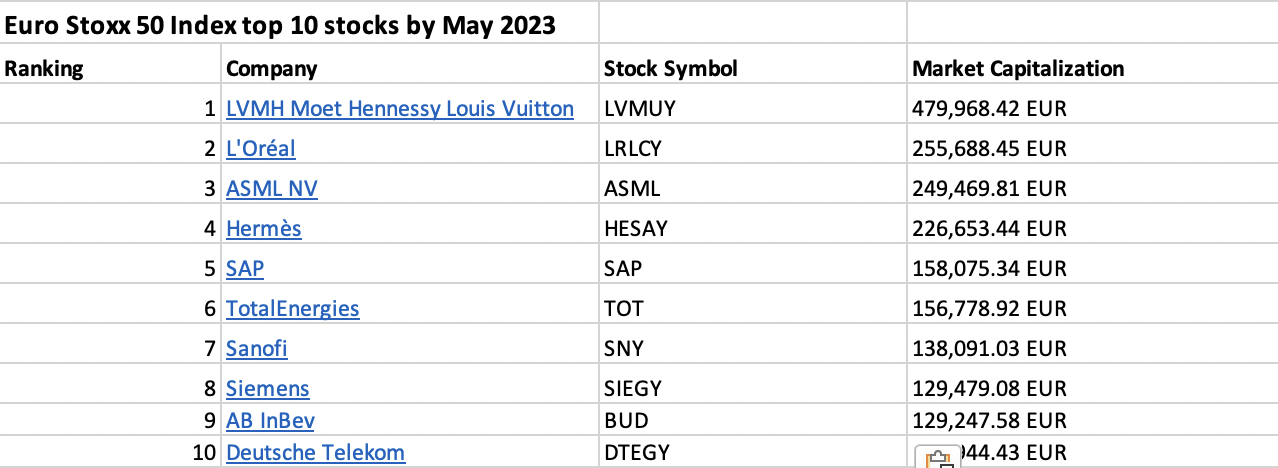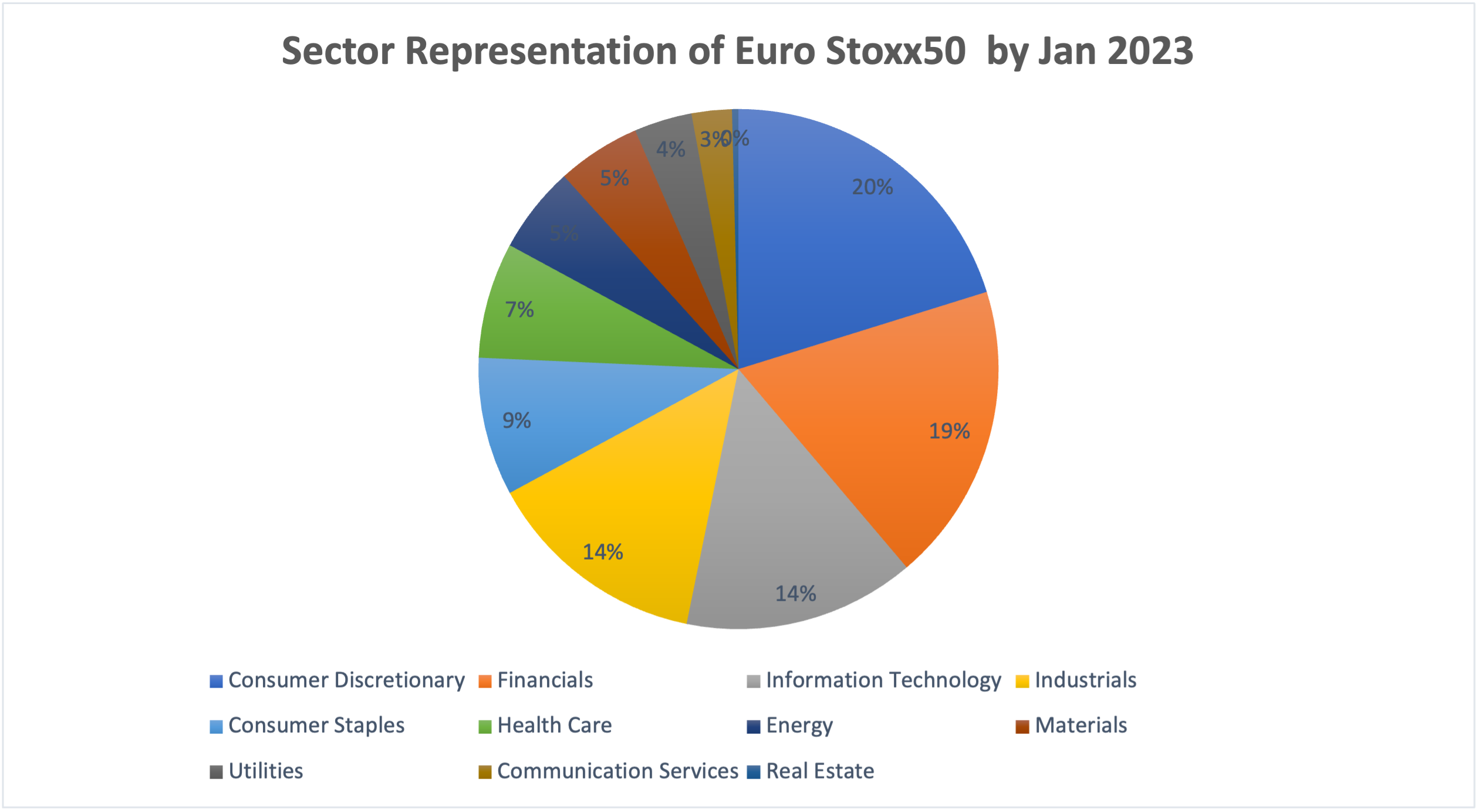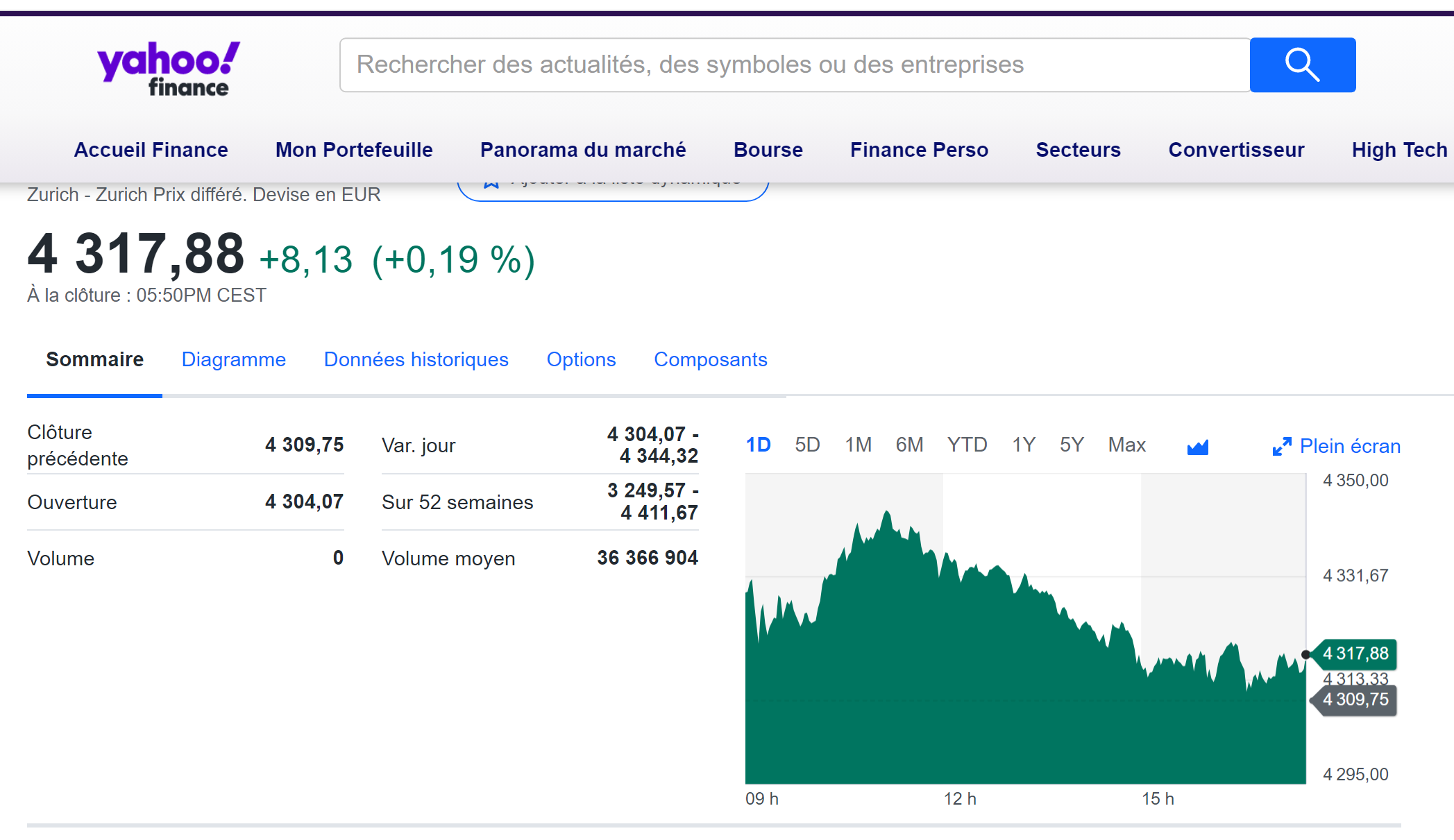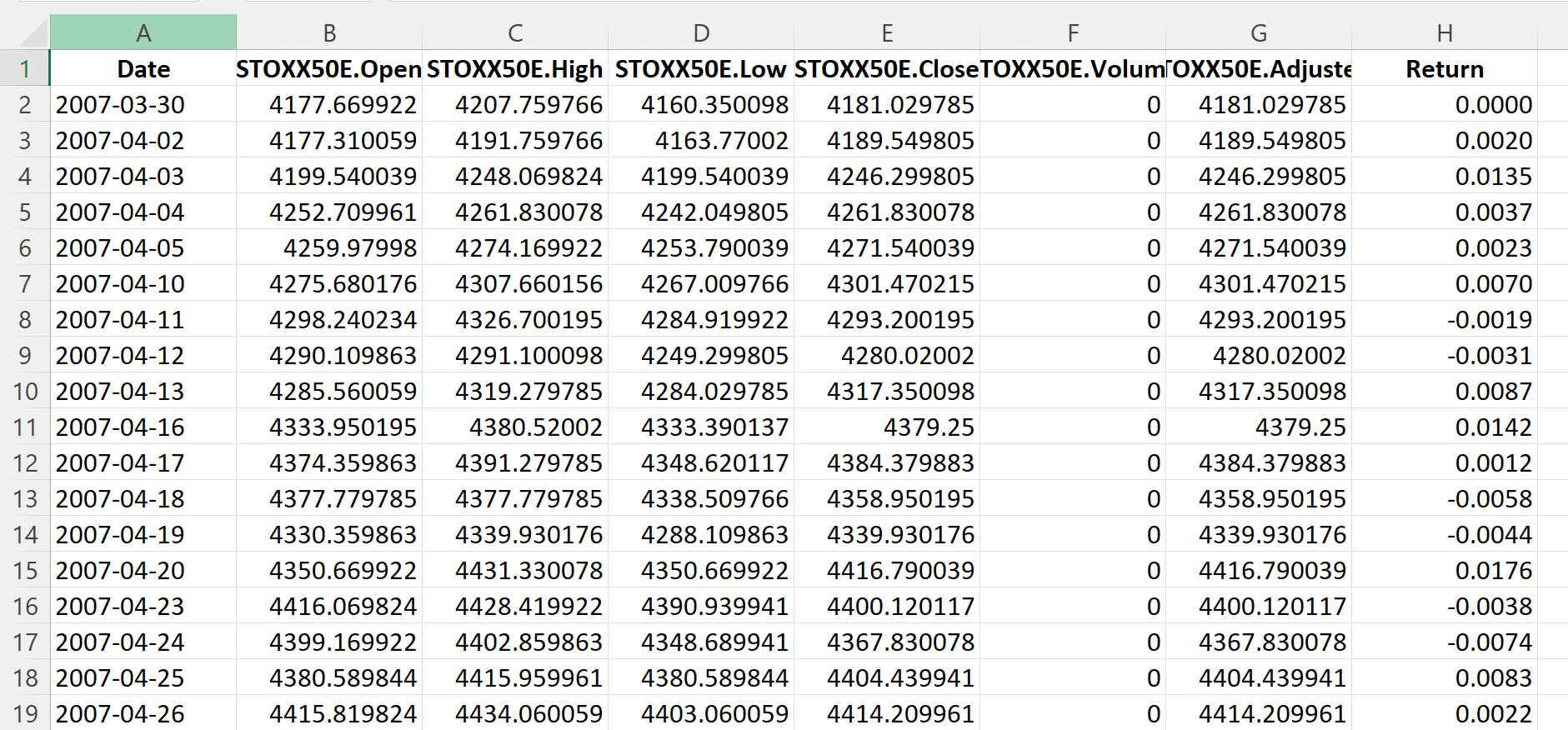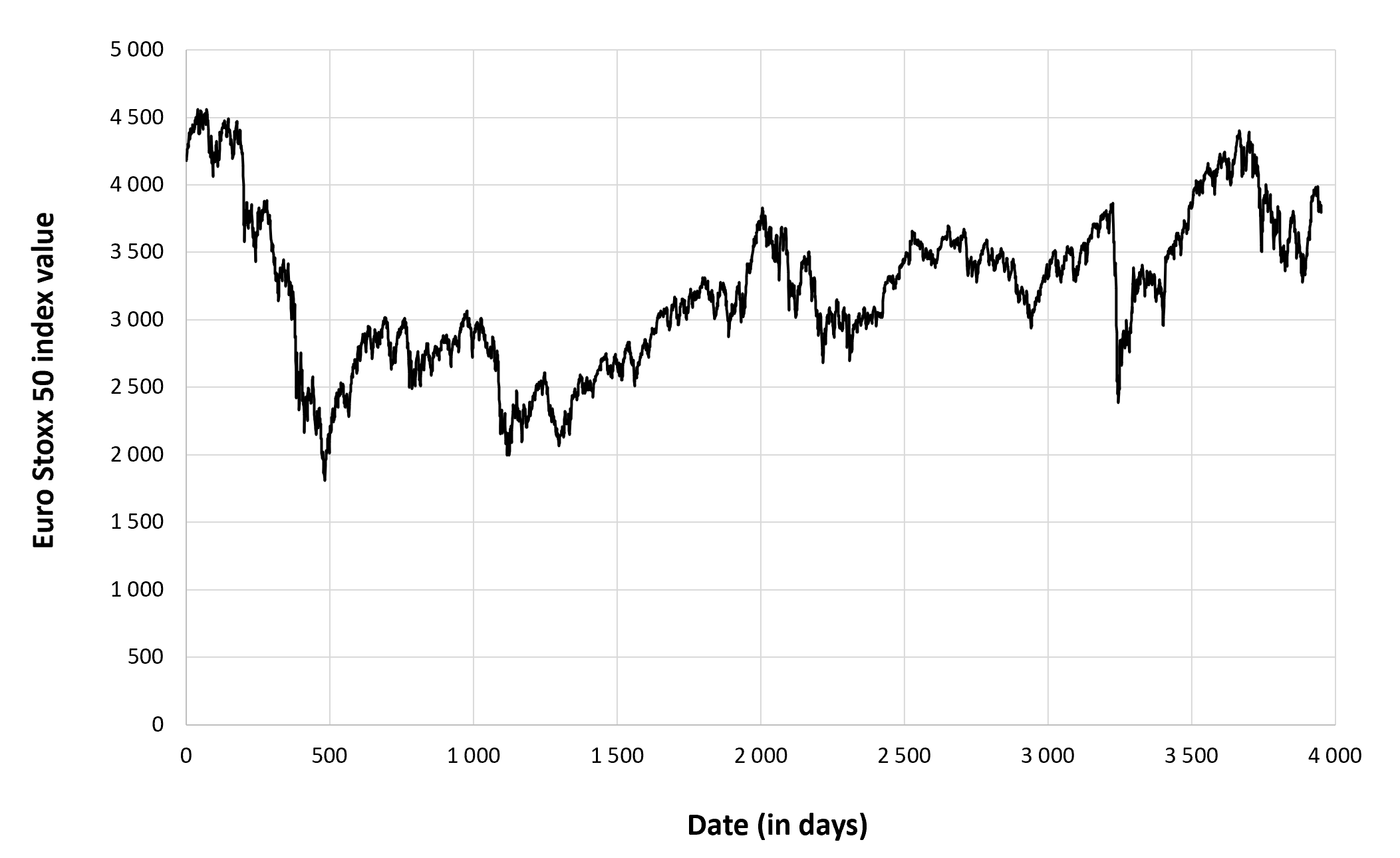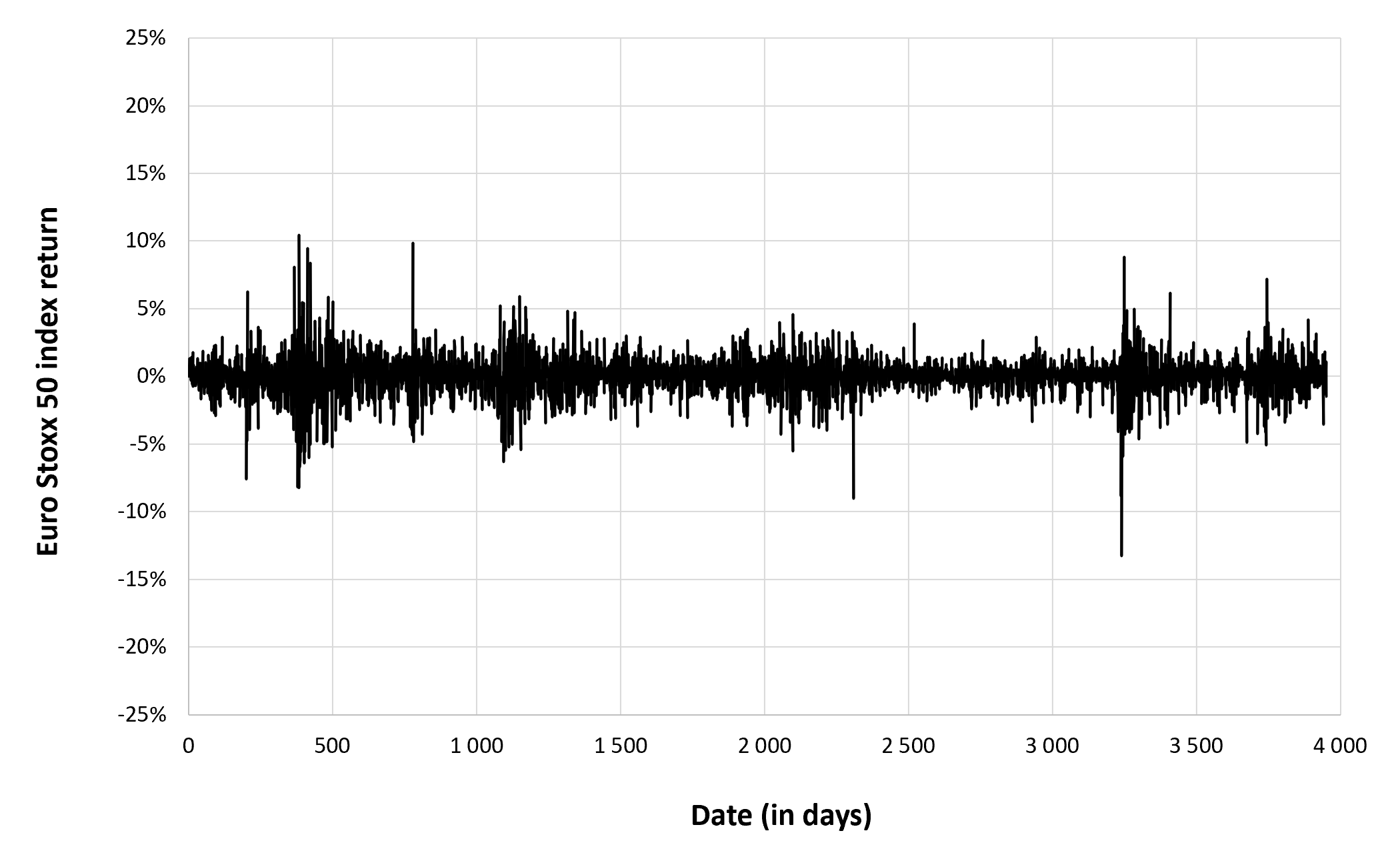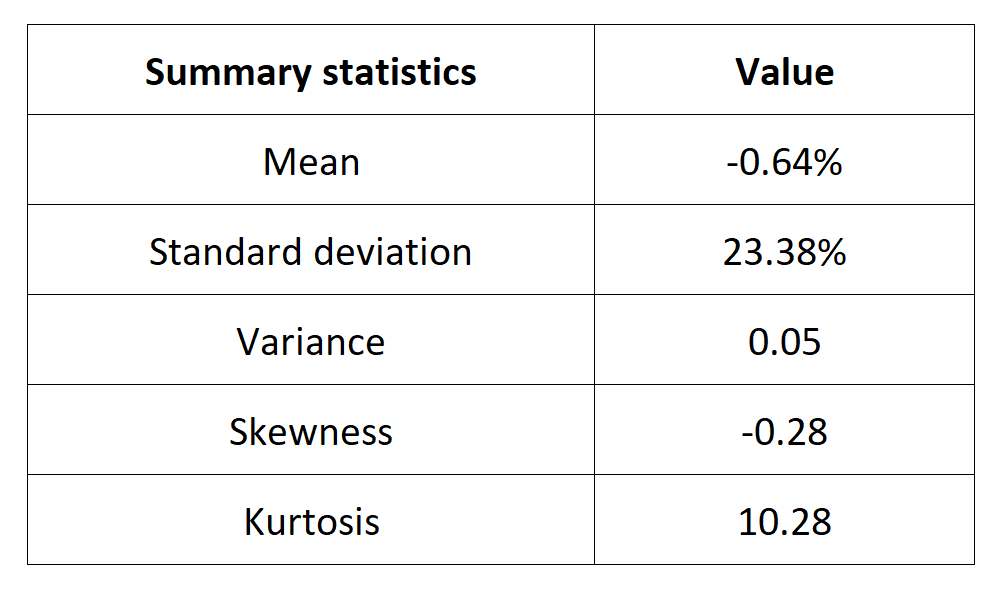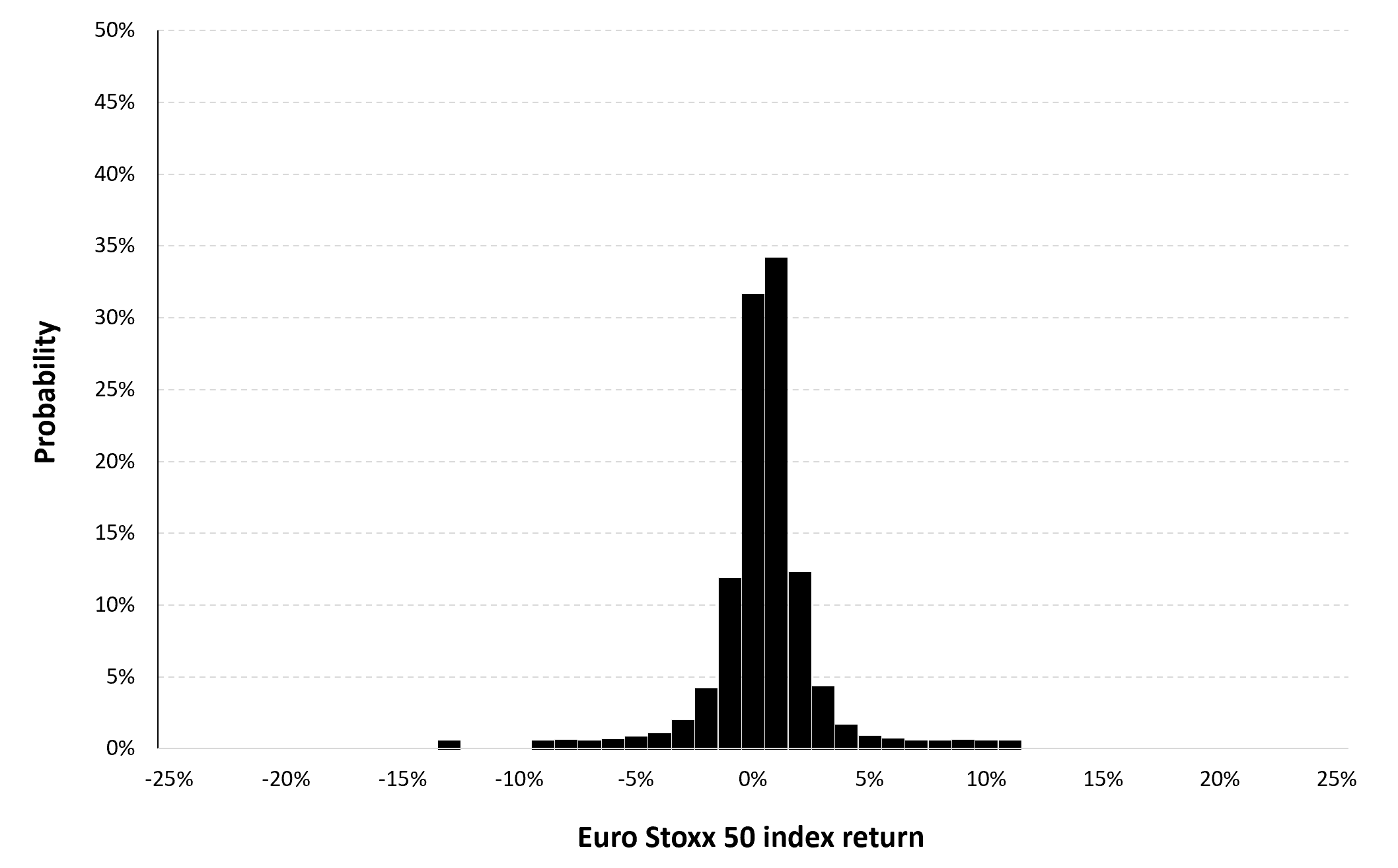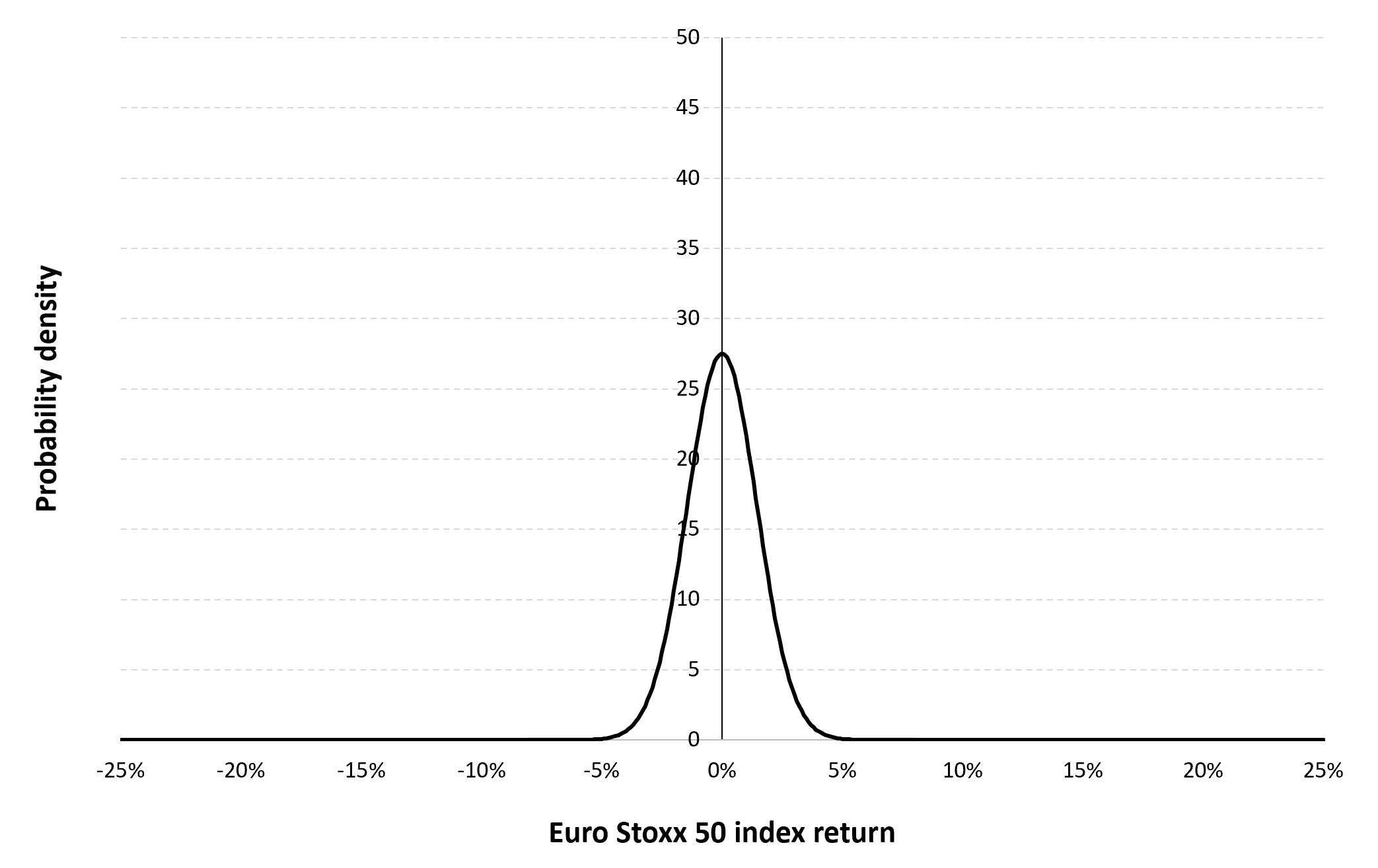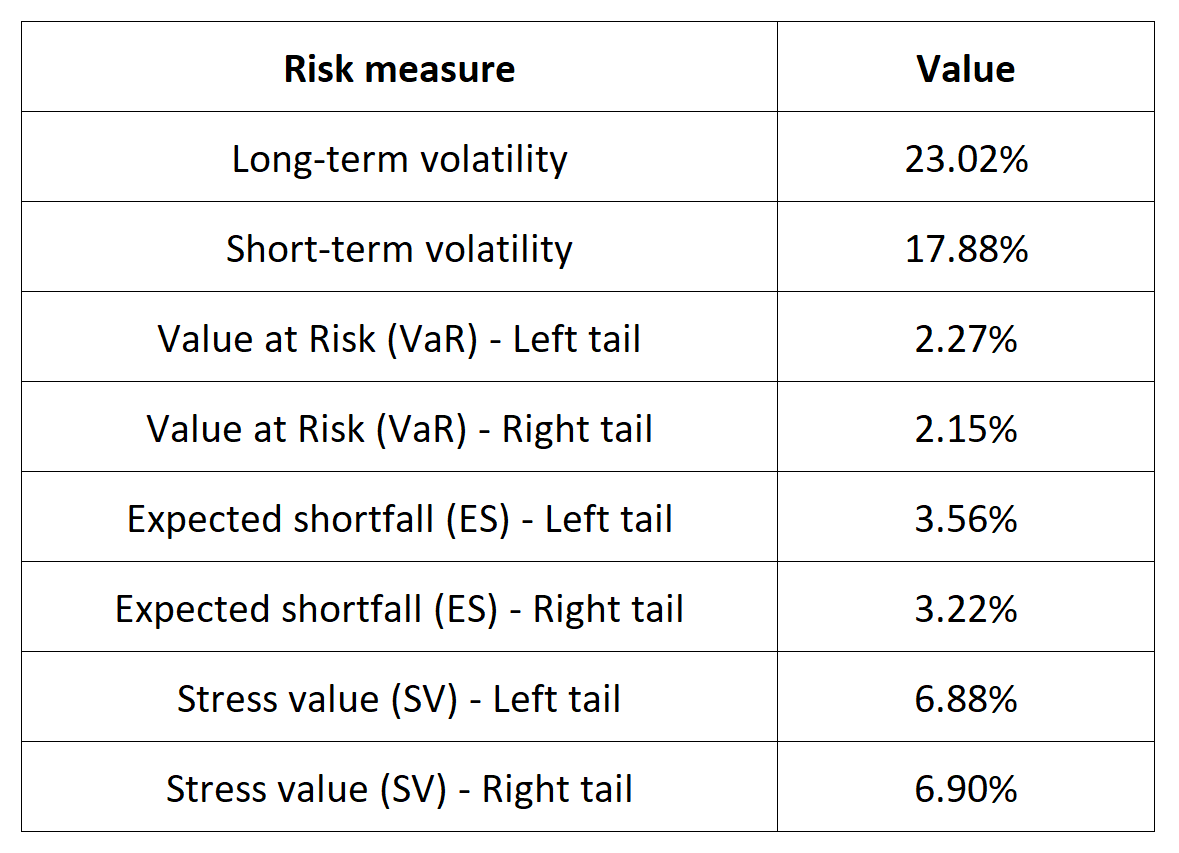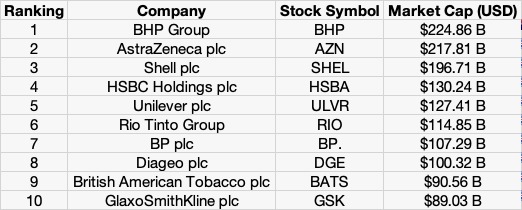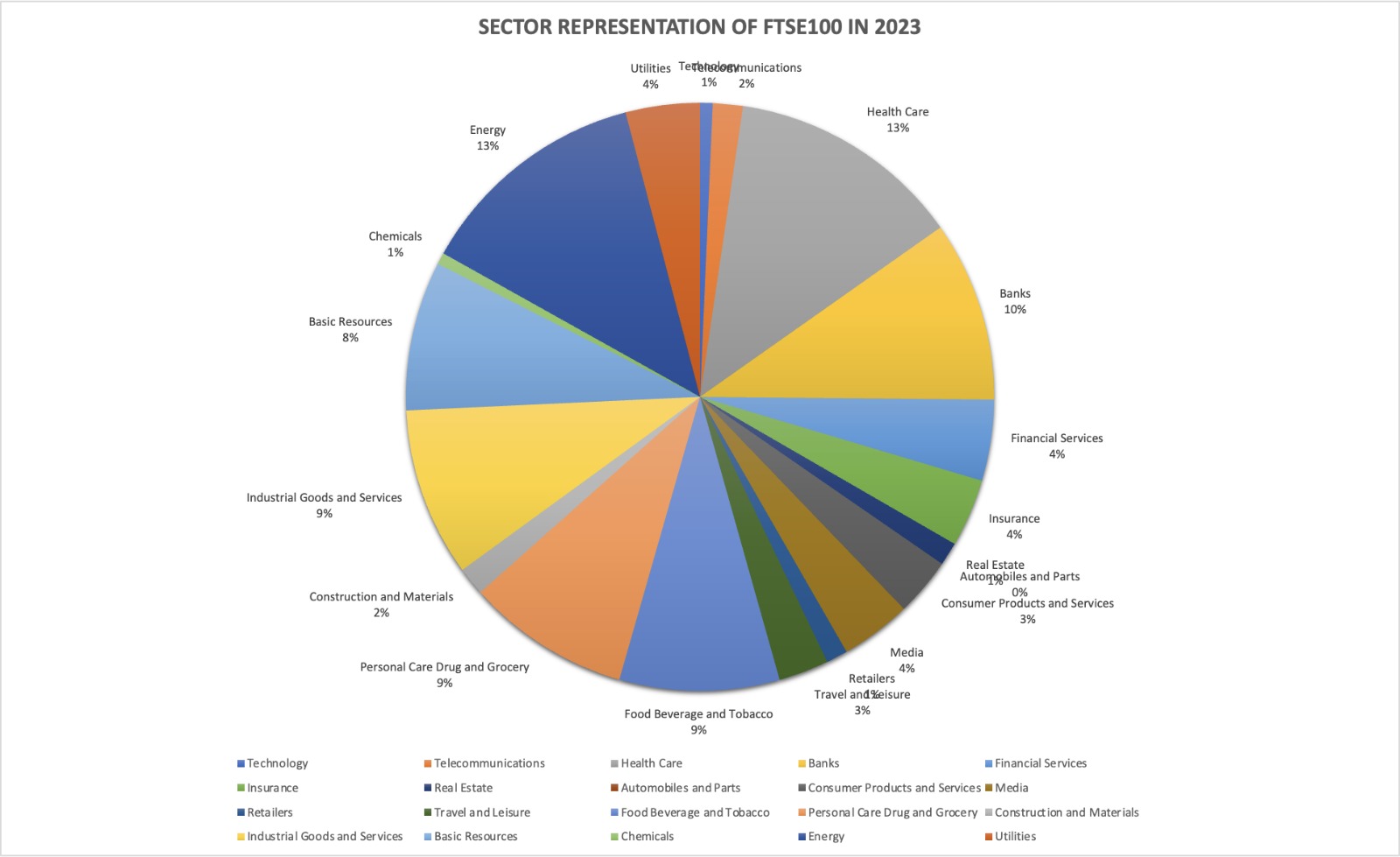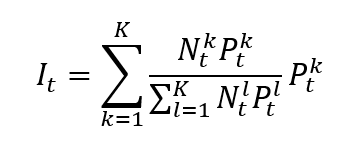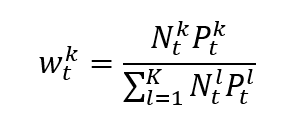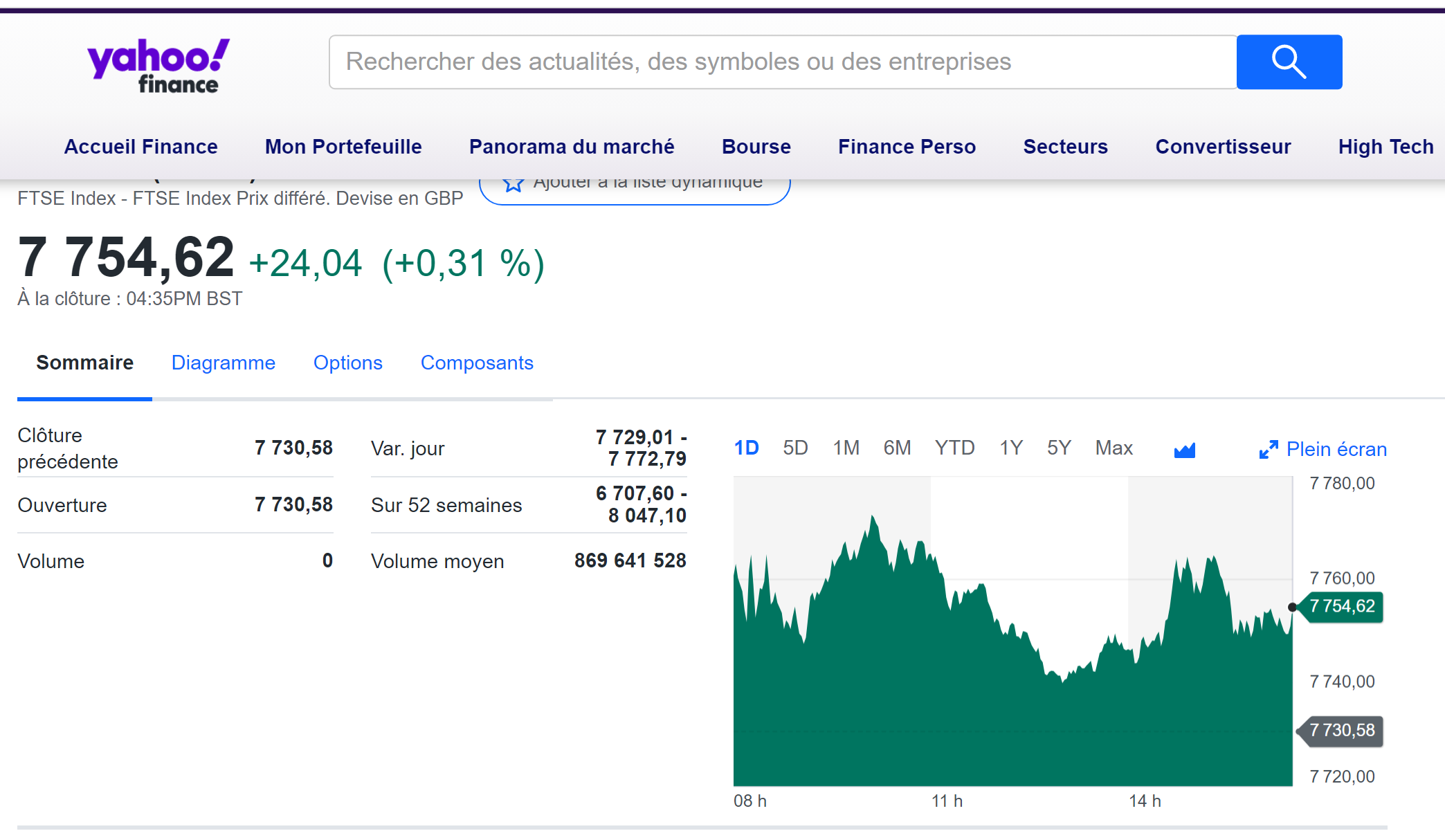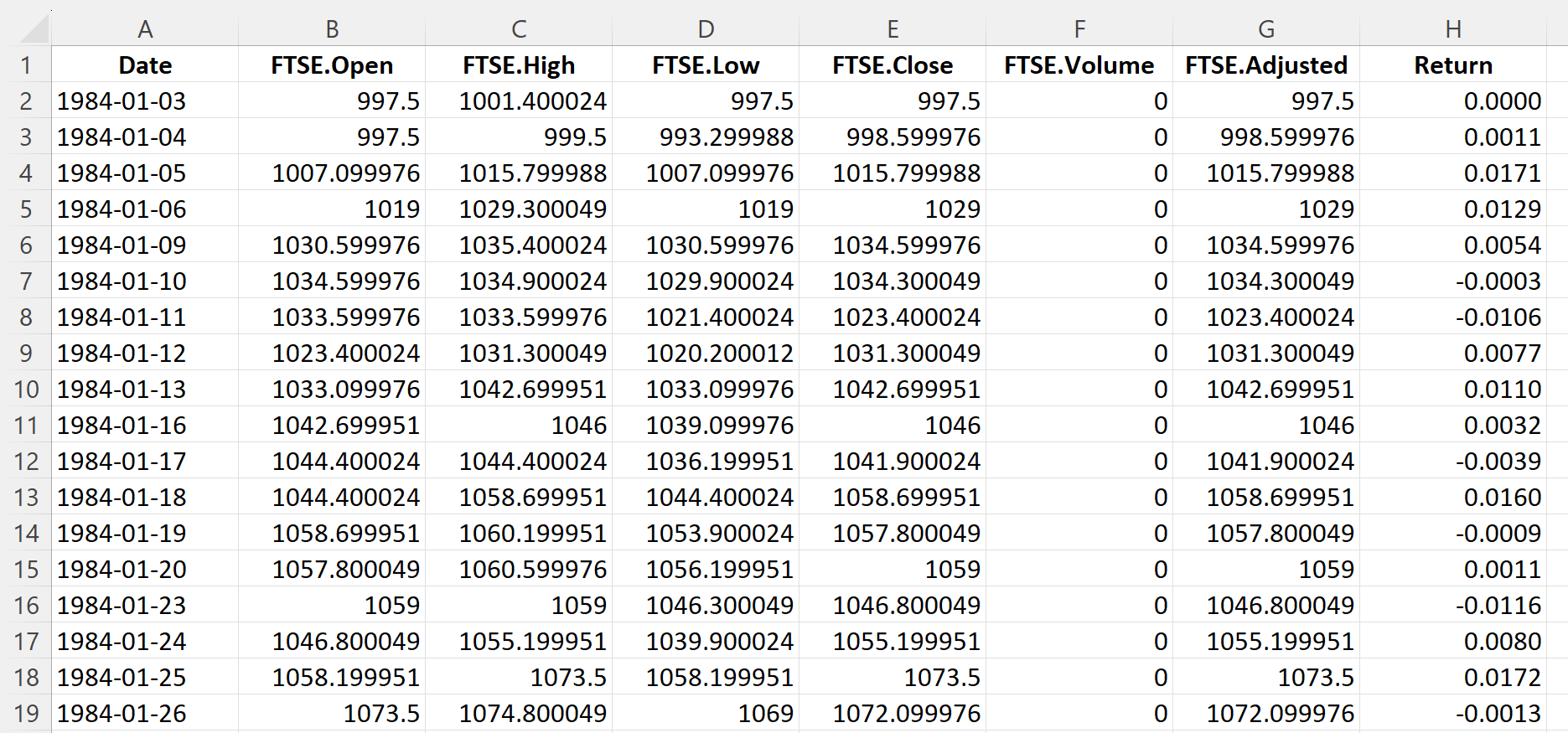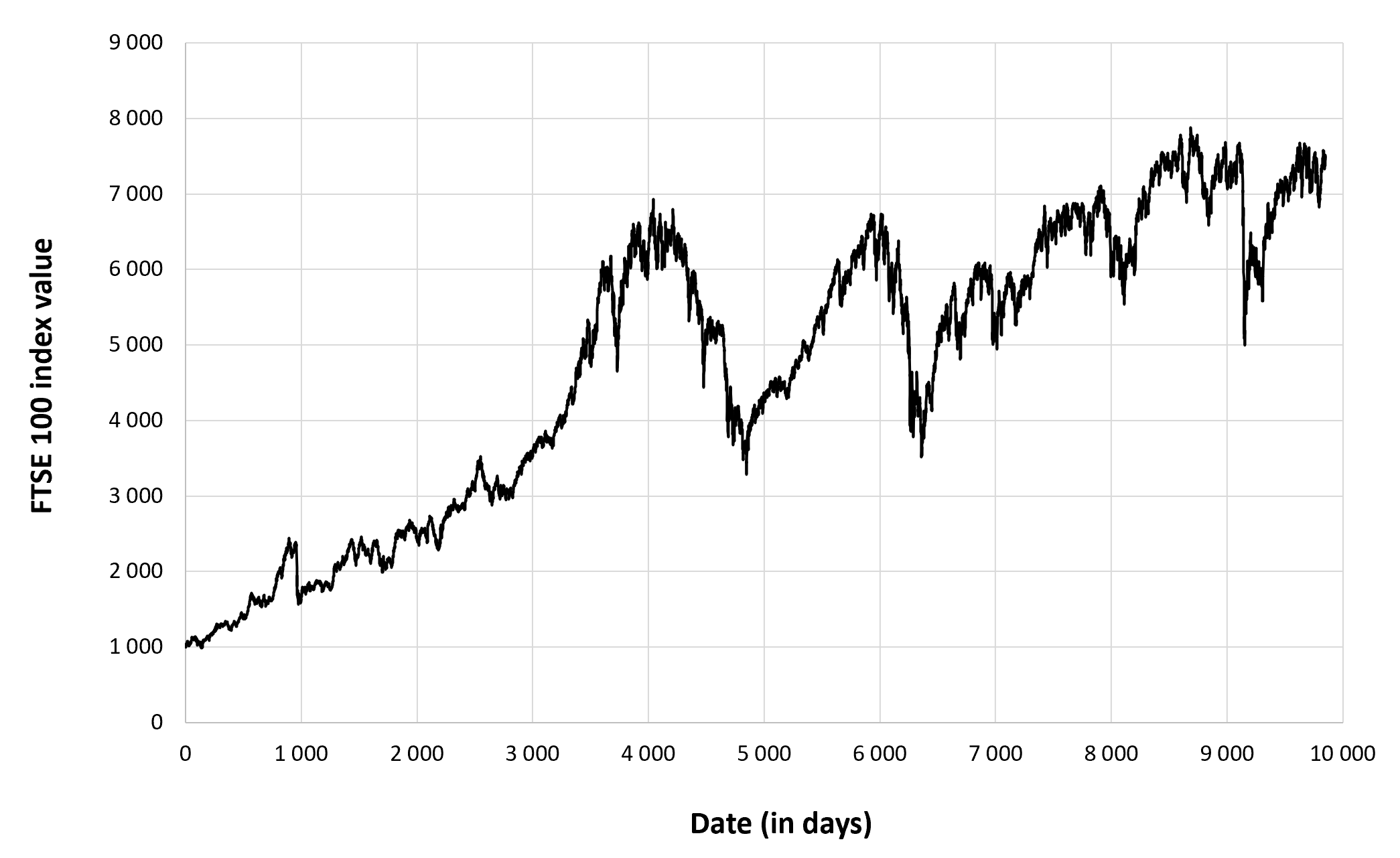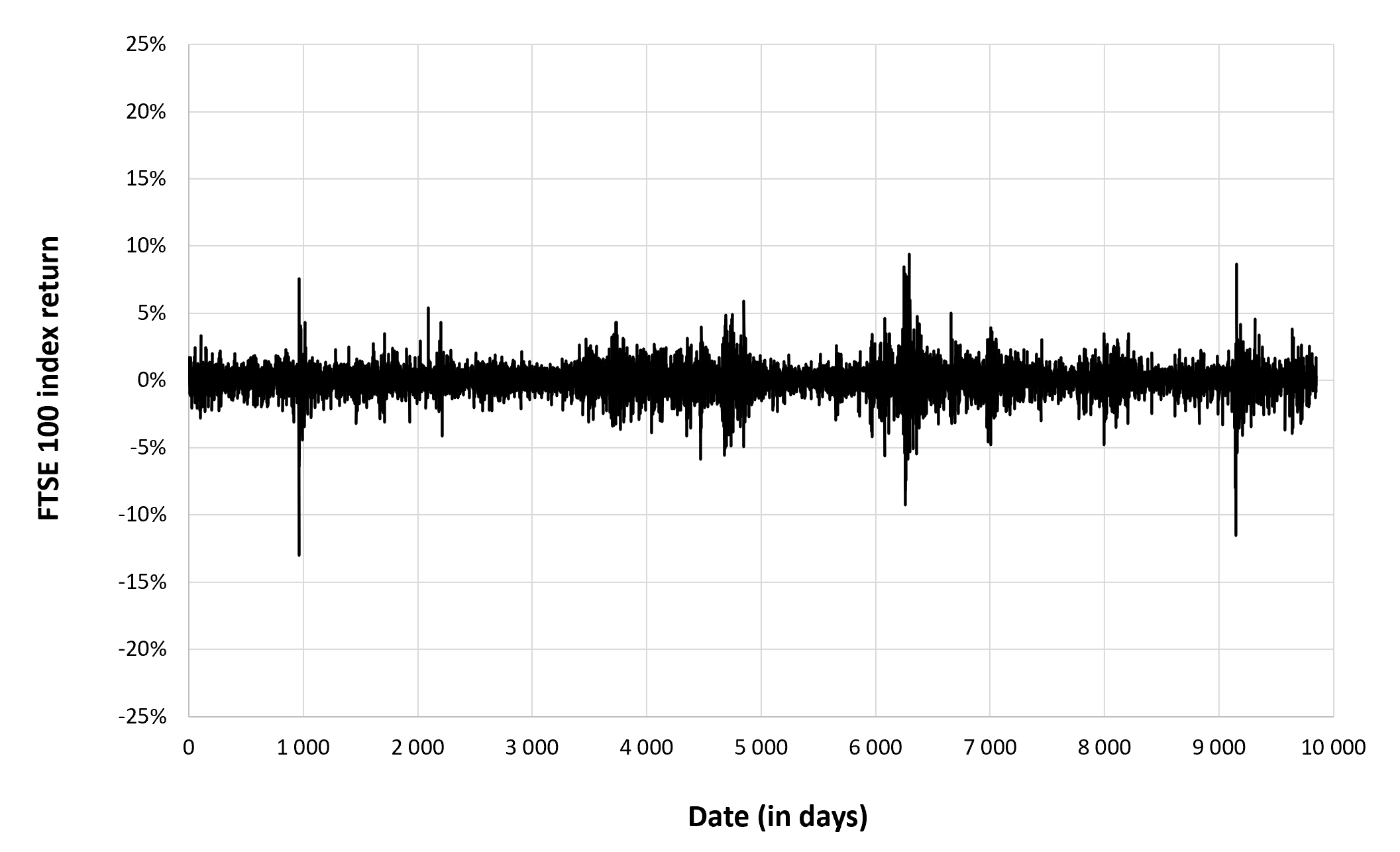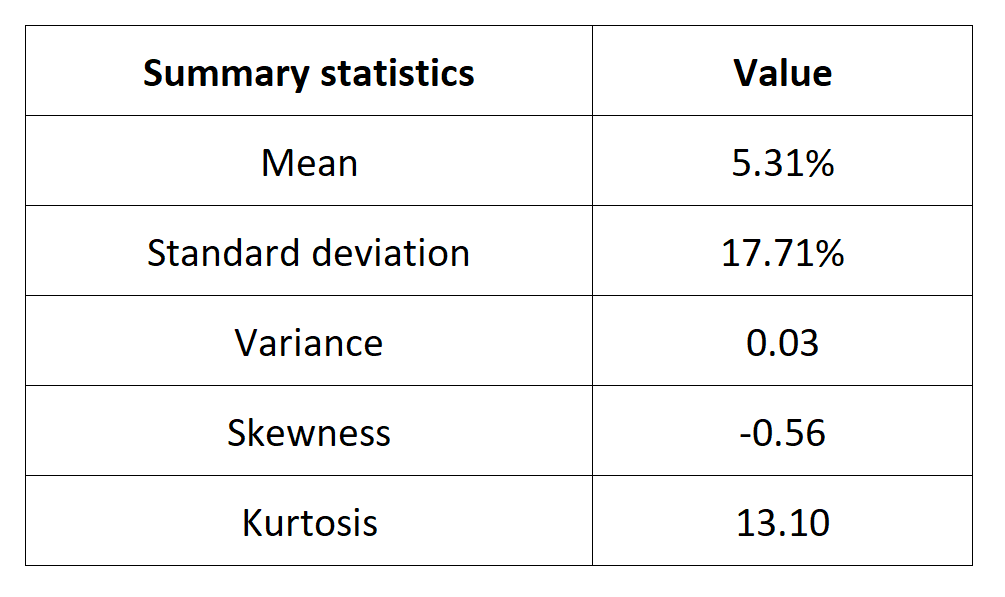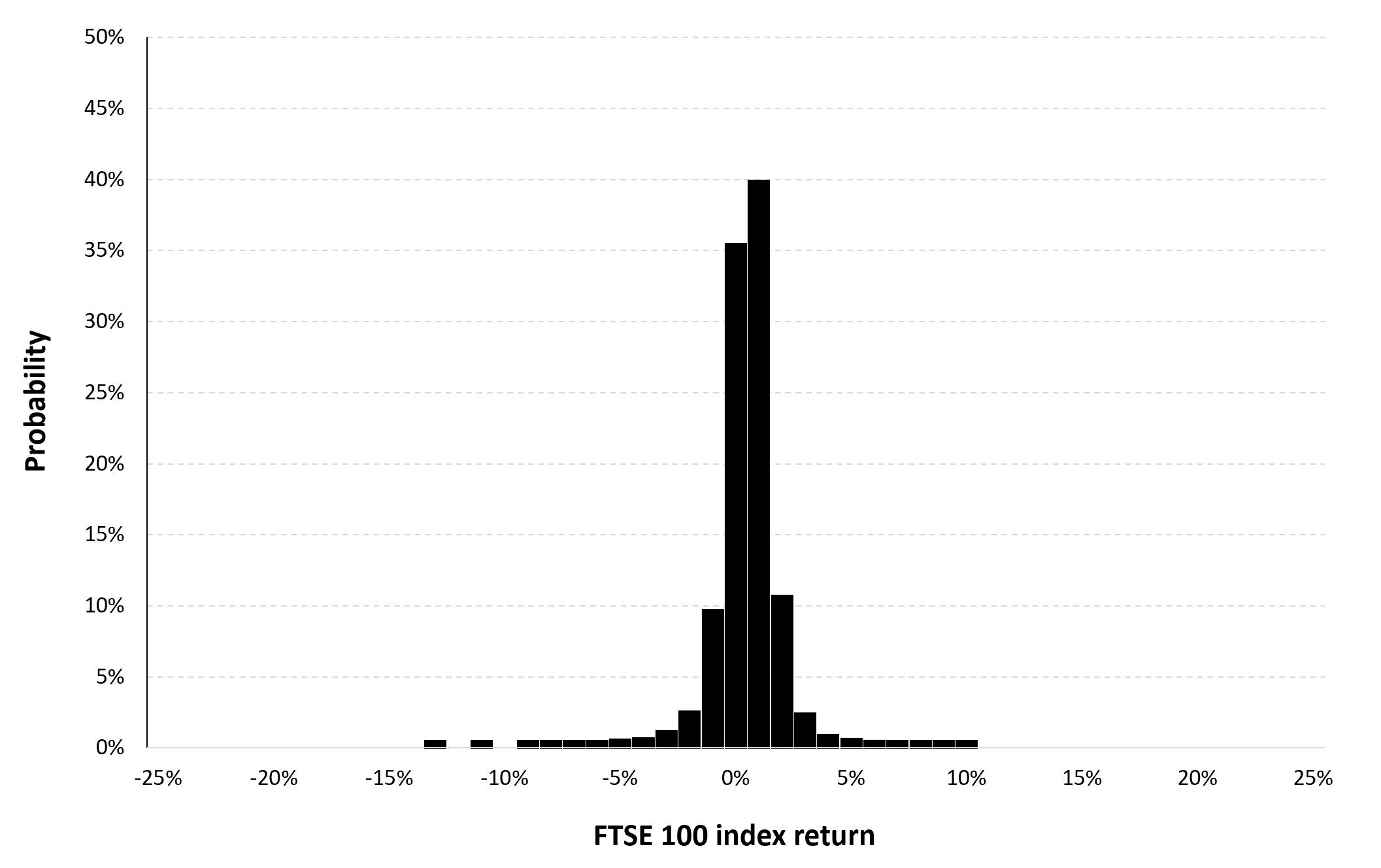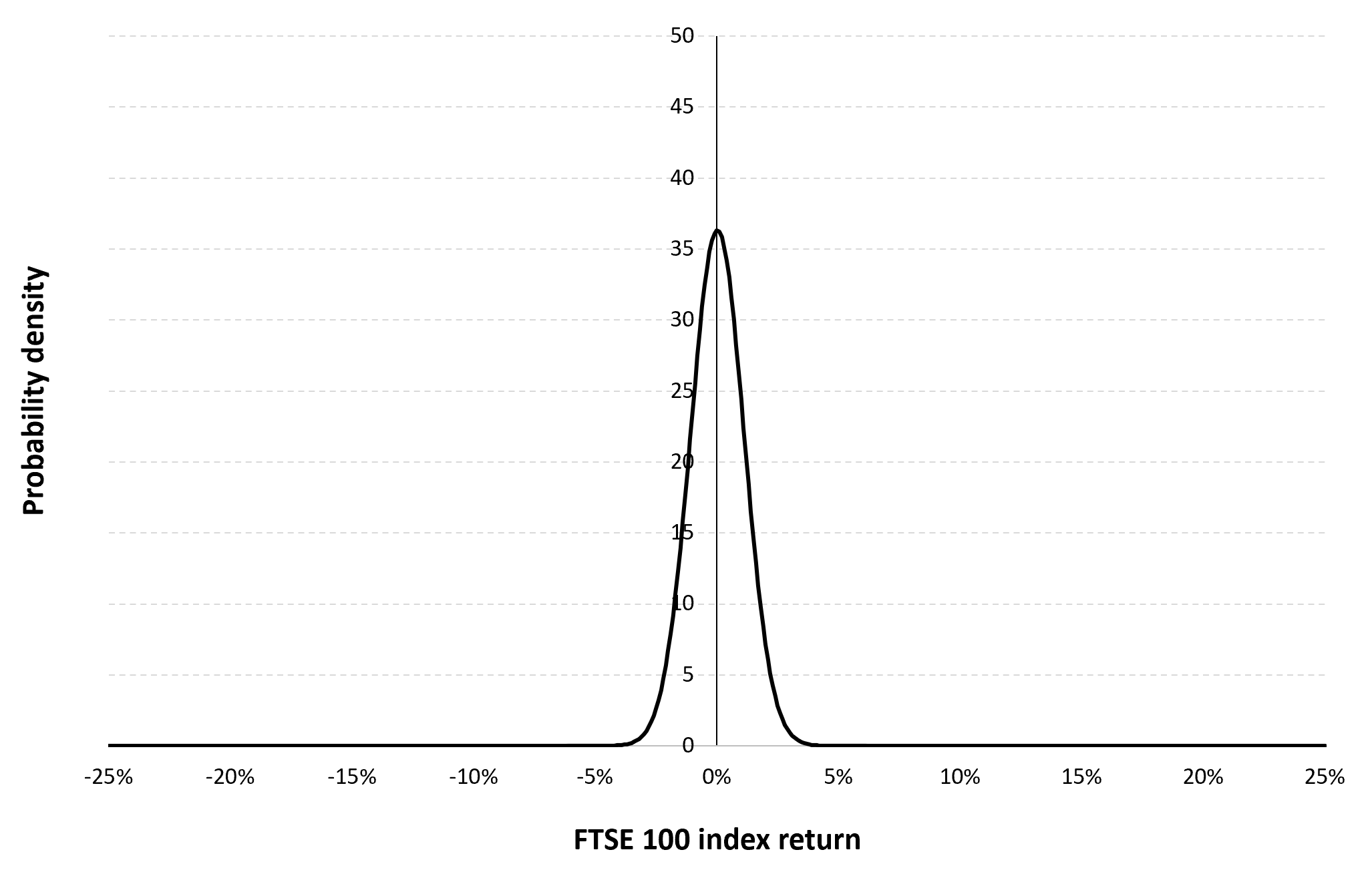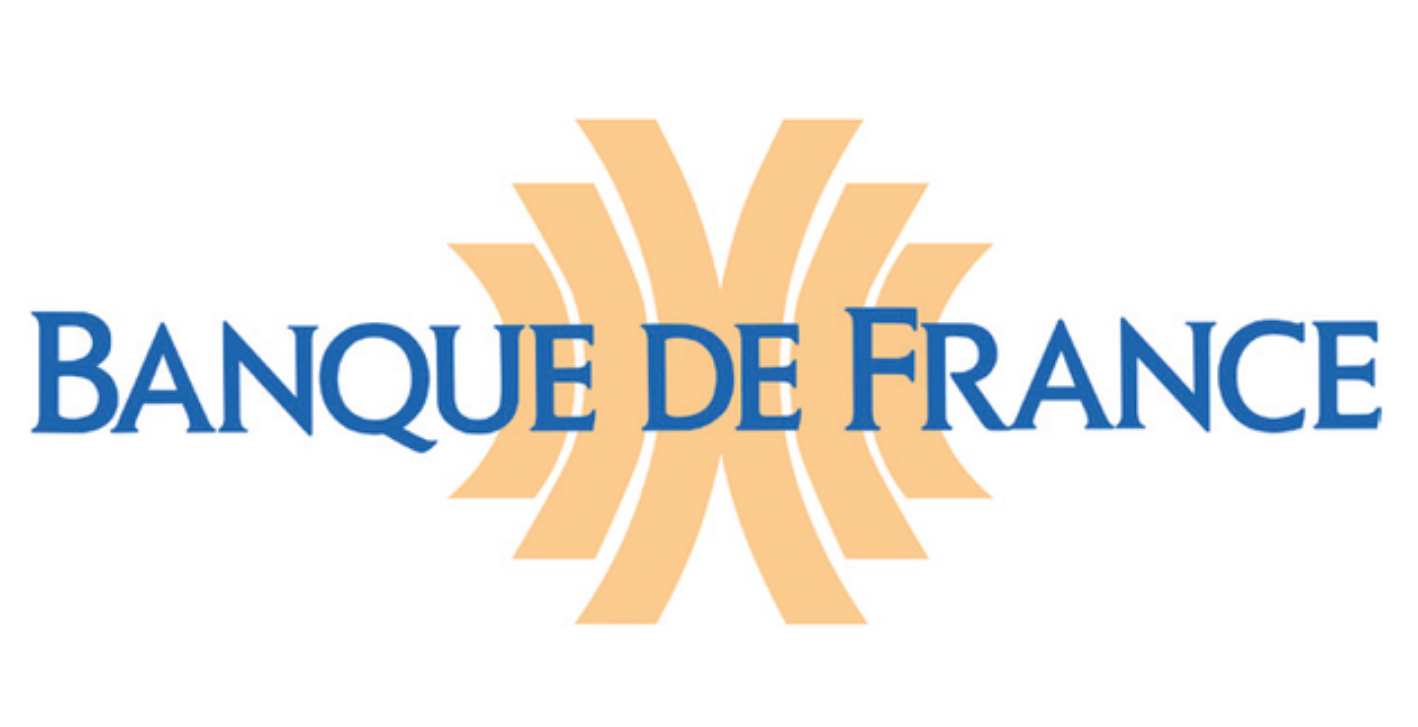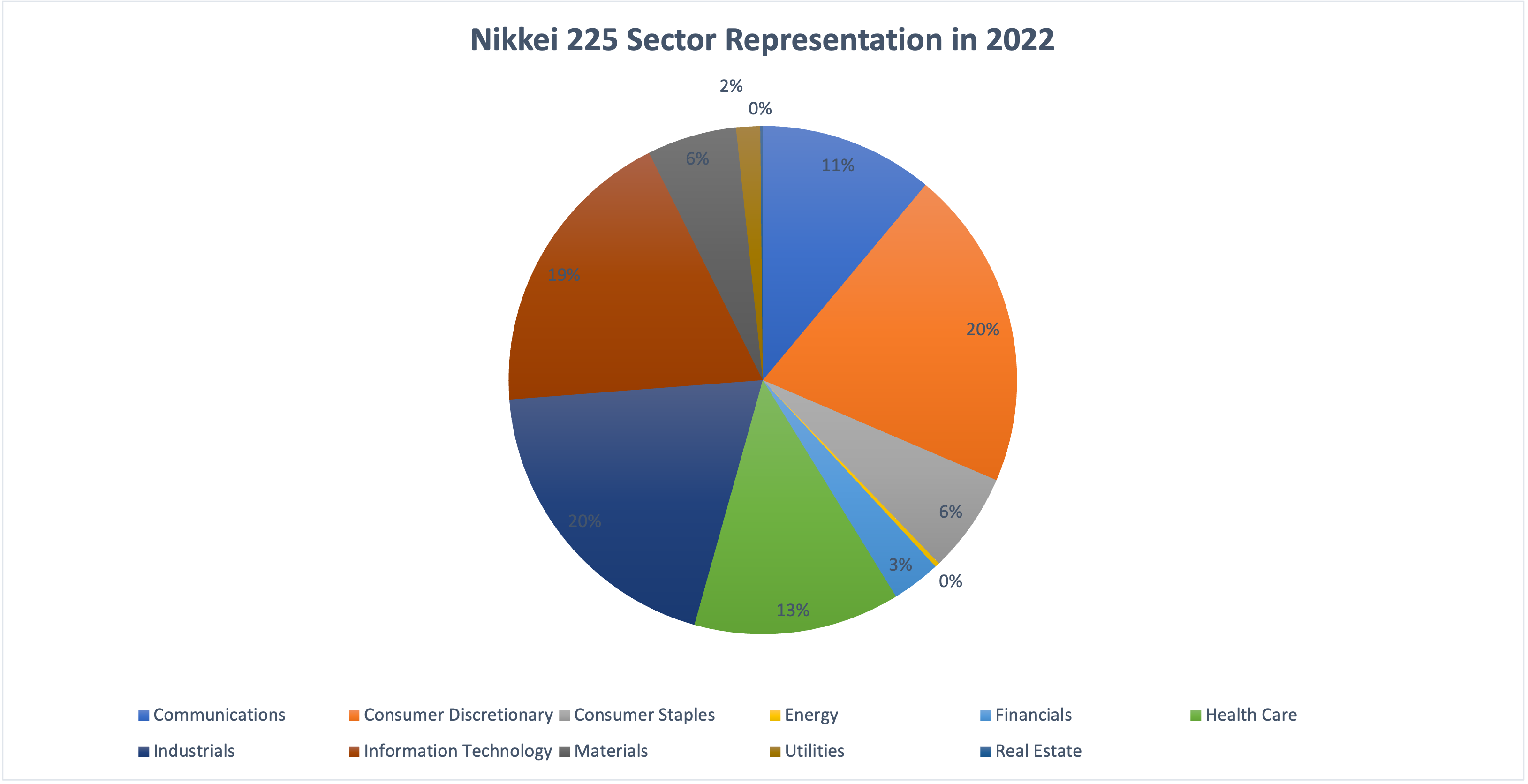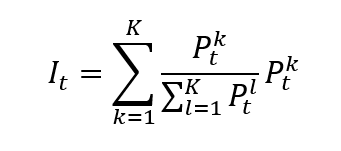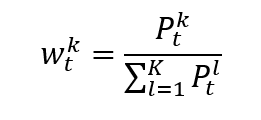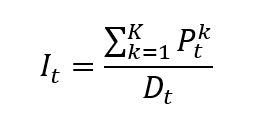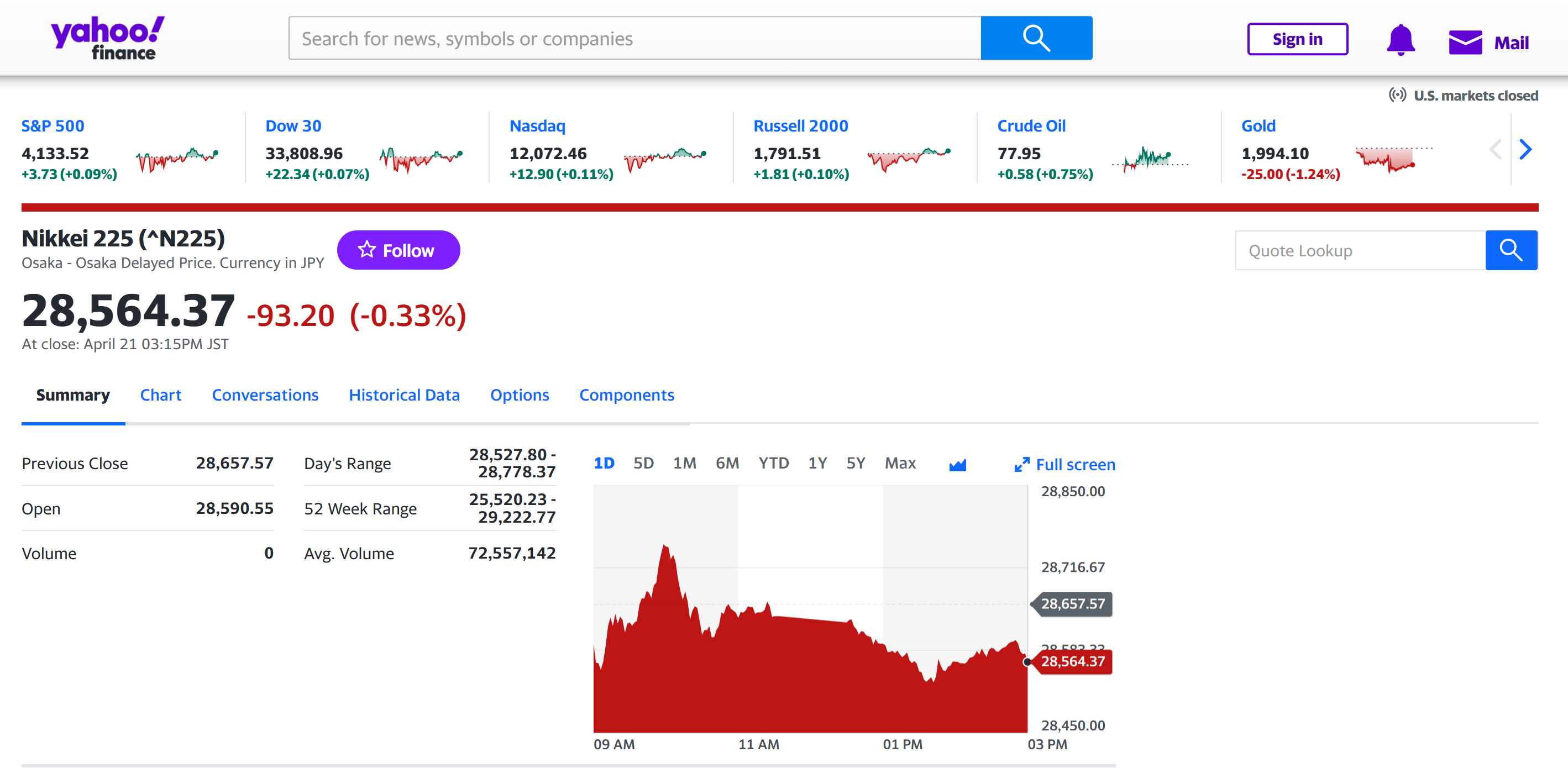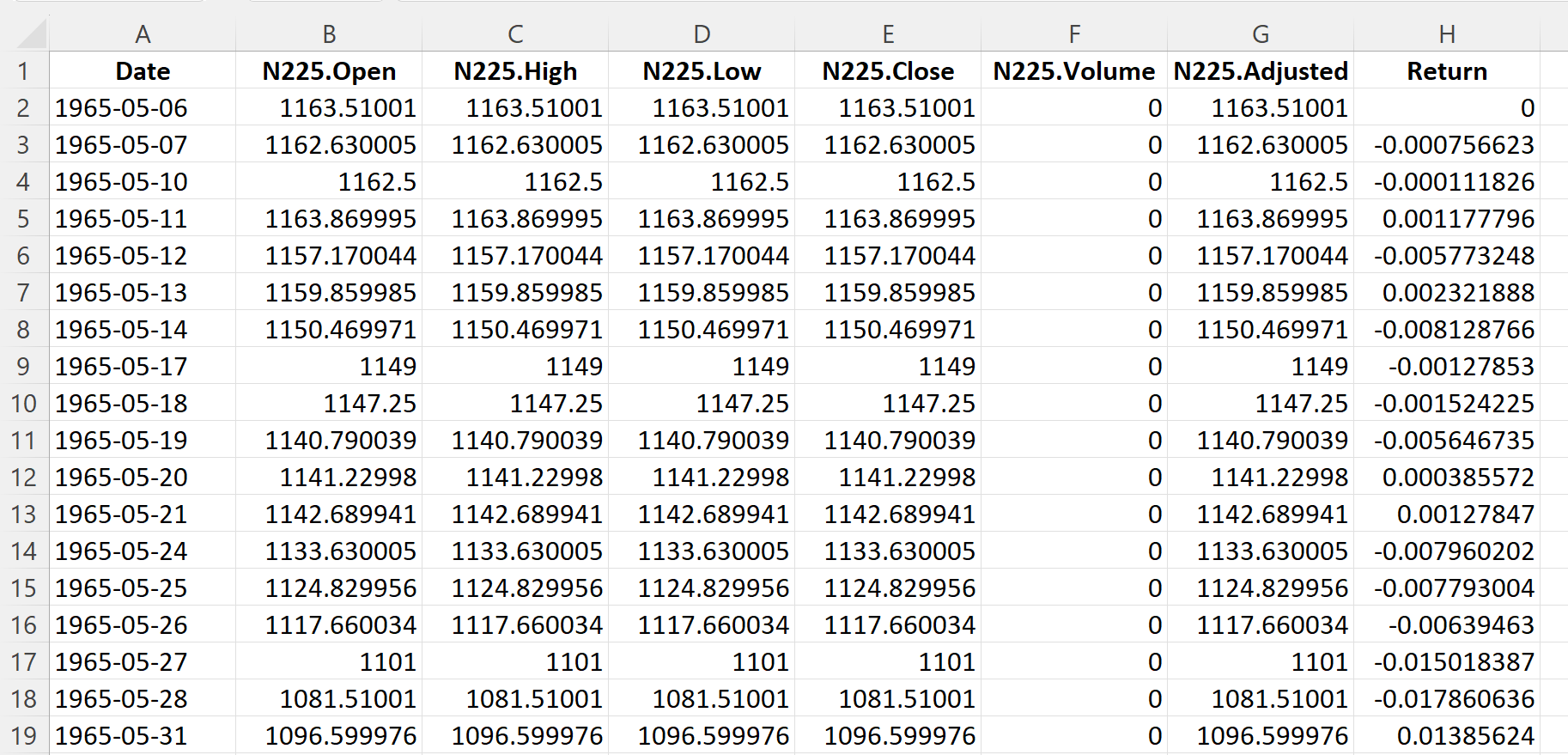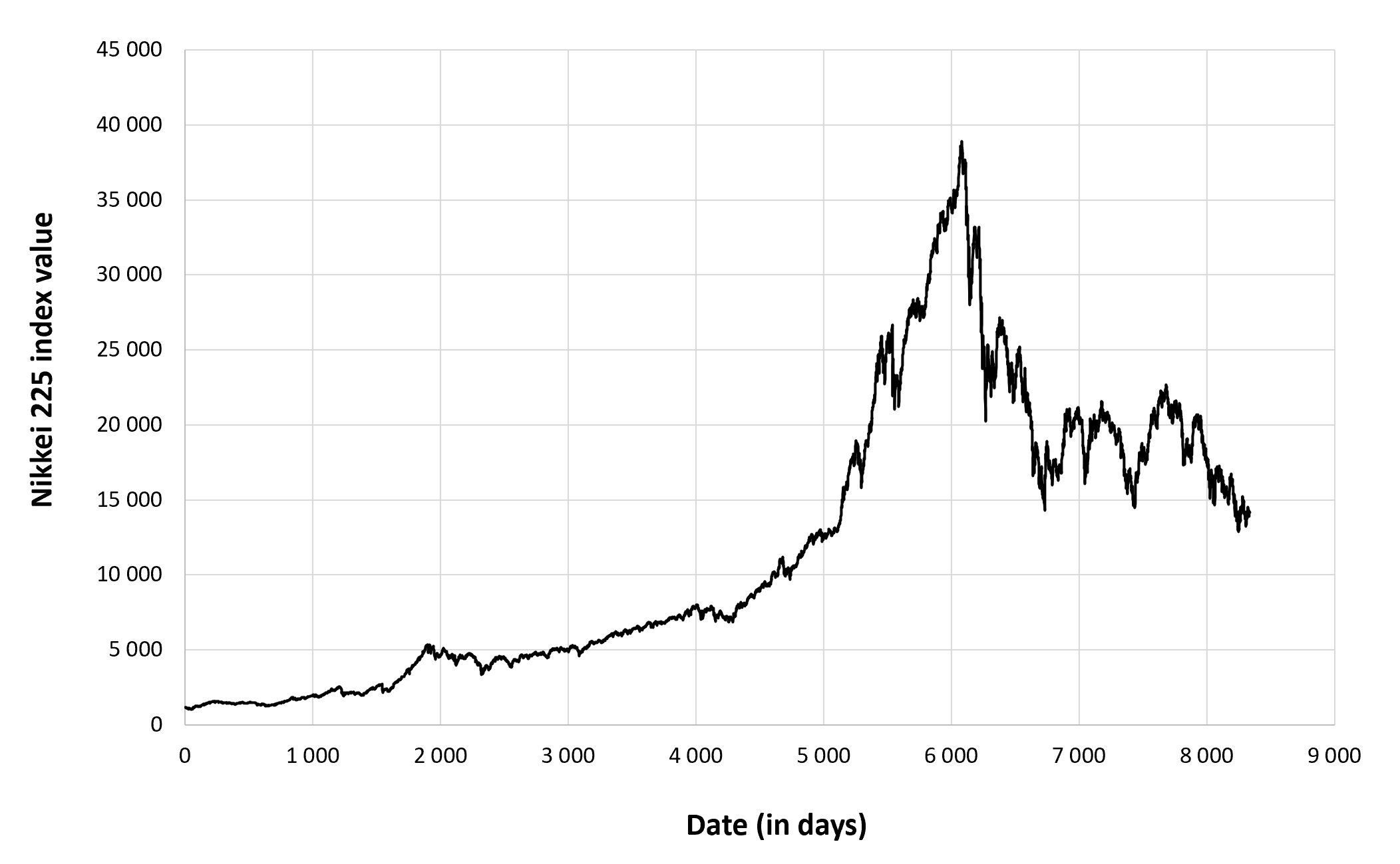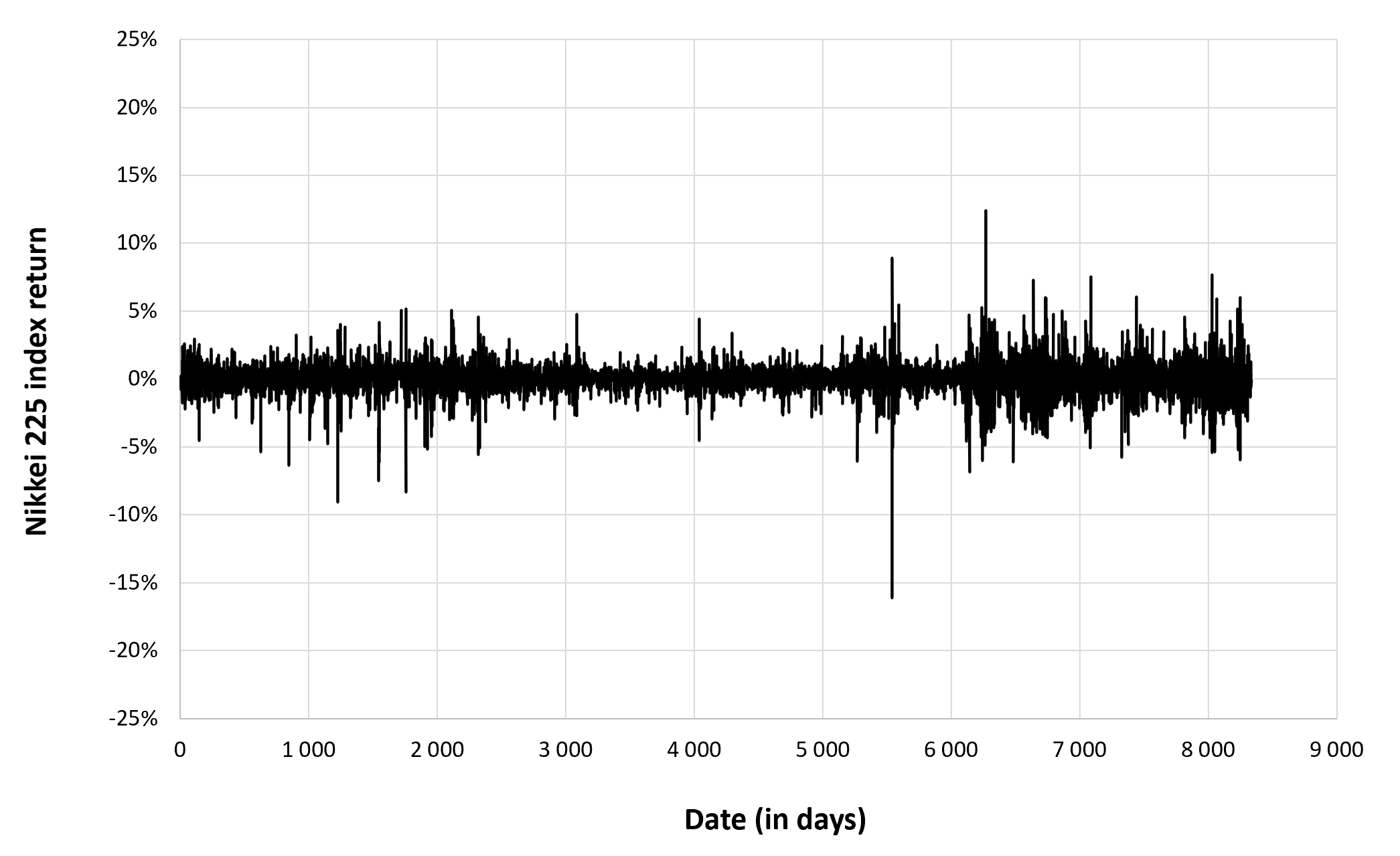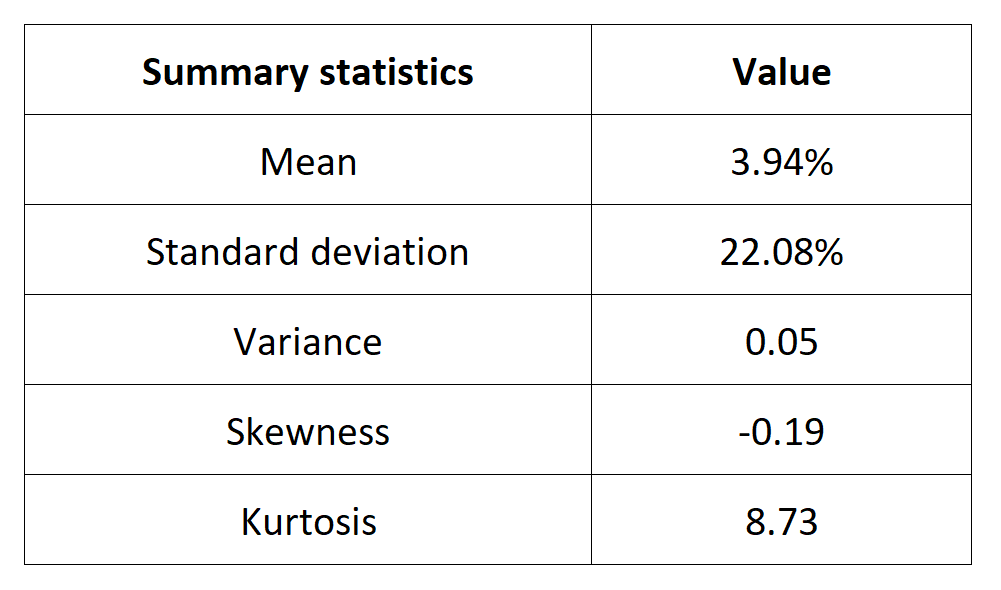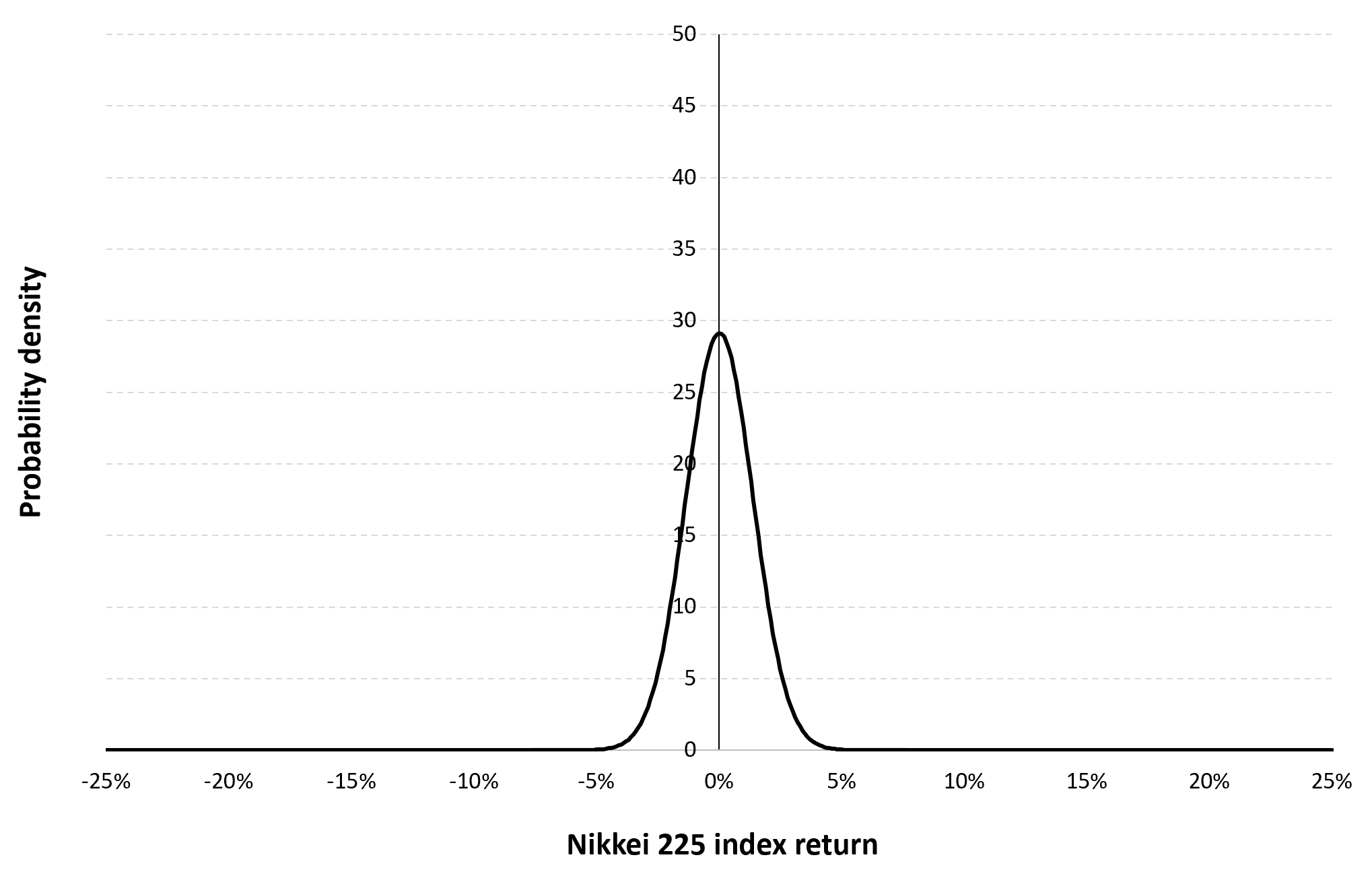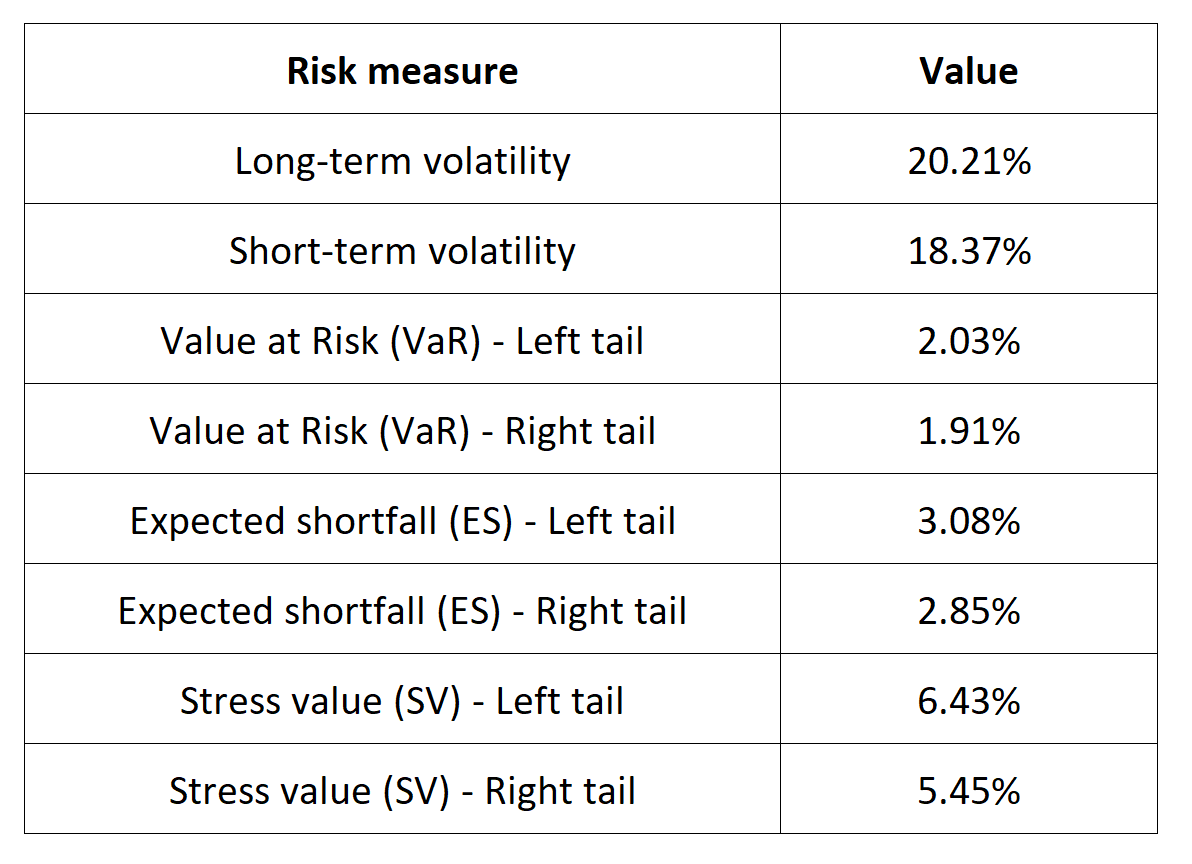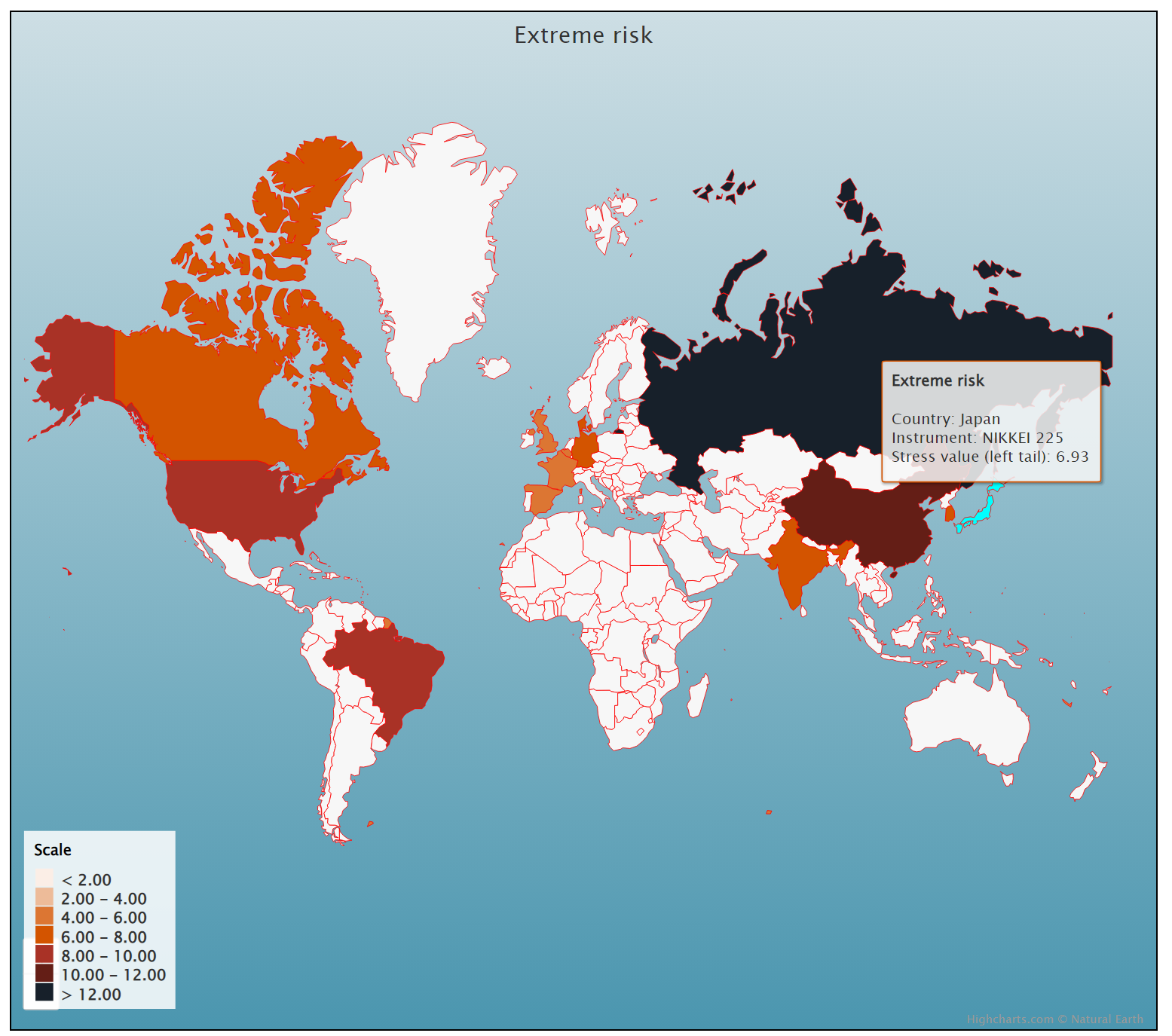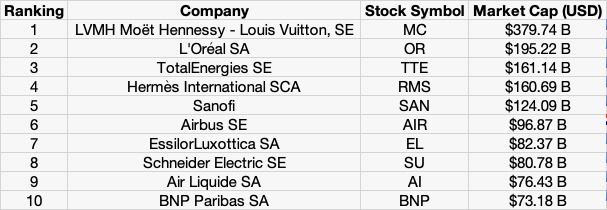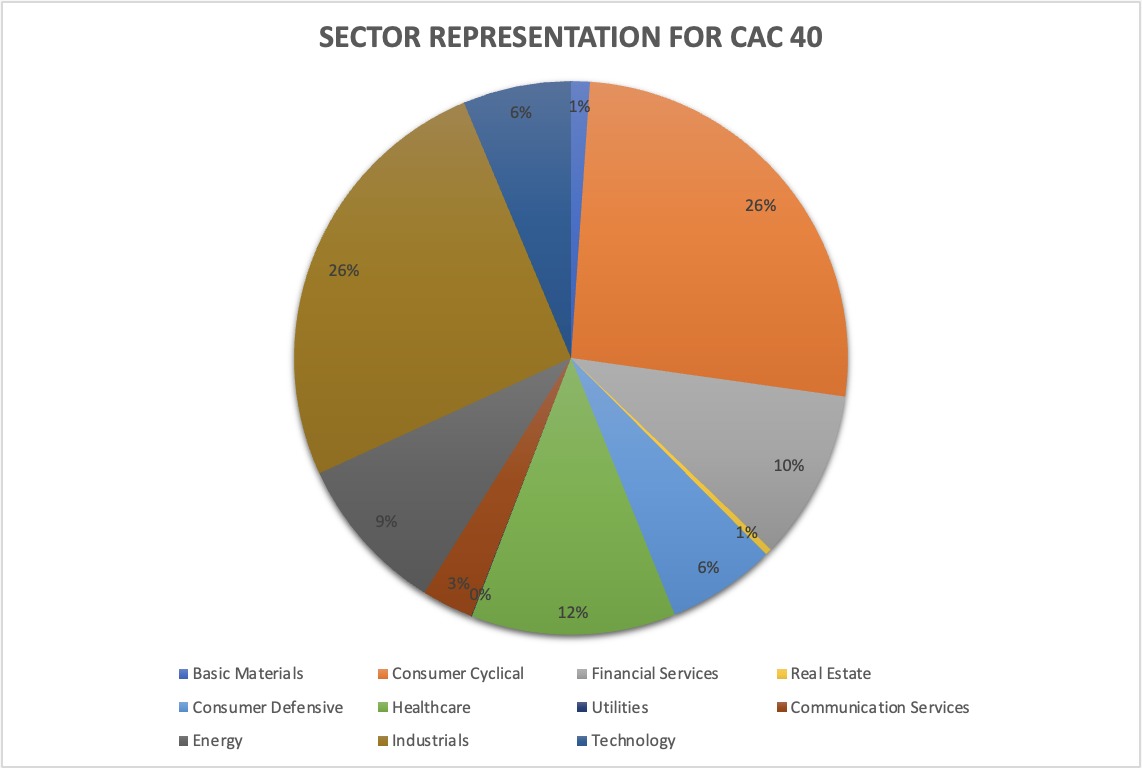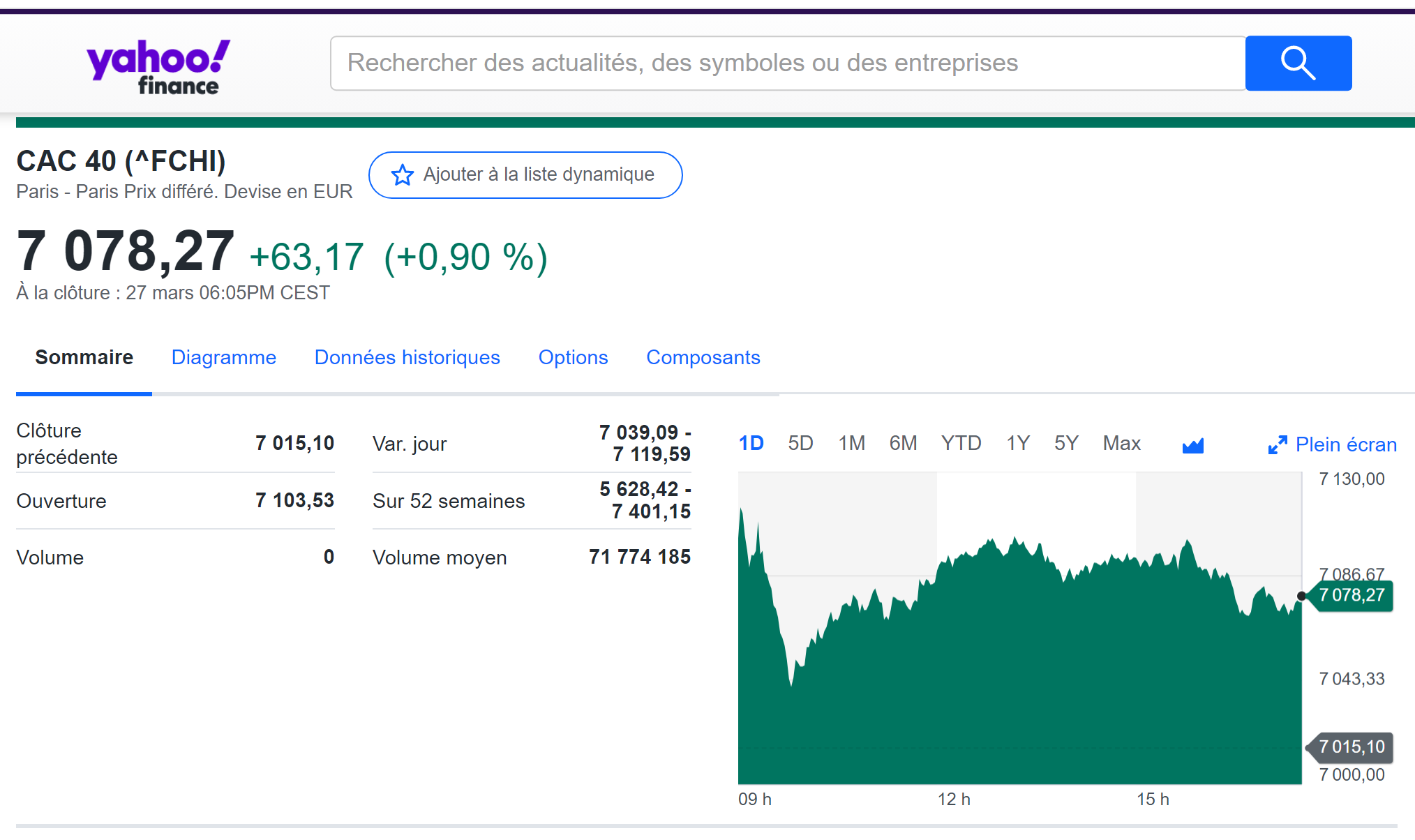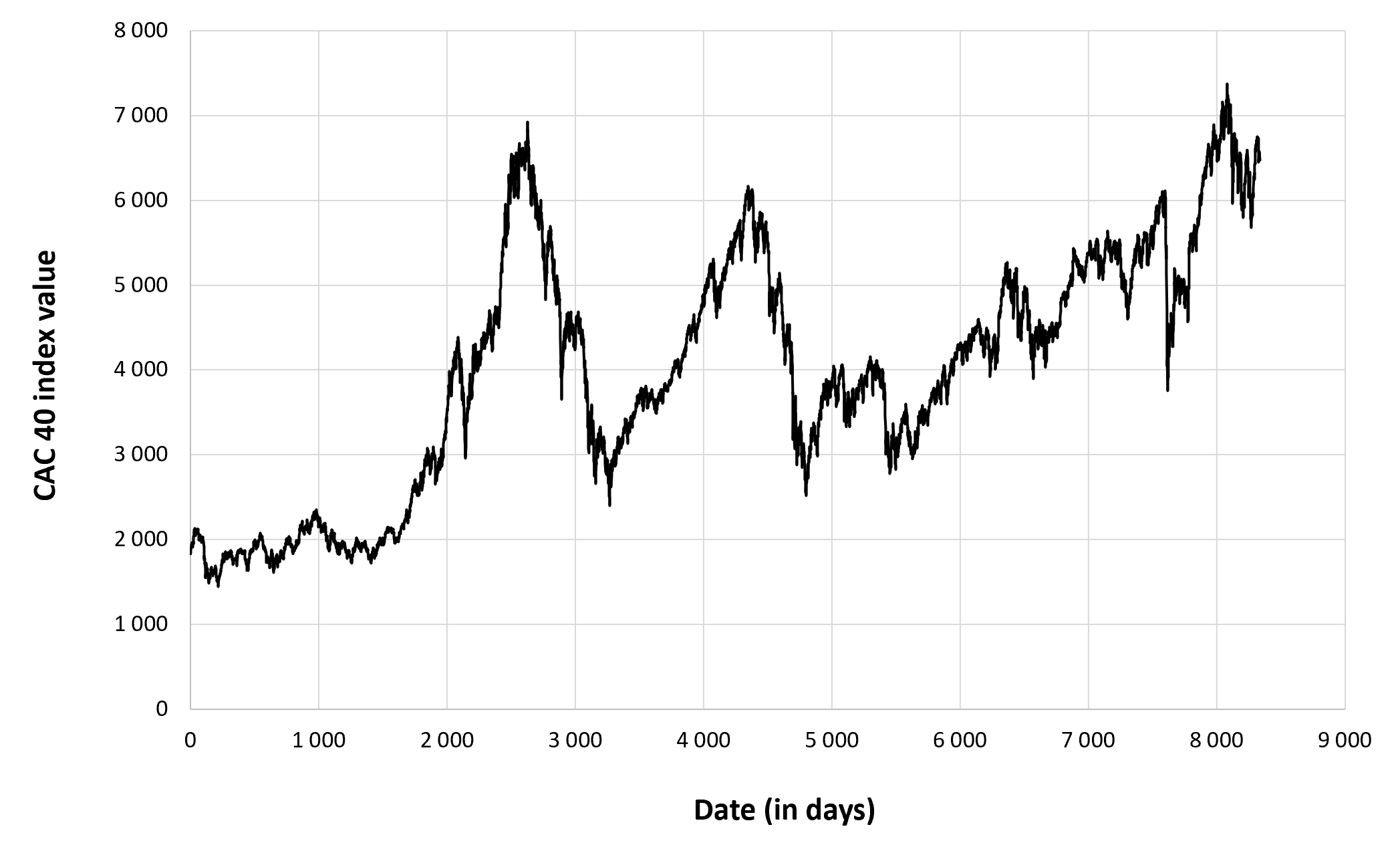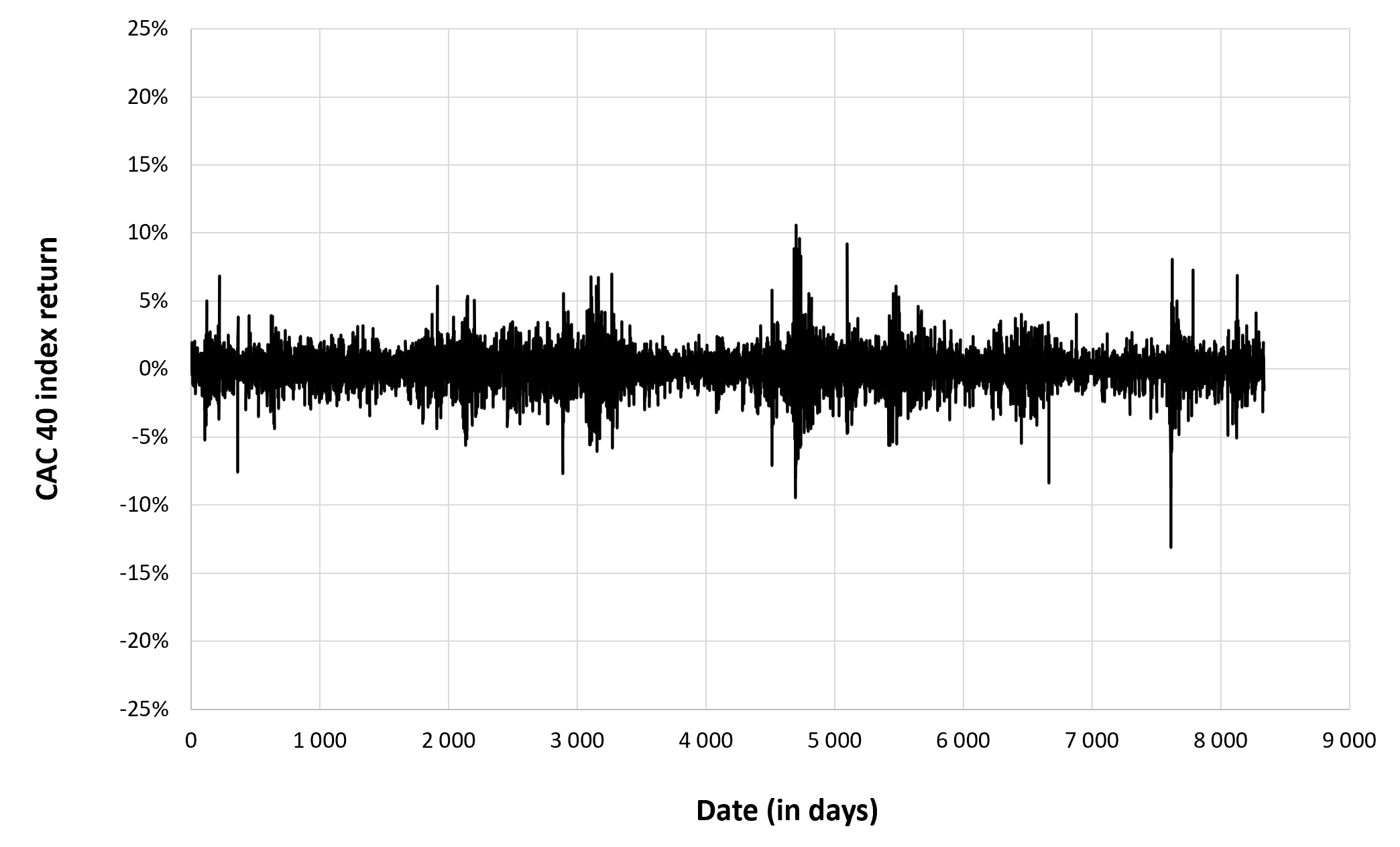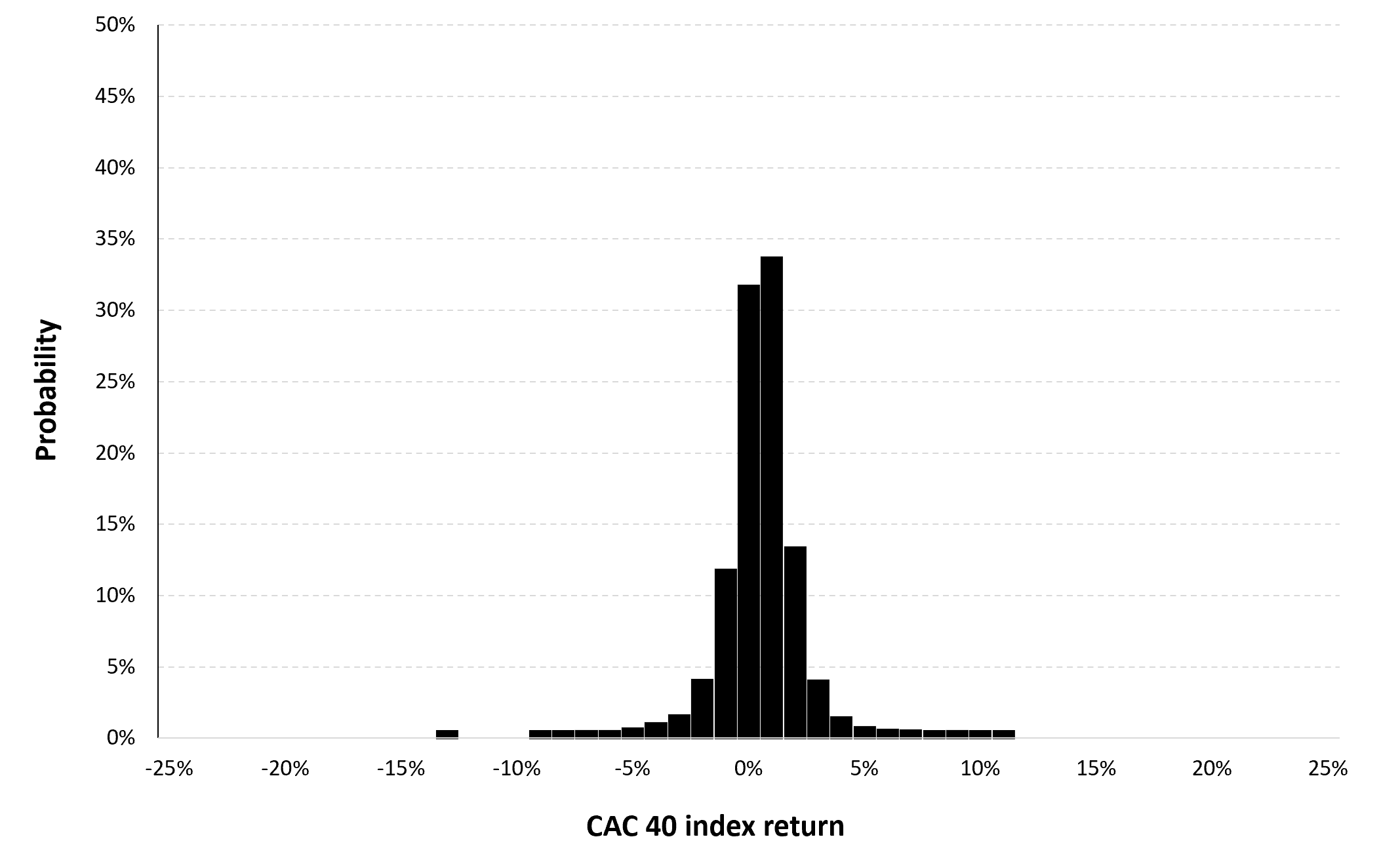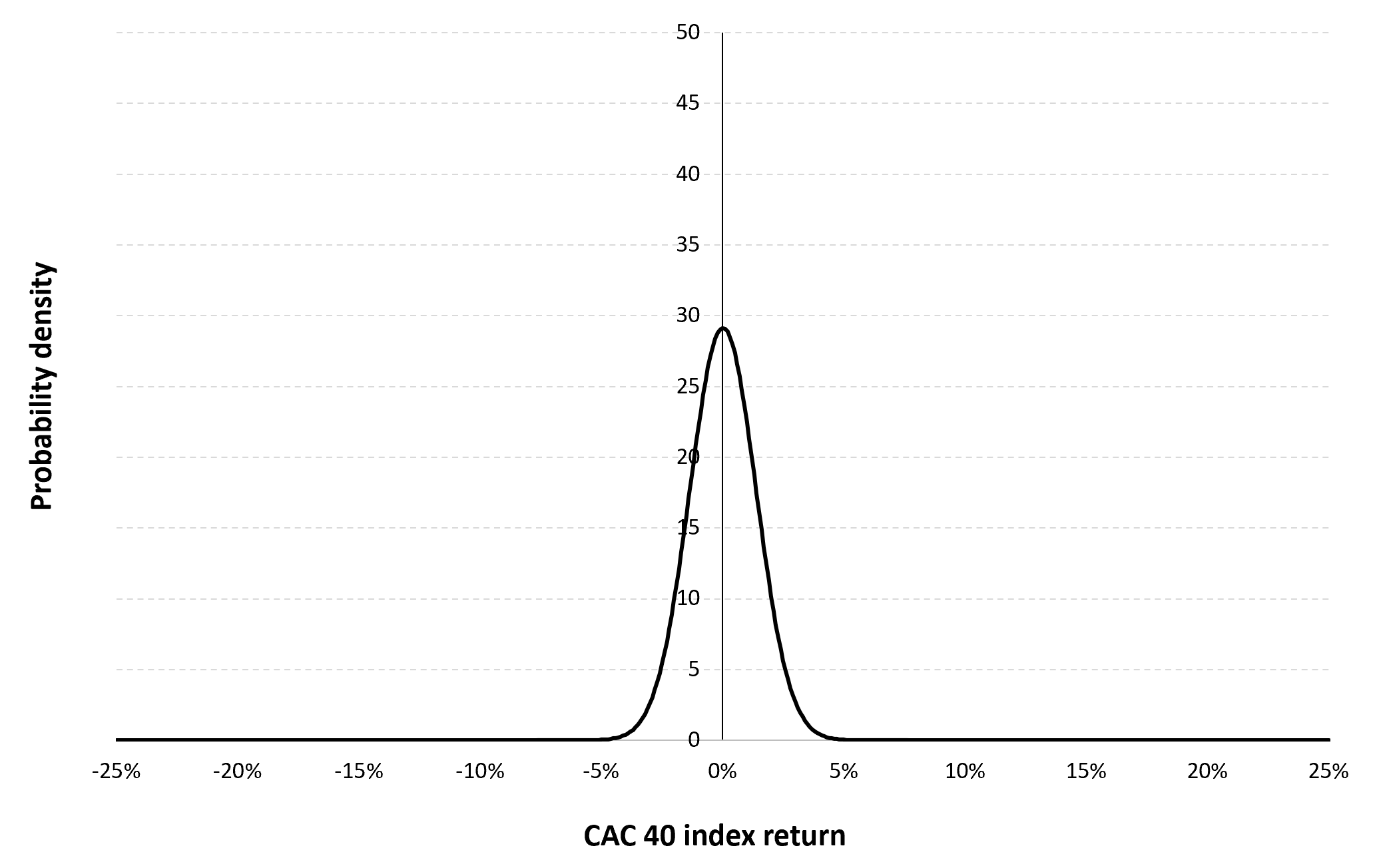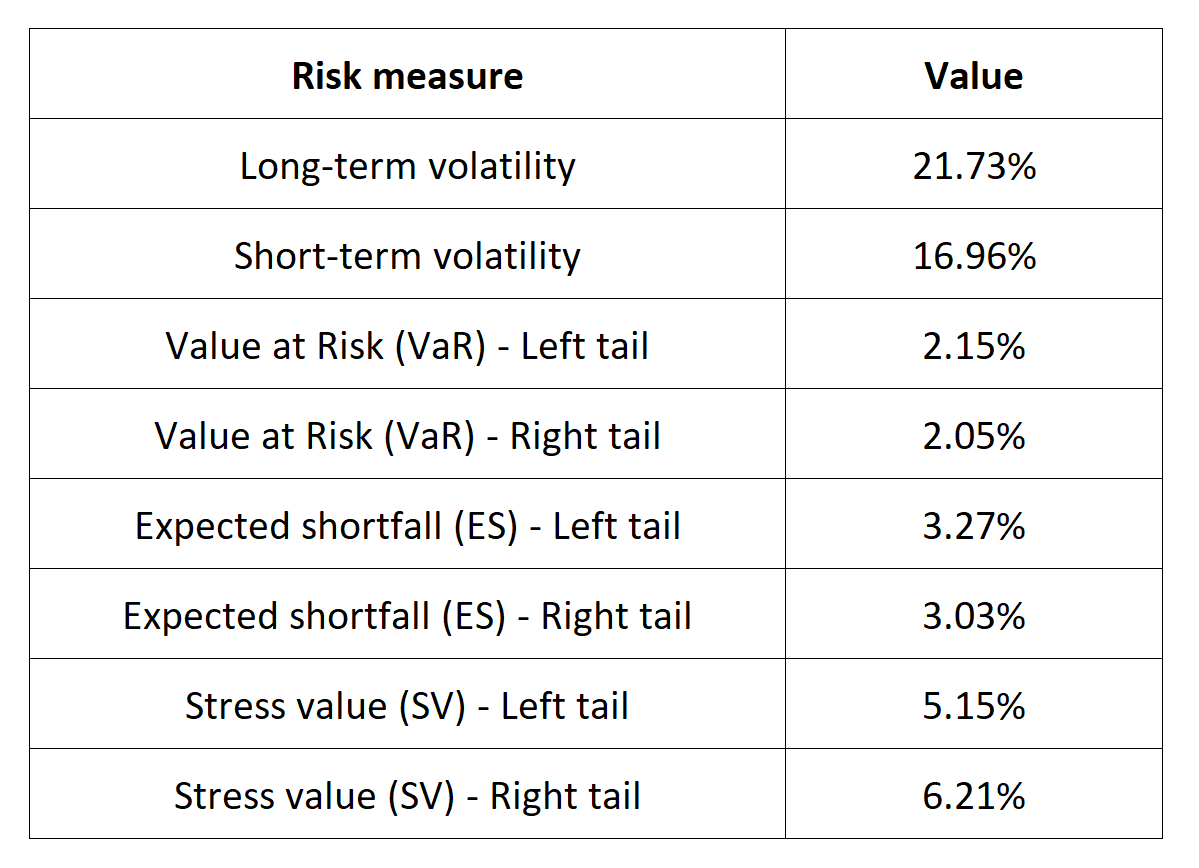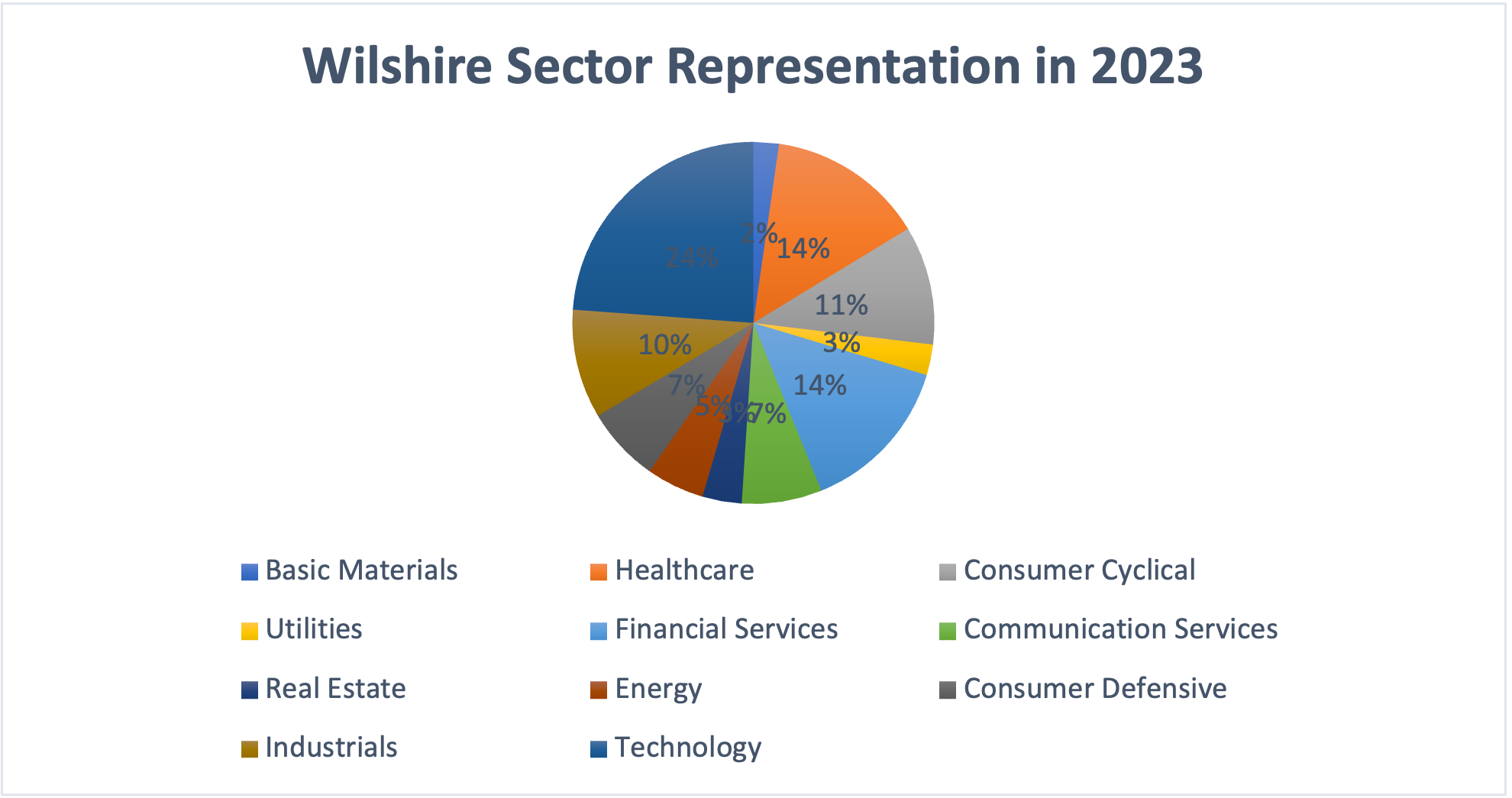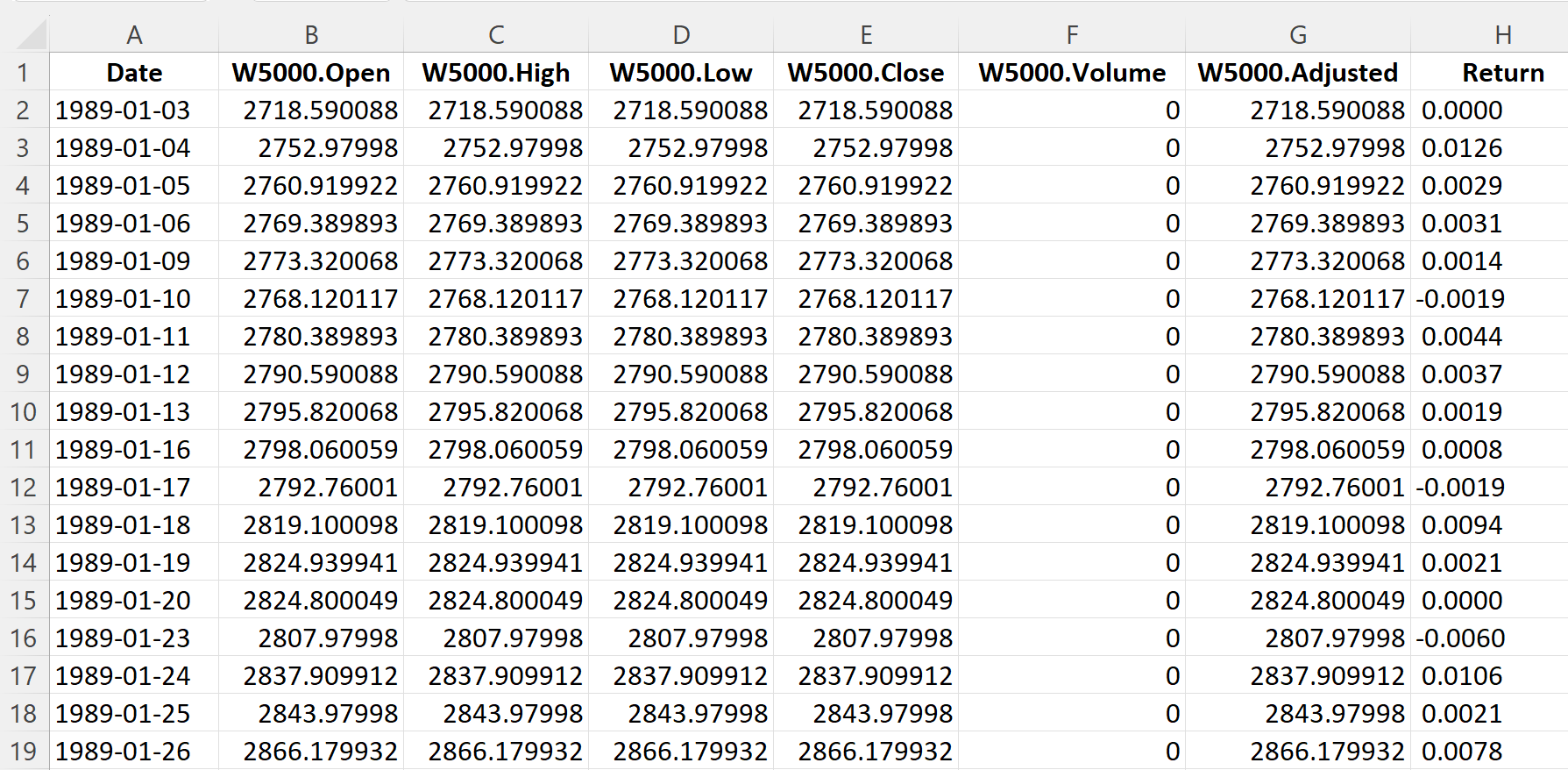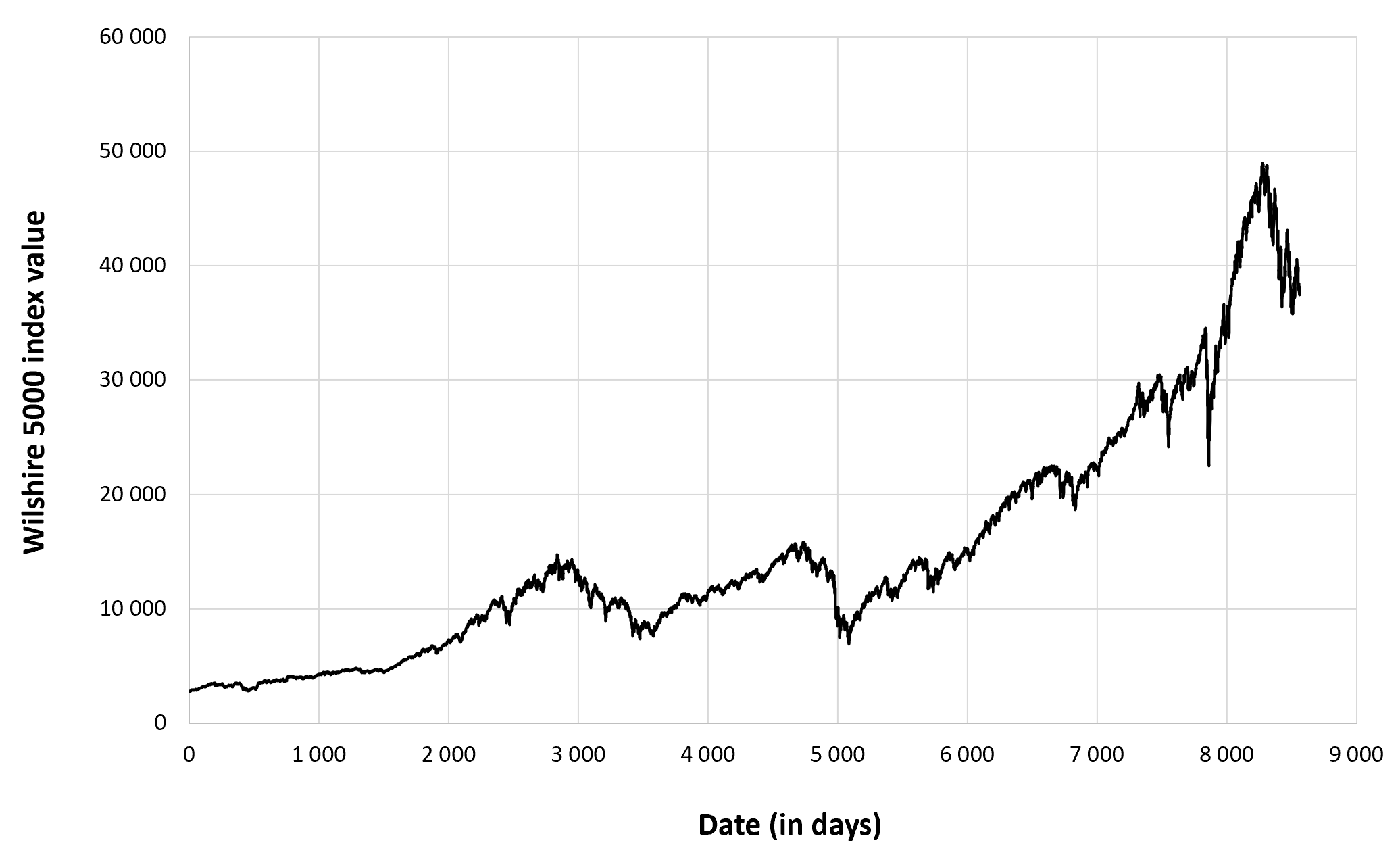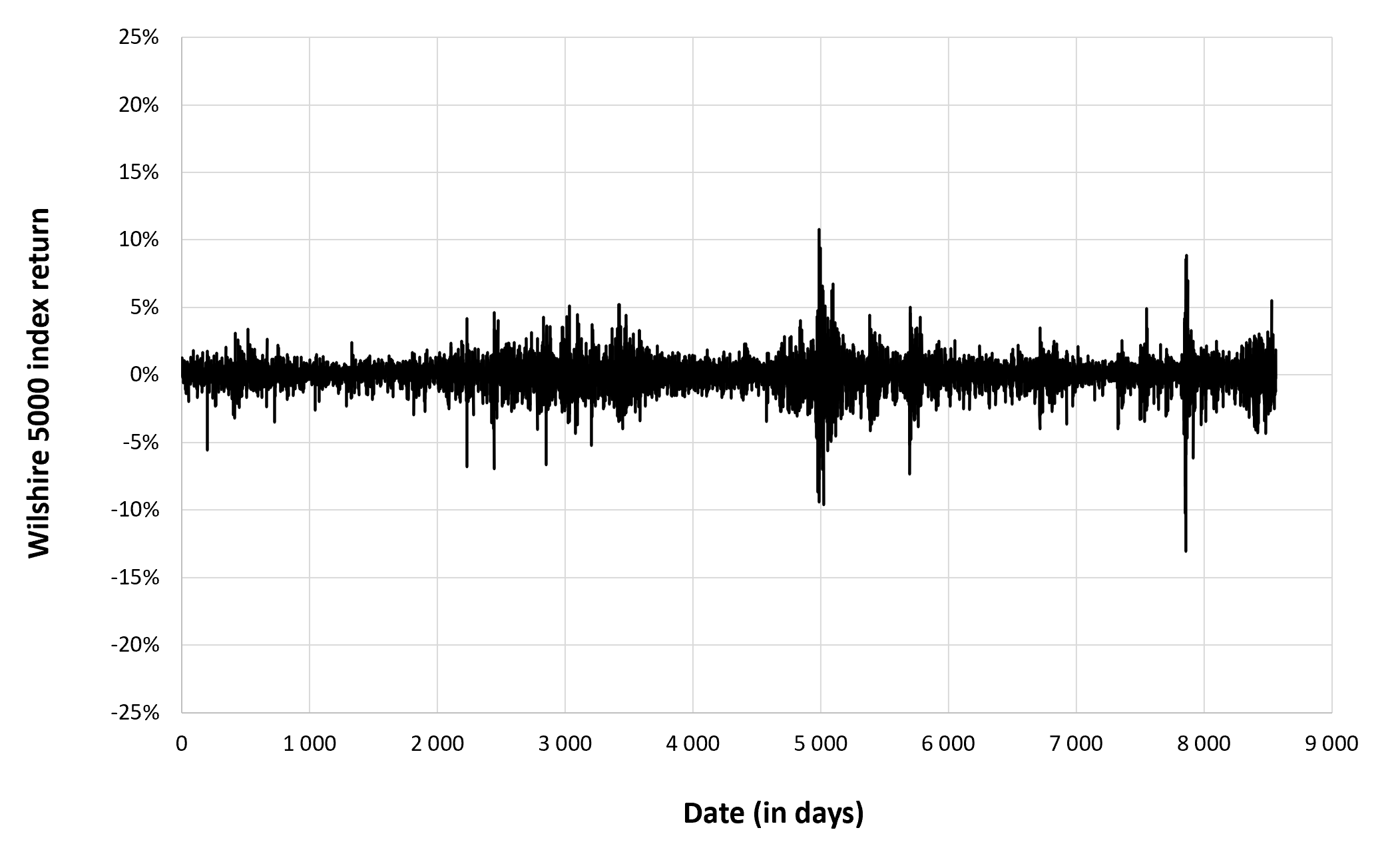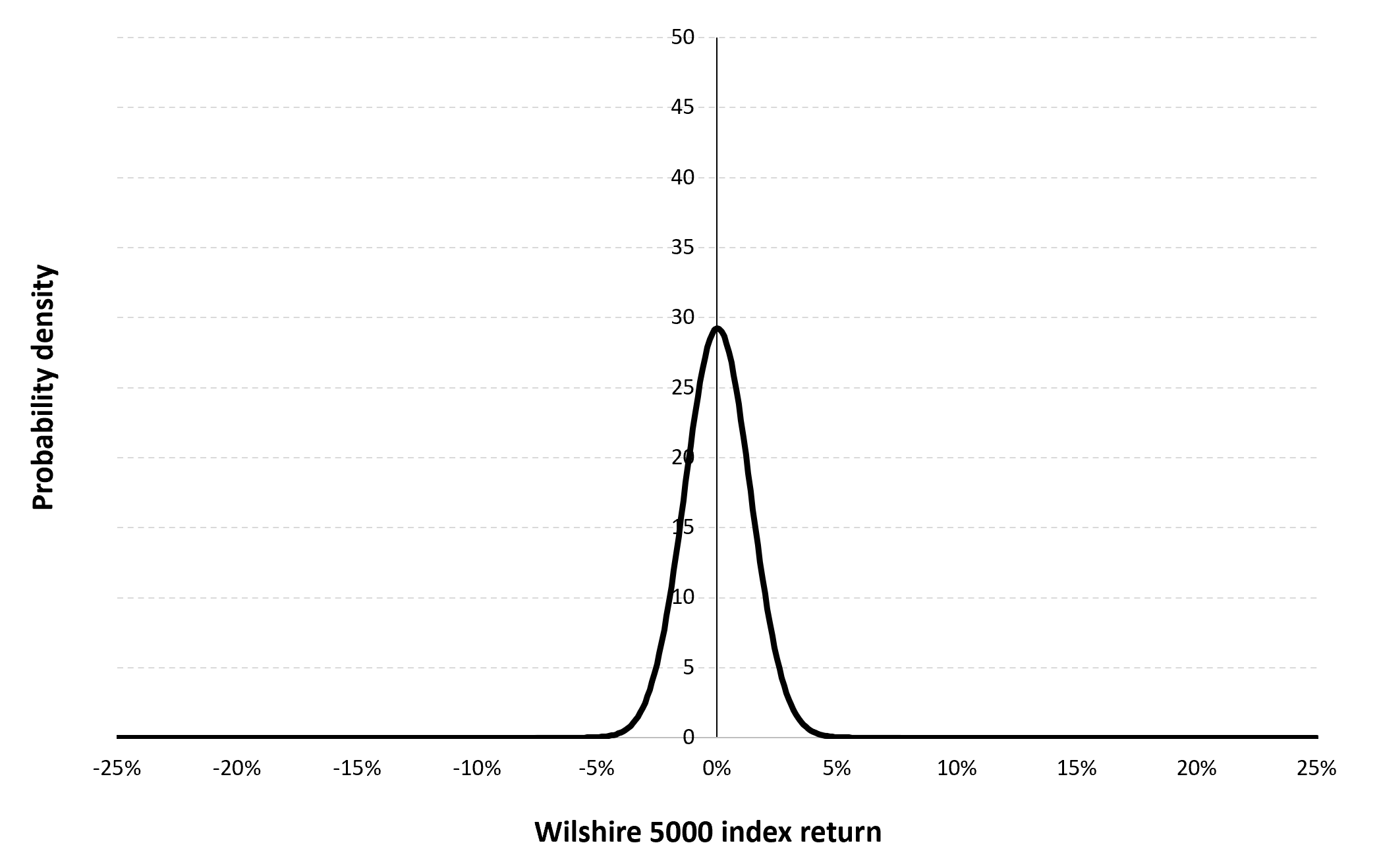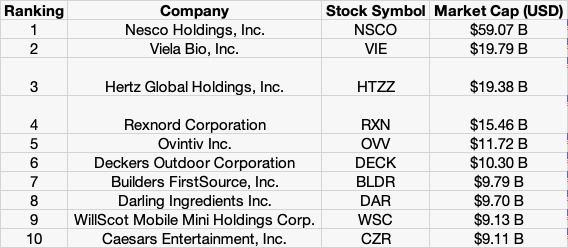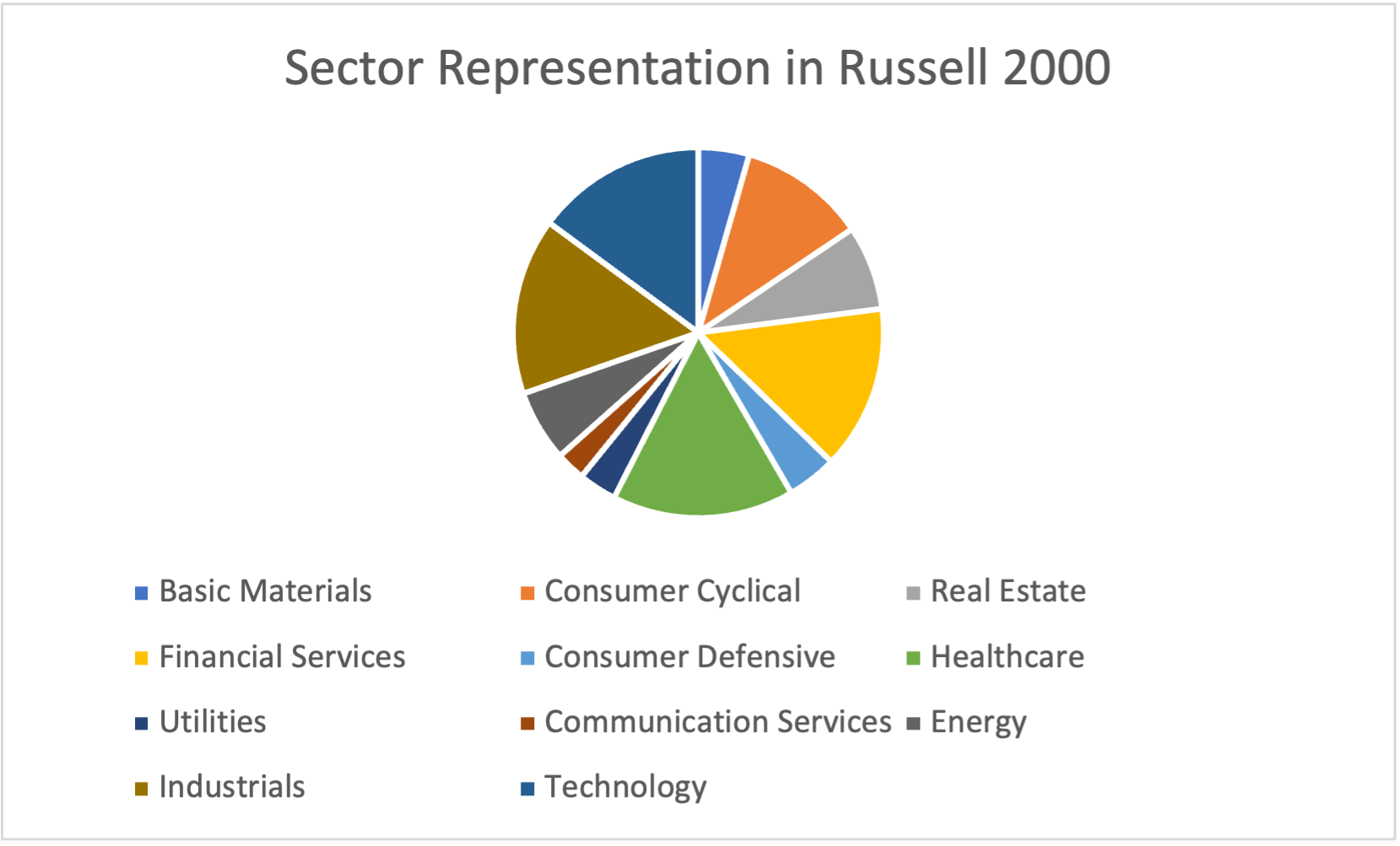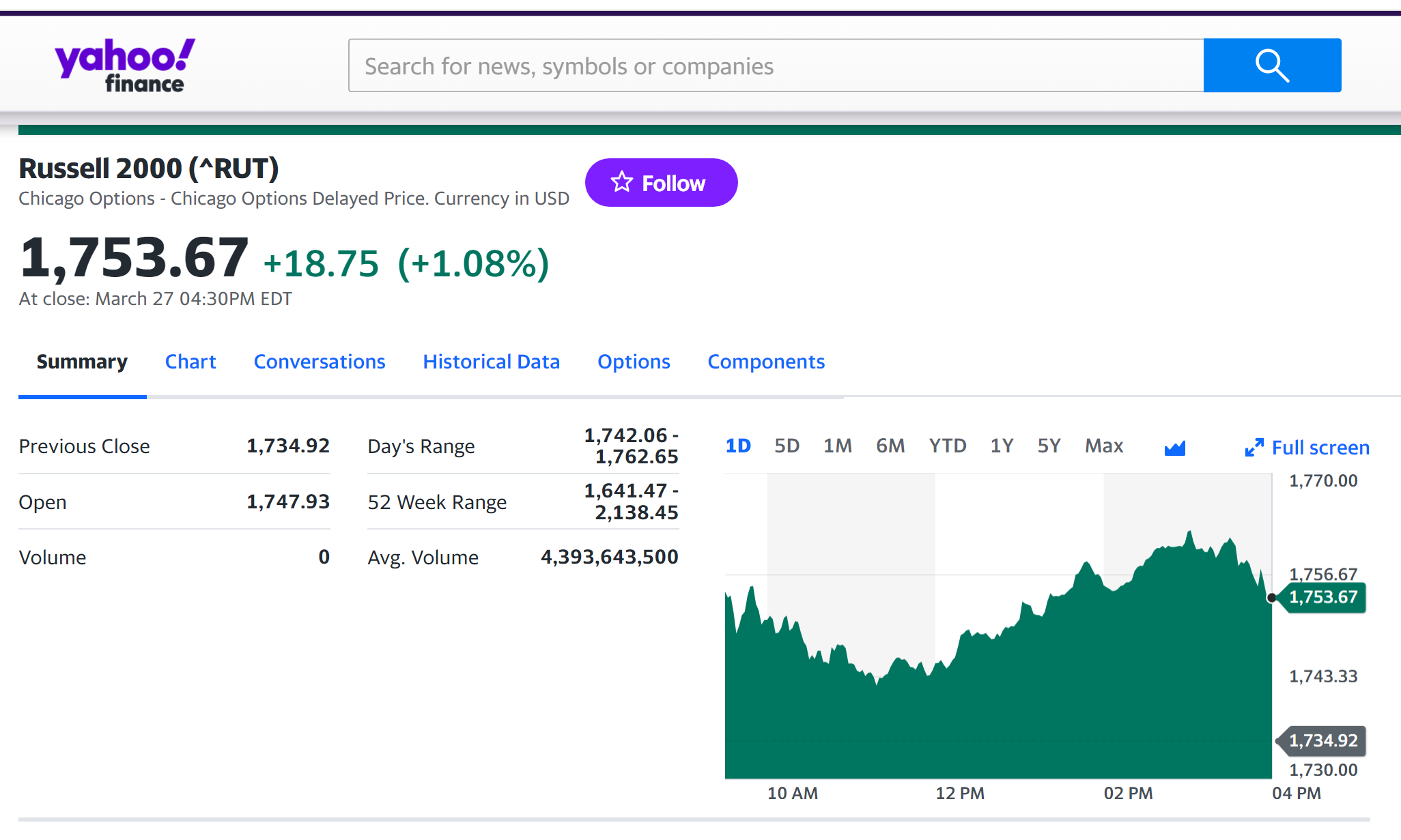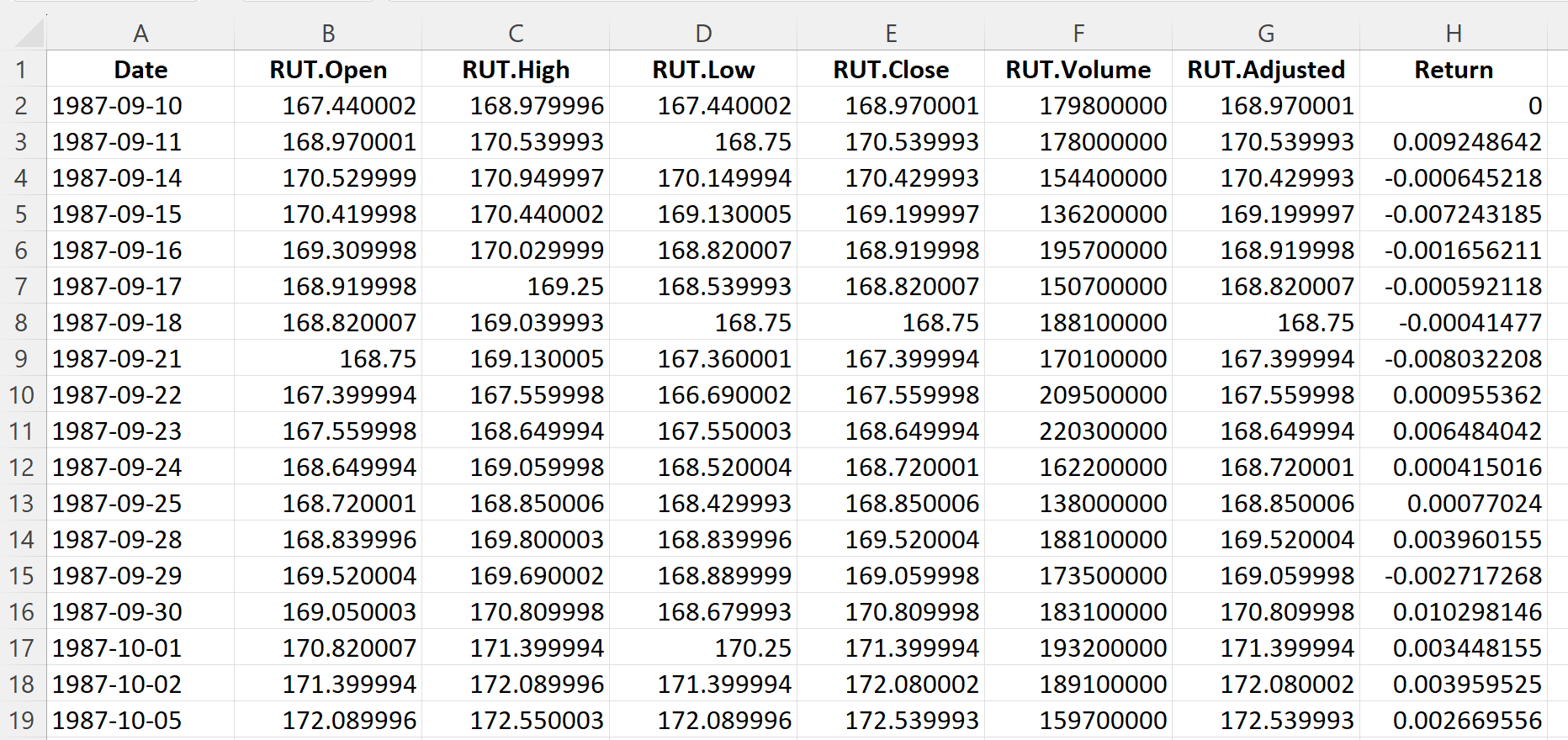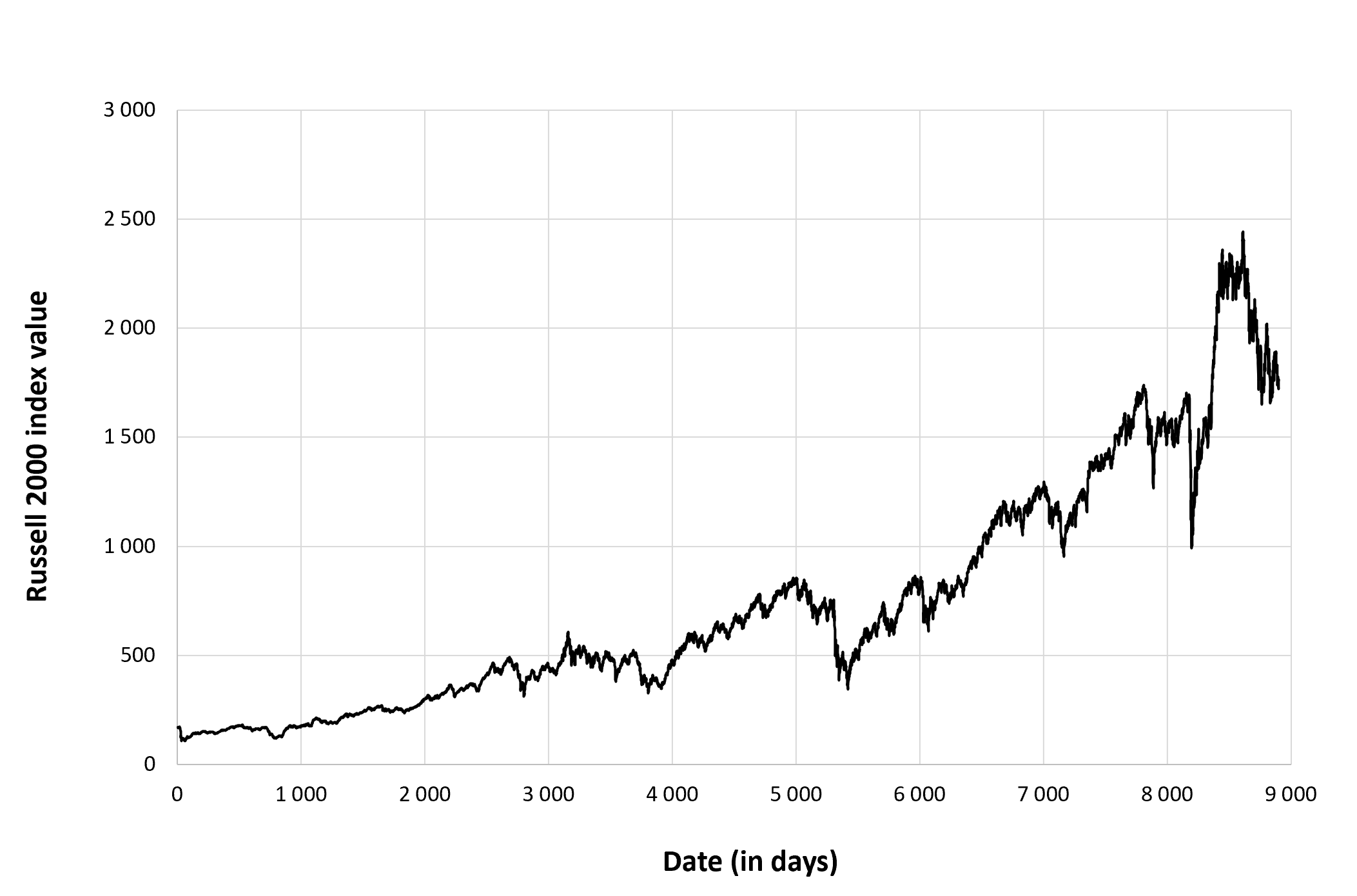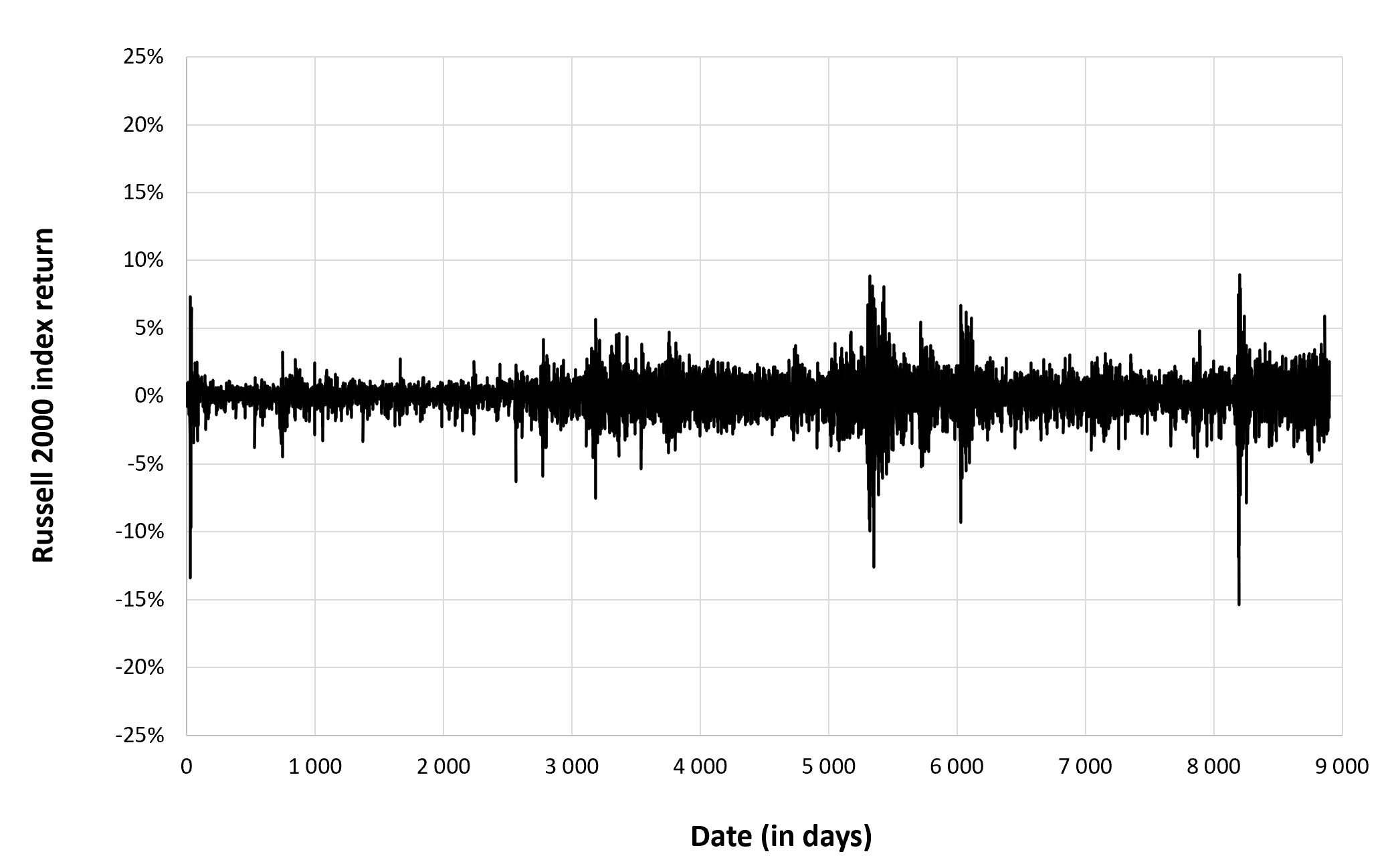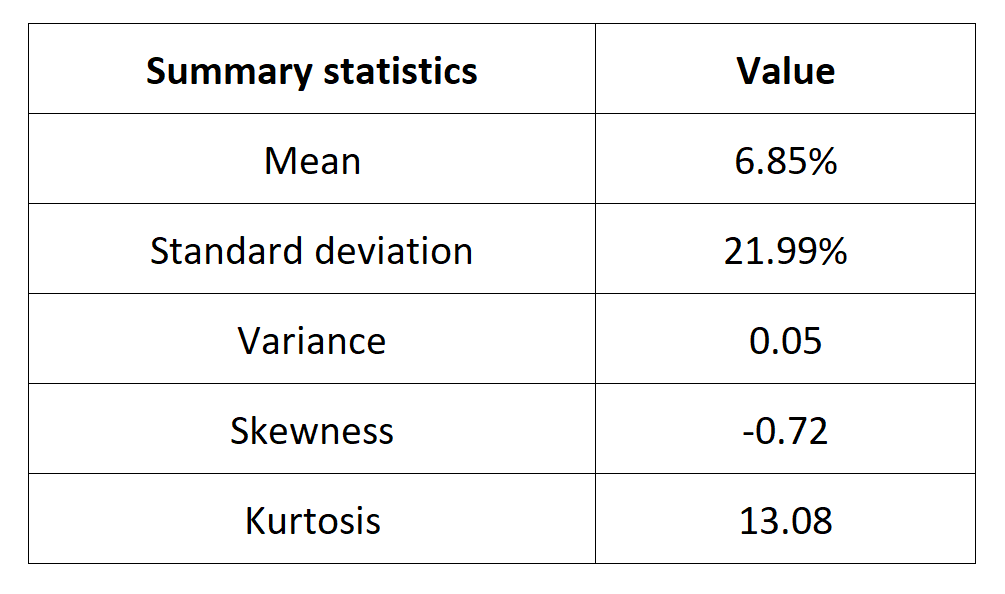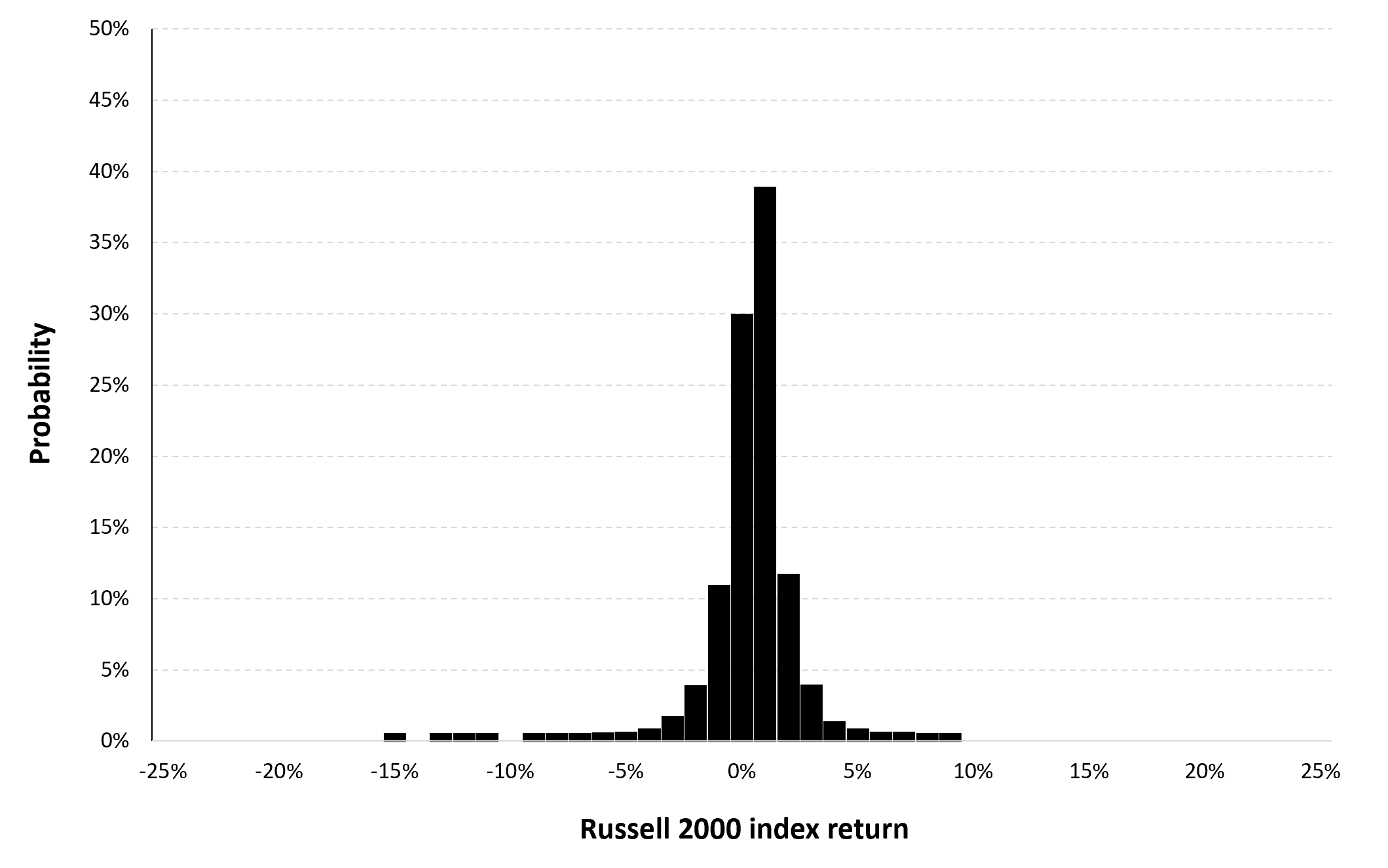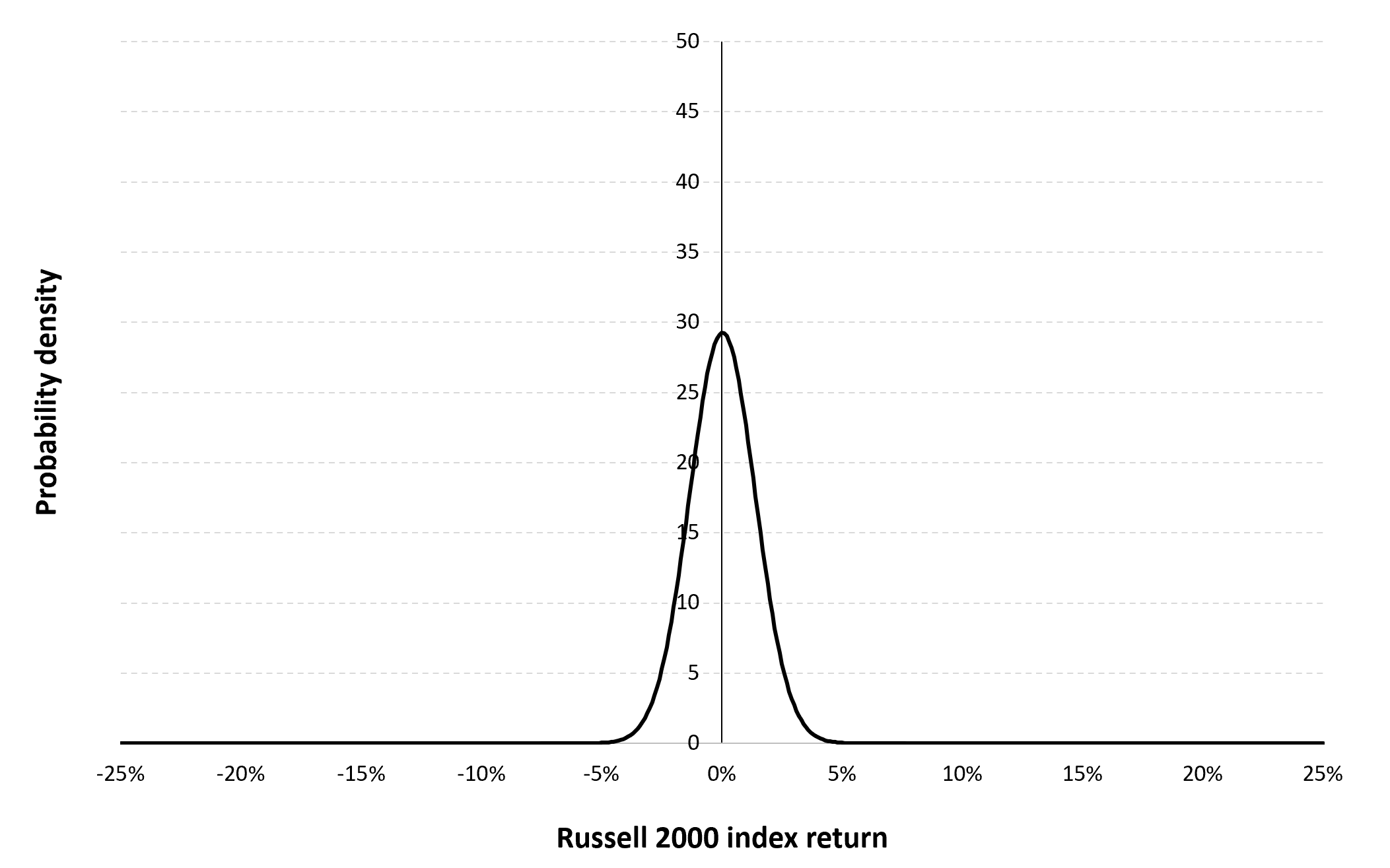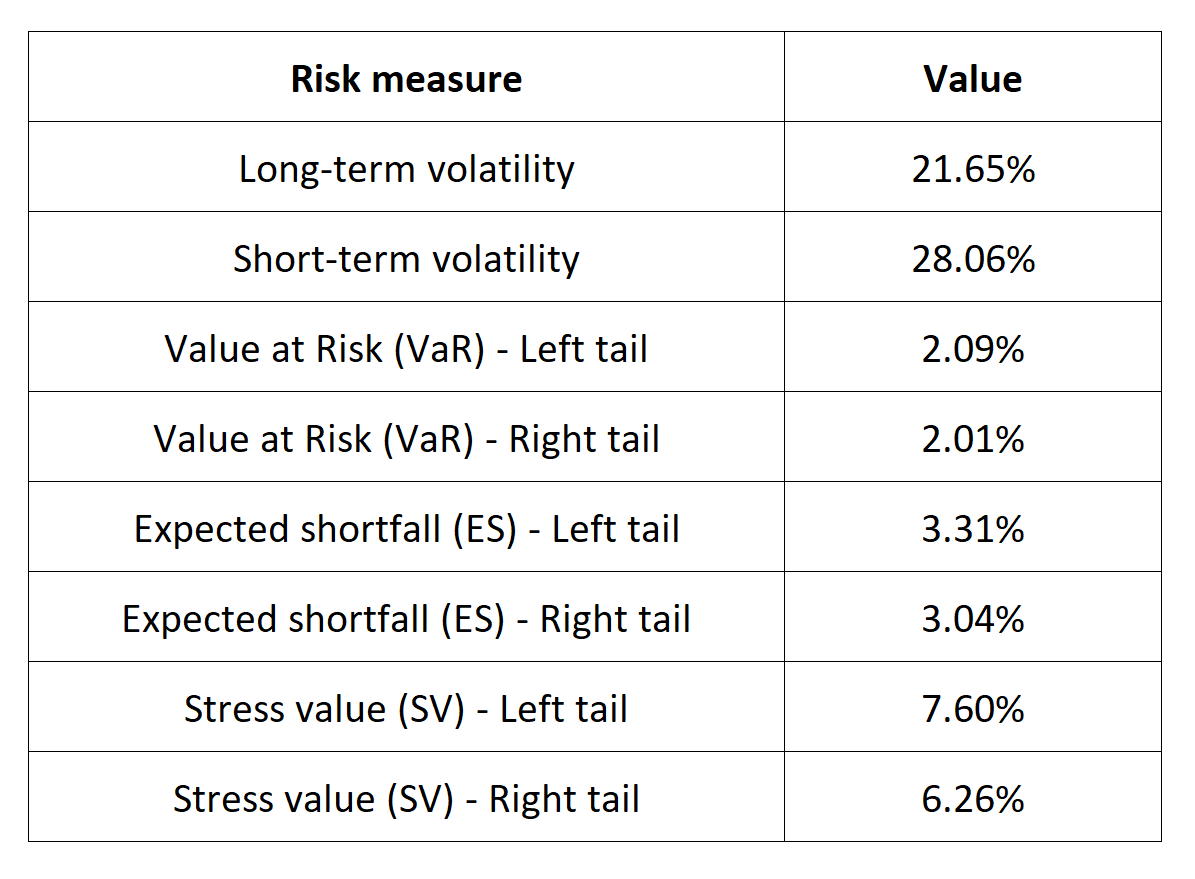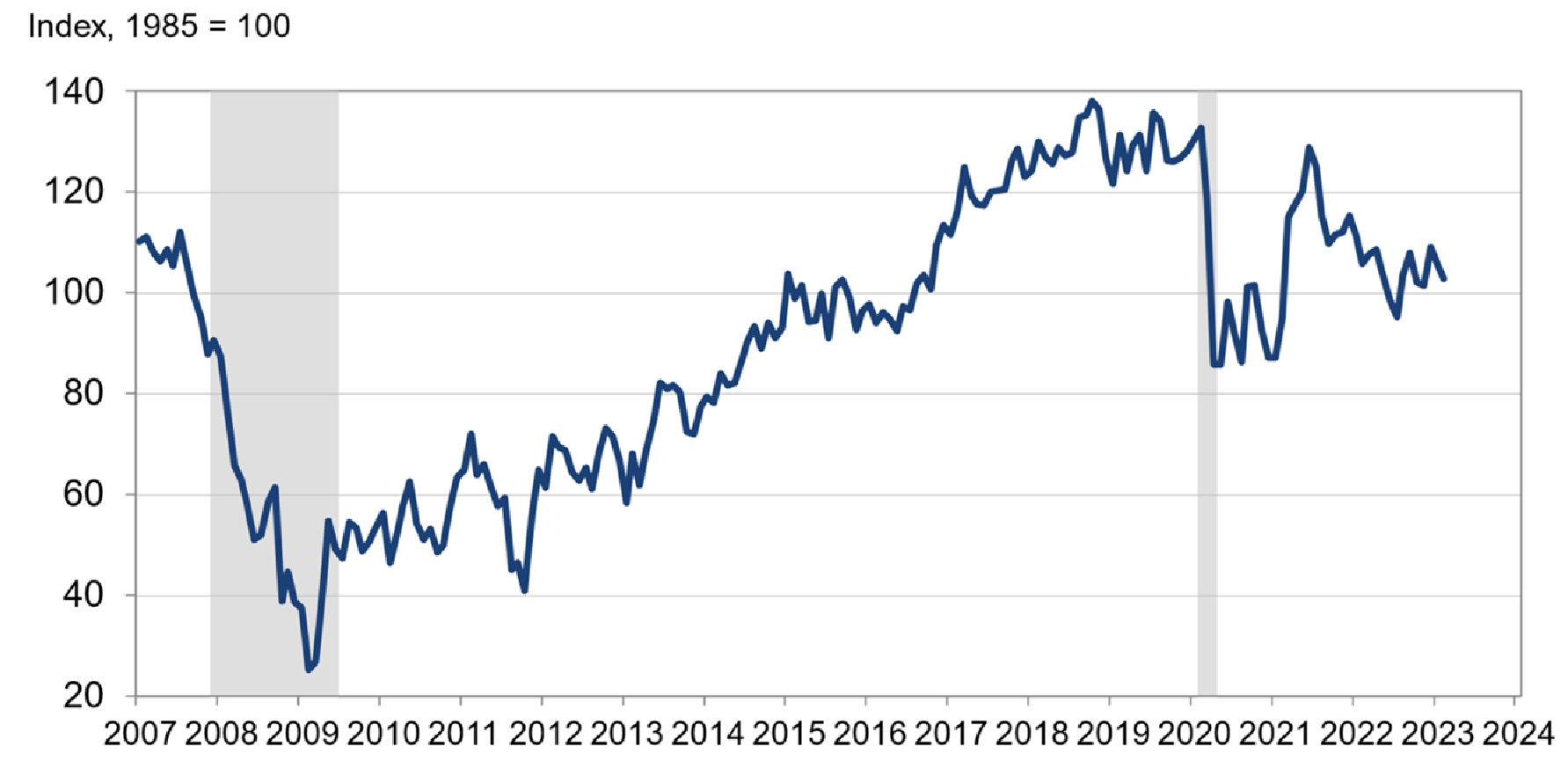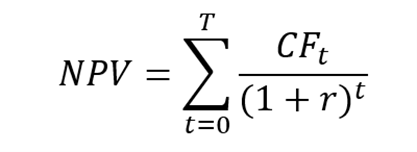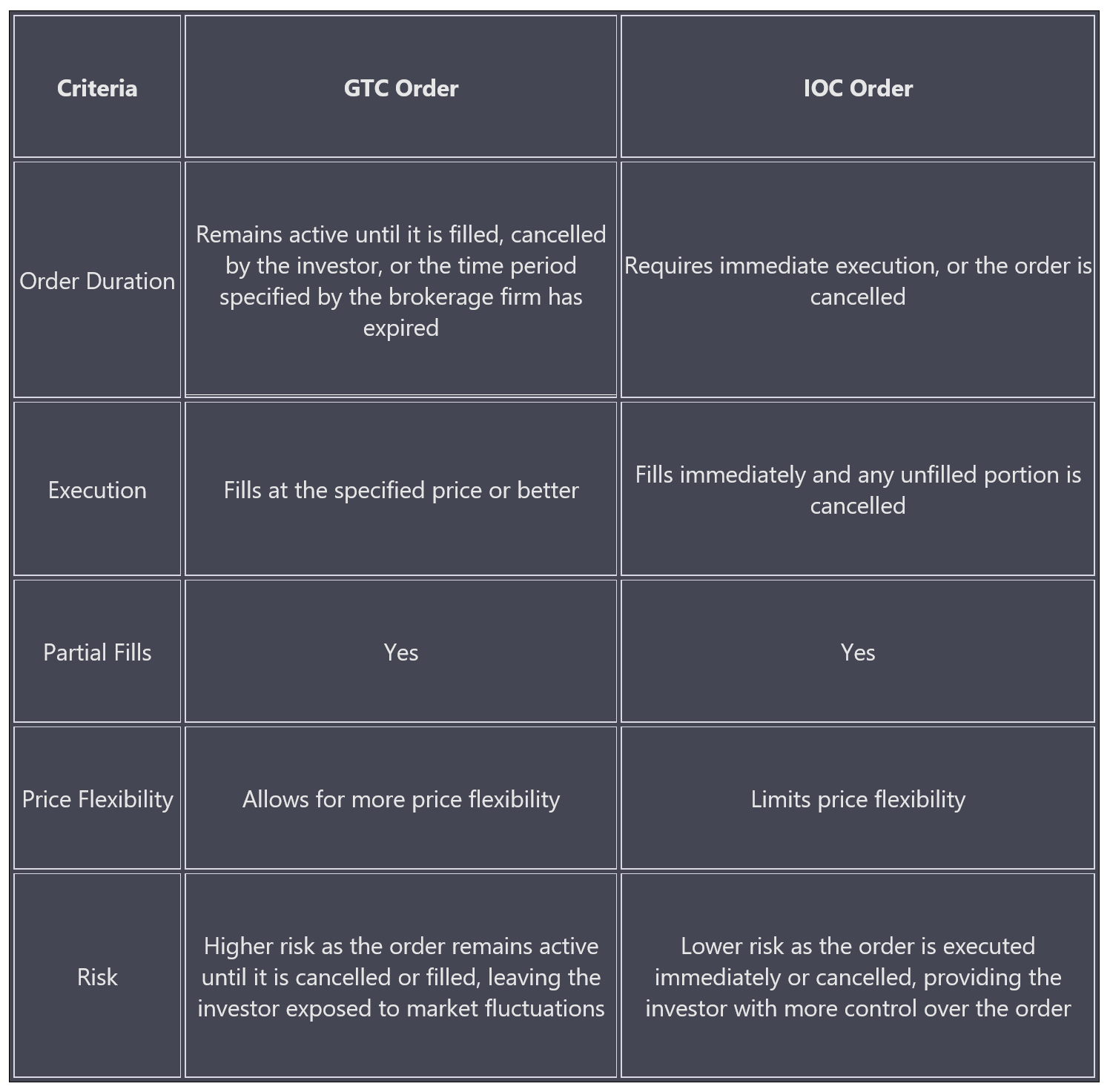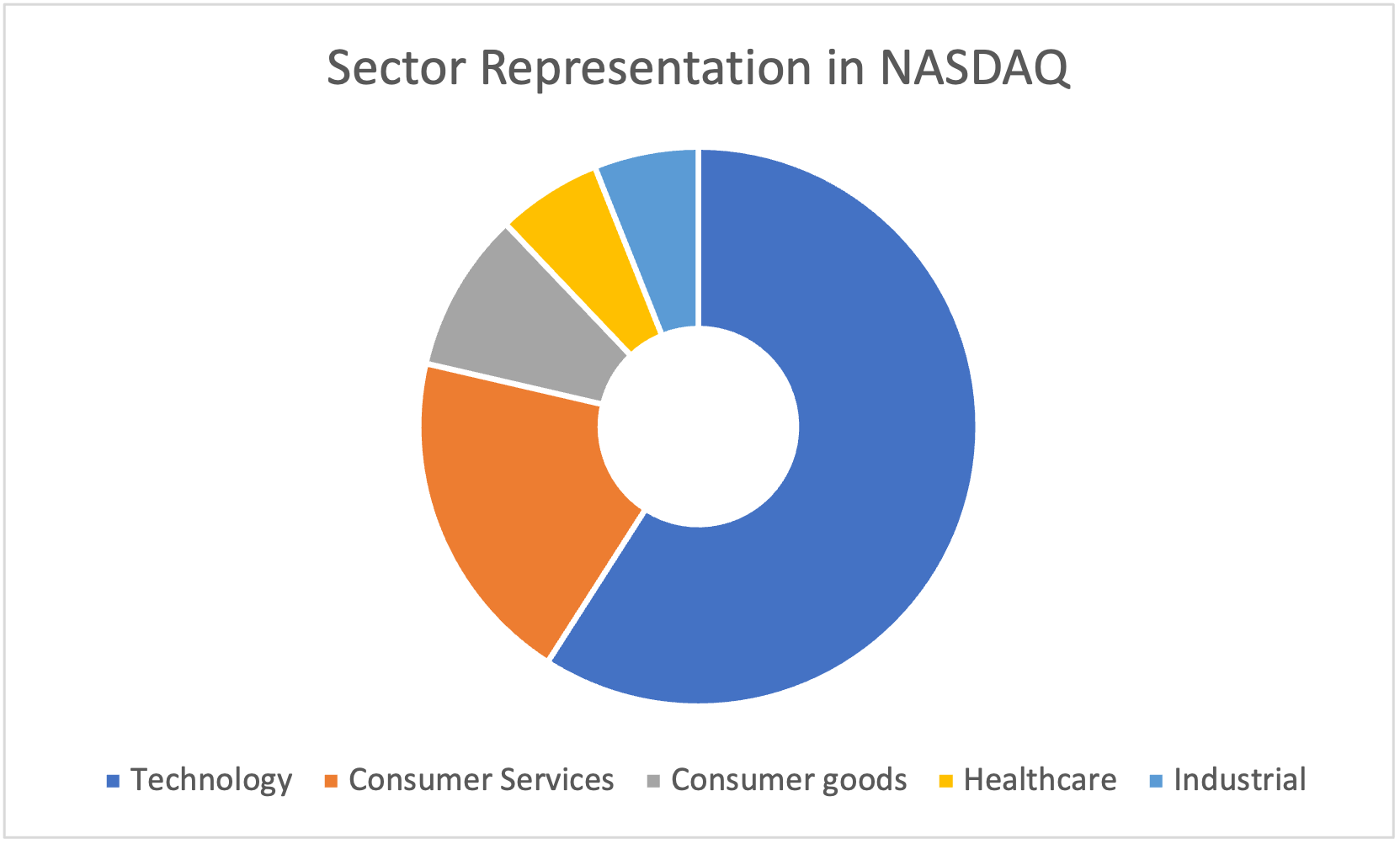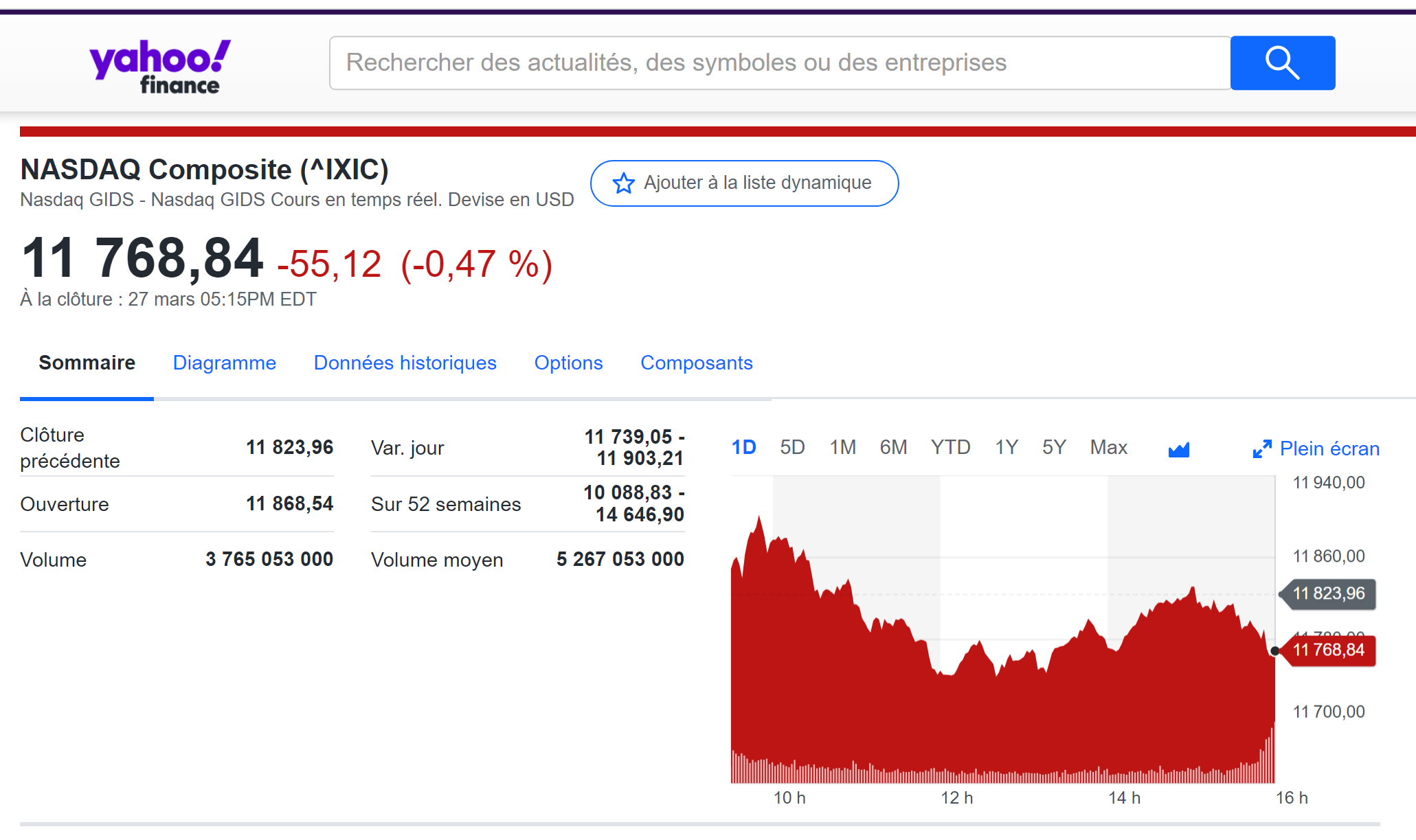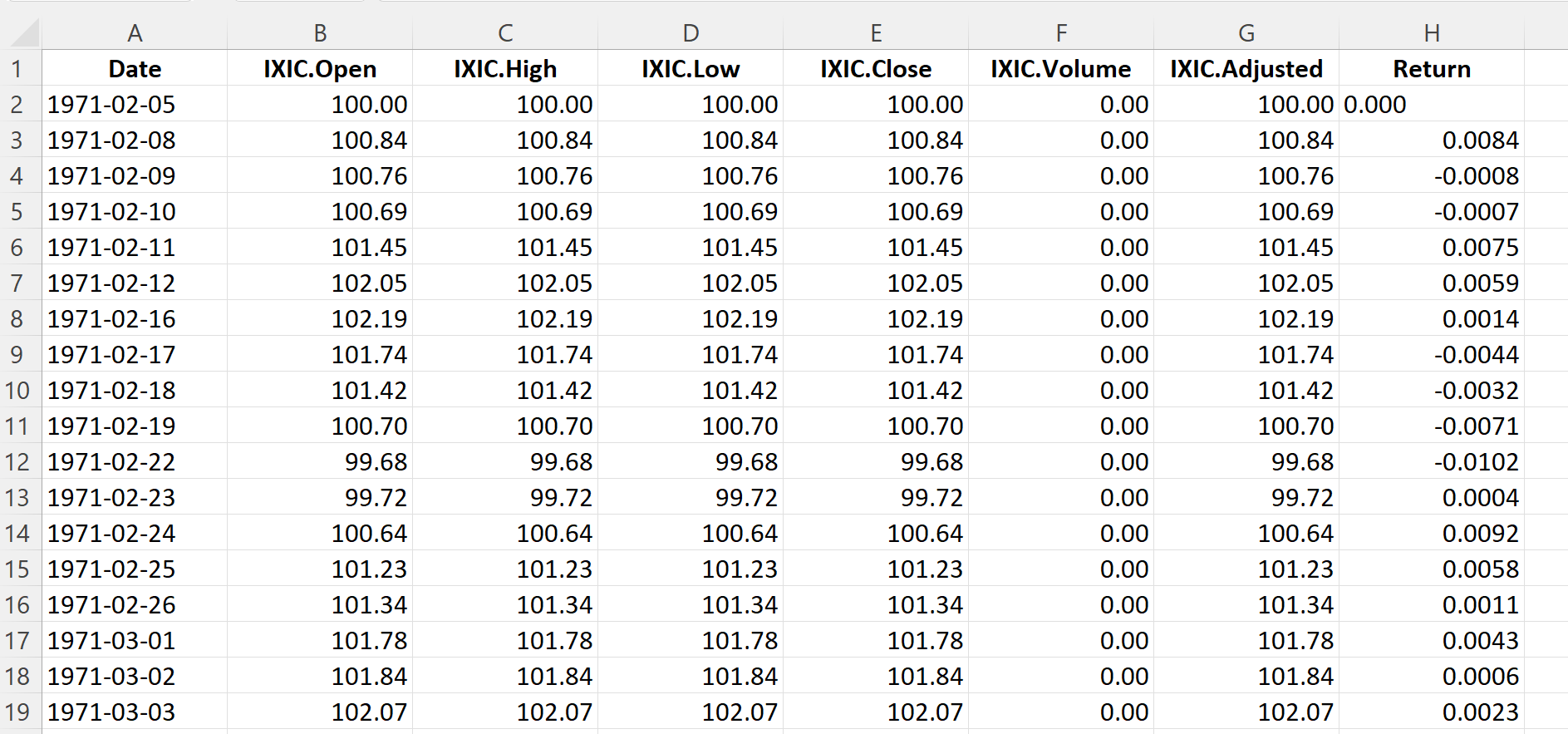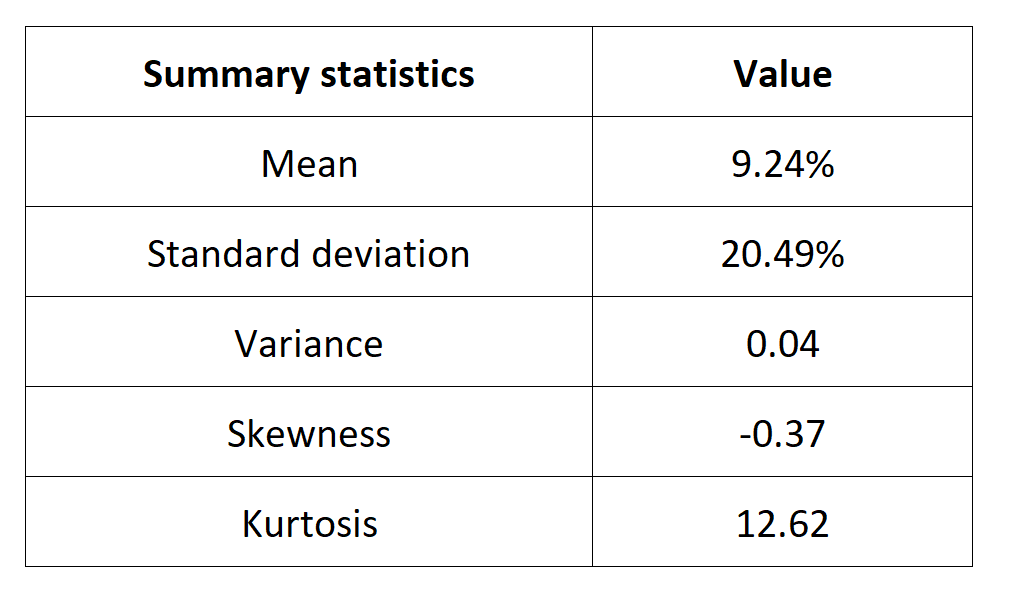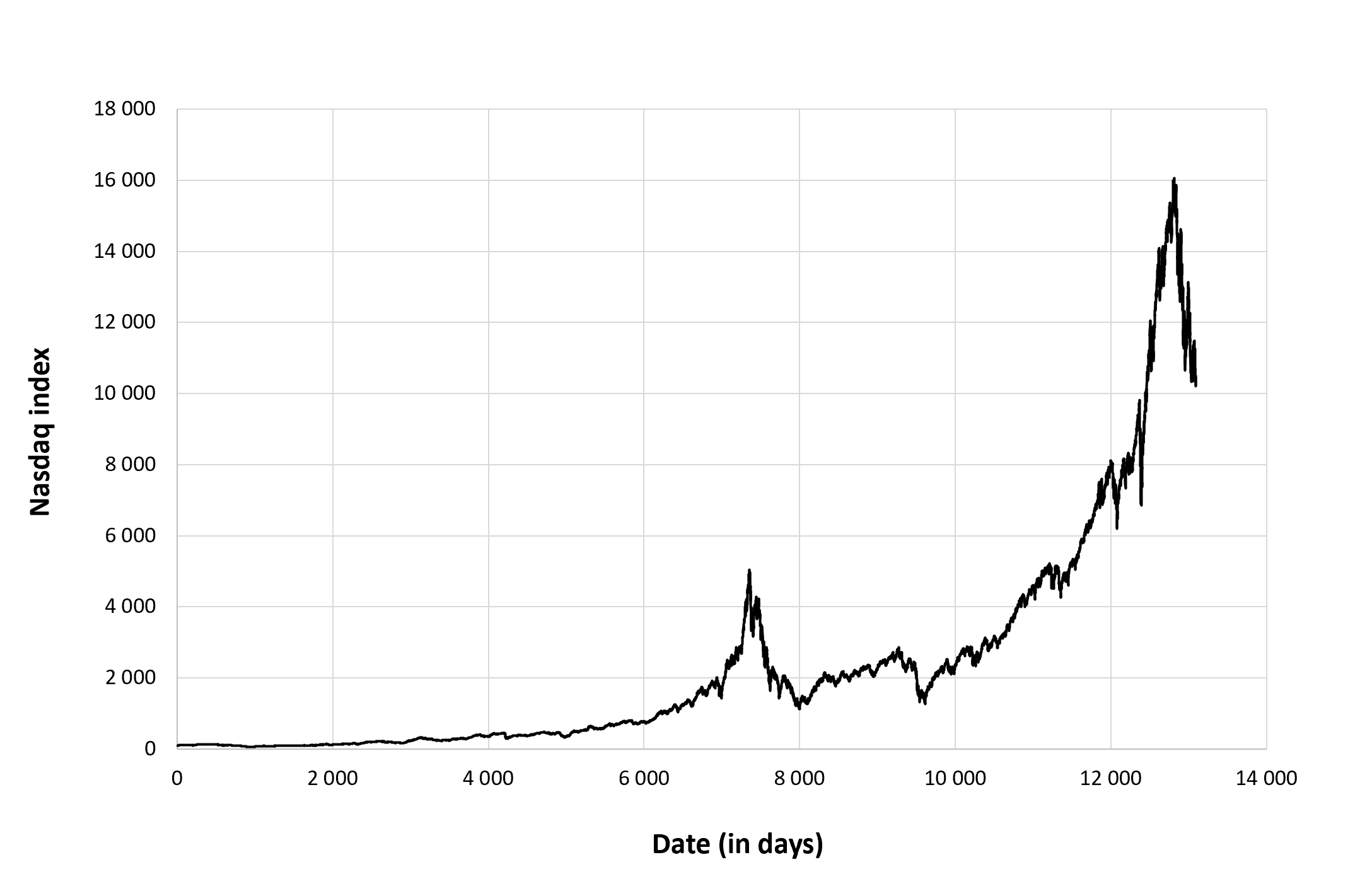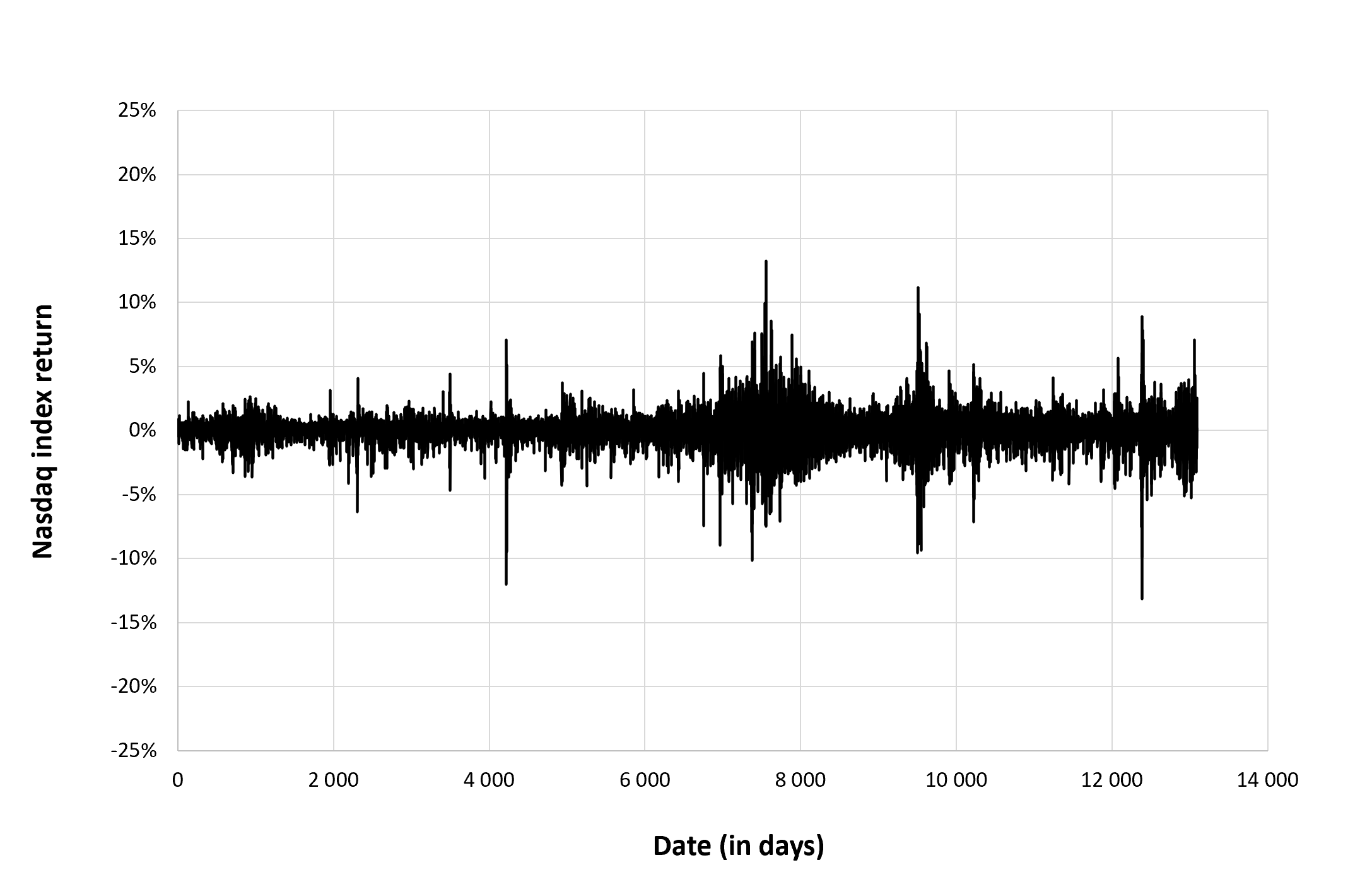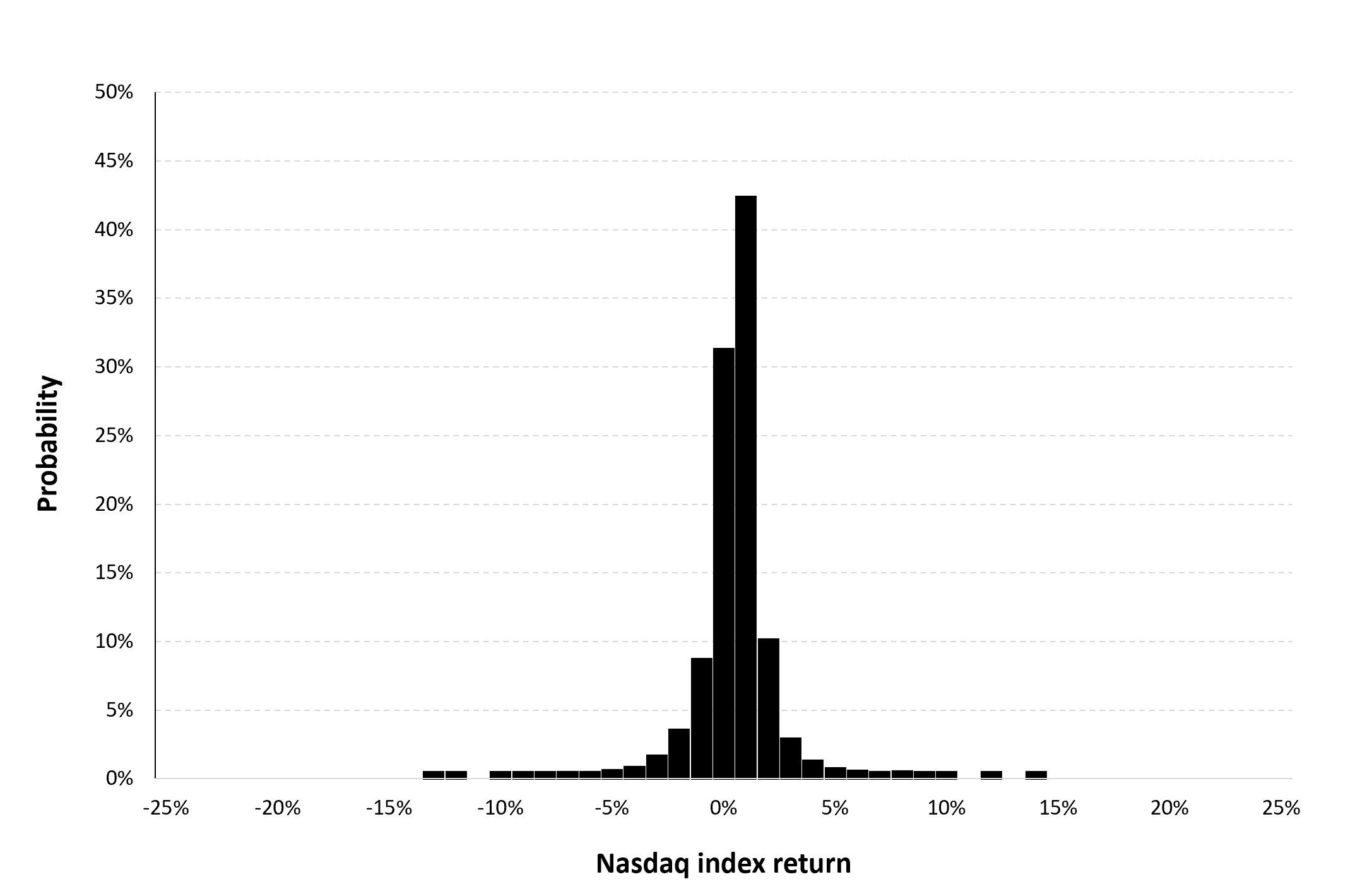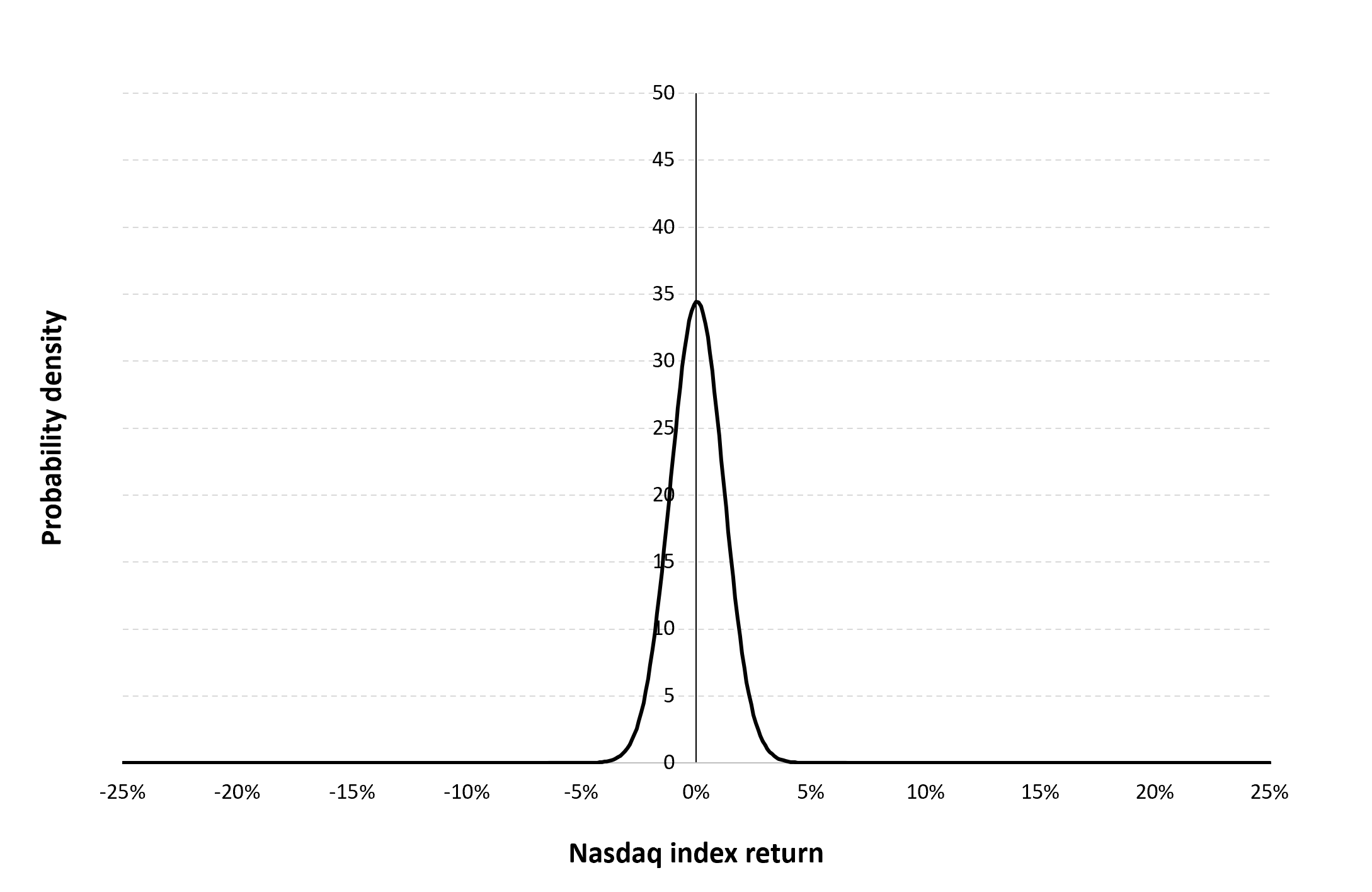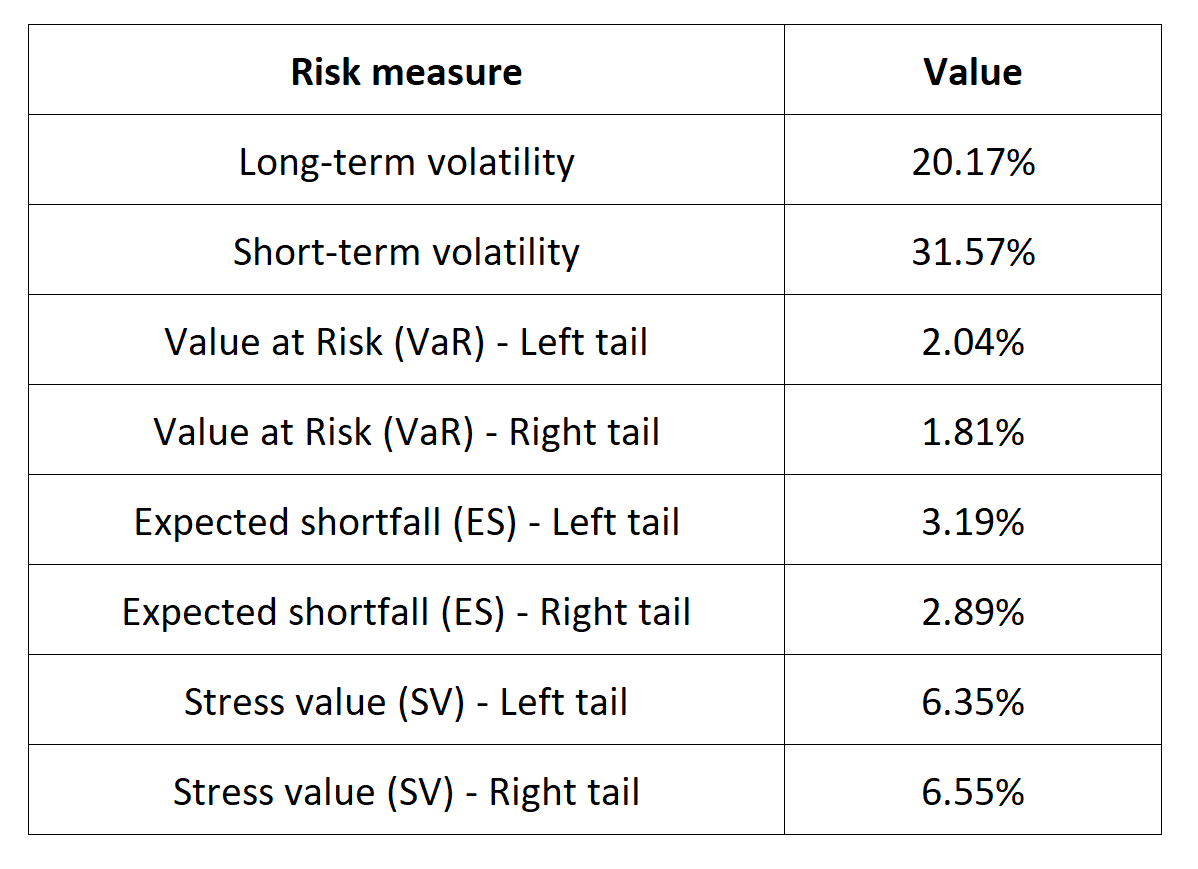The CSI 300 index
In this article, Nithisha CHALLA (ESSEC Business School, Grande Ecole Program – Master in Management, 2021-2023) presents the CSI 300 index and details its characteristics.
The CSI 300 index
The performance of 300 large-cap stocks traded on the Shanghai and Shenzhen stock exchanges in China is tracked by the capitalization-weighted stock market index known as the CSI 300 (China Securities Index 300). The China Securities Index Company, a joint venture between the Shanghai Stock Exchange and the Shenzhen Stock Exchange, introduced it in April 2005.
The CSI 300’s members are chosen based on their free float market capitalization, liquidity, as well as other aspects like profitability, potential for growth, and financial soundness. Companies from a wide range of industries, including finance, consumer goods, energy, and technology are included in the index.
The CSI 300 is frequently used by traders and investors as a benchmark for the Chinese stock market to gauge market trends and assess portfolio performance. As a measure of the health of China’s economy and of investor perception of the nation’s companies and financial markets, it is also closely watched by policymakers, economists, and analysts. The performance of the Chinese economy can be closely tracked by both domestic and foreign investors thanks to the CSI 300.
Through a range of financial products, including exchange-traded funds (ETFs), index funds, futures, and options contracts, investors can get exposure to the CSI 300 index.
The CSI 300 index has the ticker symbol “CSI300” in the financial sector.
Table 1 below gives the Top 10 stocks in the CSI 300 index in terms of market capitalization as of January 31, 2023.
Table 1. Top 10 stocks in the CSI 300 index.

Source: computation by the author (data: Yahoo Finance! financial website).
Table 2 below gives the sector representation of the CSI 300 index in terms of number of stocks and market capitalization as of January 31, 2023.
Table 2. Sector representation in the CSI 300 index.
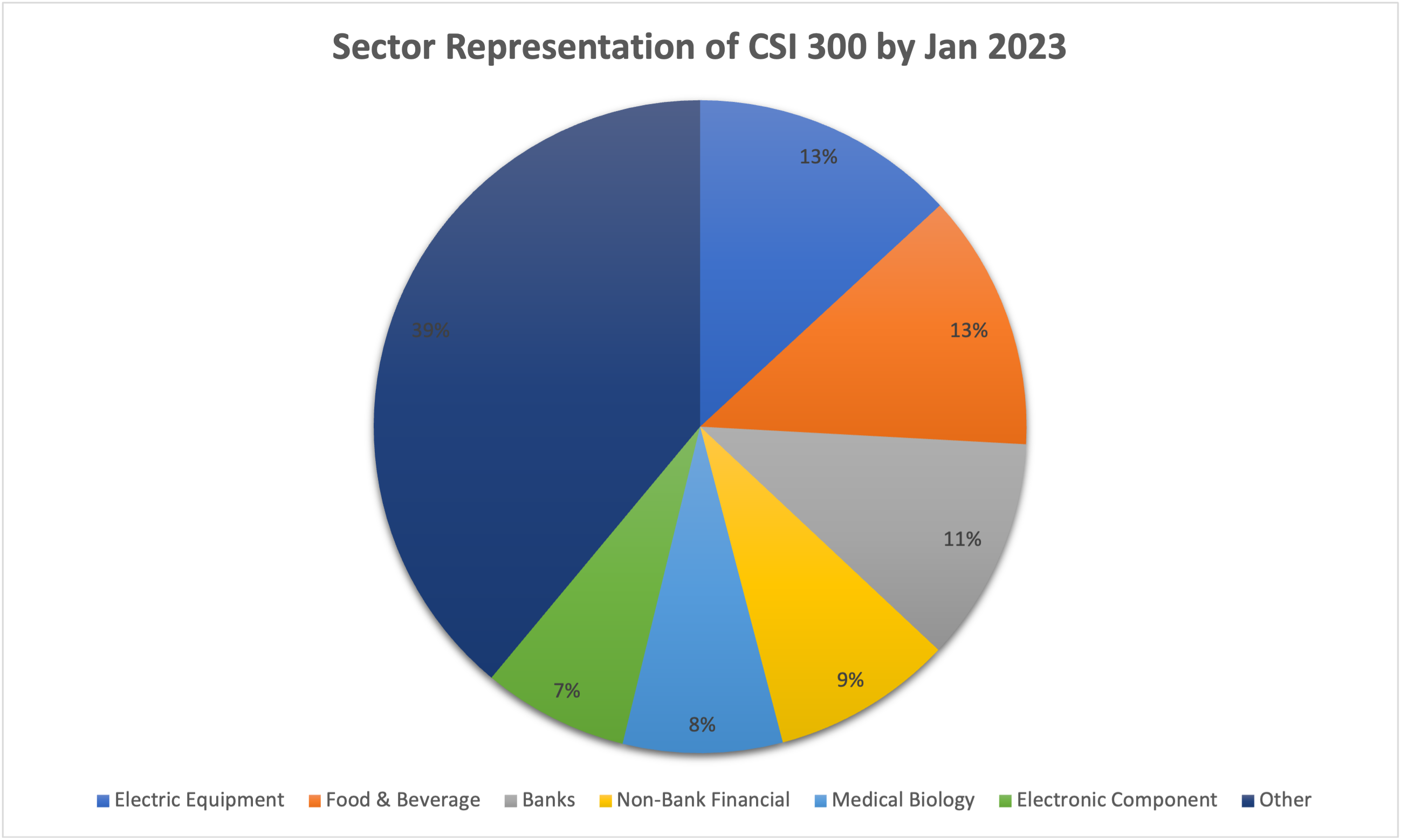
Source: computation by the author (data: Yahoo Finance! financial website).
Calculation of the CSI 300 index value
The China Securities Index Company, a joint venture between the Shanghai Stock Exchange and the Shenzhen Stock Exchange, is in charge of managing the index.
A free-float market-capitalization-weighted methodology is utilized to calculate the CSI 300 index, which means that each company’s weight in the index is determined by its market capitalization adjusted for the shares that are actually traded in the secondary market (float).
The formula to compute the CSI 300 index is given by
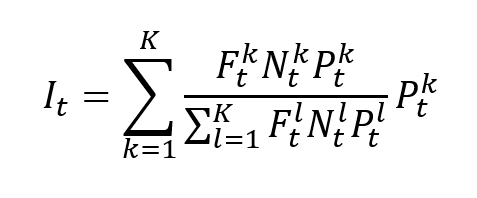
where I is the index value, k a given asset, K the number of assets in the index, Pk the market price of asset k, Nk the number of issued shares for asset k, Fk the float factor of asset k, and t the time of calculation of the index.
In a float-adjusted market-capitalization-weighted index, the weight of asset k is given by formula can be rewritten as
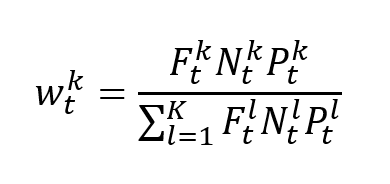
Use of the CSI 300 index in asset management
The performance of the biggest and most liquid stocks listed on the Shanghai and Shenzhen stock exchanges is frequently monitored by investors using the CSI 300 index, which serves as a benchmark for the Chinese equity market. Asset managers use the index to compare the returns on their portfolios to market returns and to decide which investments to make. The CSI 300 index, which is focused on China’s domestic A-share market, may not accurately reflect the entire Chinese market, it is important to note. To gain a deeper understanding of the Chinese equity market, investors should also take into account other indexes like the MSCI China index and the FTSE China index.
Benchmark for equity funds
We must take into account the index’s makeup in order to determine whether the CSI 300 index serves as a benchmark for equity funds in China. The top 300 companies listed on the Shanghai and Shenzhen stock exchanges, which together make up about 70% of the total market capitalization of the Chinese equity market, are represented by the CSI 300 index. The index provides a thorough representation of the Chinese economy by including businesses from a wide range of industries, including financial, industrial, consumer goods, and technology.
As a result, equity funds that invest in the Chinese equity market frequently use the CSI 300 index as a benchmark. Fund managers can assess their performance by comparing the returns on their investments to the returns produced by the index.
Financial products around the CSI 300 index
There are various financial products available to investors who wish to gain exposure to the Chinese stock market through the CSI 300 index.
- ETFs are investment funds traded on stock exchanges that aim to track the performance of an index. There are several ETFs that track the CSI 300 index, such as the iShares CSI 300 Index ETF and the China AMC CSI 300 Index ETF.
- Index funds are similar to ETFs in that they aim to track the performance of an index. Some examples of index funds that track the CSI 300 index include the E Fund CSI 300 Index Fund and the China Southern CSI 300 Index Fund.
- Futures and options contracts based on the CSI 300 index allow investors to speculate on the future performance of the index. The China Financial Futures Exchange offers futures contracts based on the CSI 300 index.
- Certificates linked to the CSI 300 index are investment products that offer exposure to the index. China Merchants Bank, for example, offers a range of certificates linked to the CSI 300 index.
Historical data for the CSI 300 index
How to get the data?
The CSI 300 index is the most common index used in finance, and historical data for the CSI 300 index can be easily downloaded from the internet.
For example, you can download data for the CSI 300 index from March 11, 2021 on Yahoo! Finance (the Yahoo! code for CSI 300 index is 000300.SS).
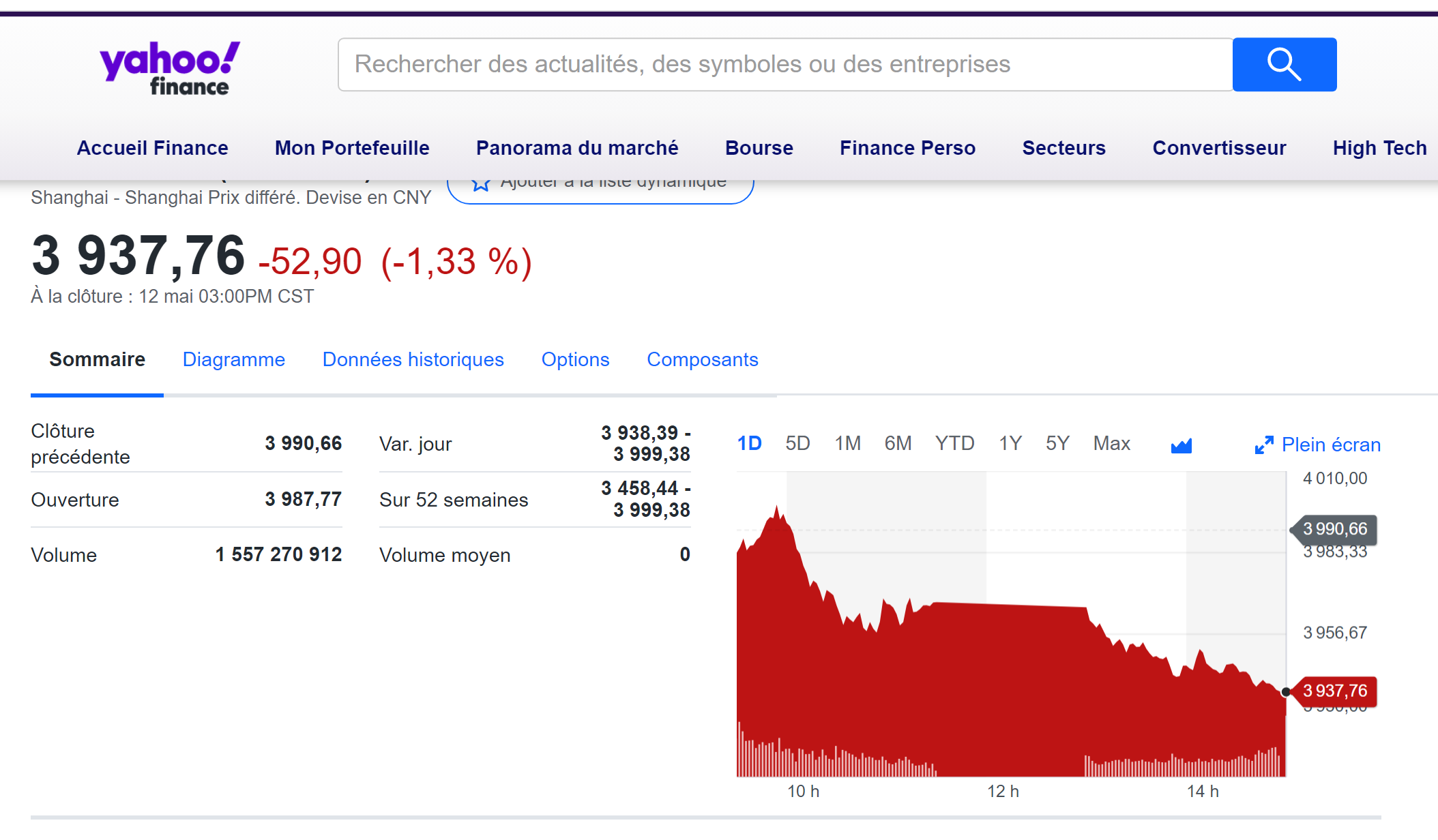
Source: Yahoo! Finance.
You can also download the same data from a Bloomberg terminal.
R program
The R program below written by Shengyu ZHENG allows you to download the data from Yahoo! Finance website and to compute summary statistics and risk measures about the CSI 300 index.
Data file
The R program that you can download above allows you to download the data for the CSI 300 index from the Yahoo! Finance website. The database starts on March 11, 2021. It also computes the returns (logarithmic returns) from closing prices.
Table 3 below represents the top of the data file for the CSI 300 index downloaded from the Yahoo! Finance website with the R program.
Table 3. Top of the data file for the CSI 300 index.
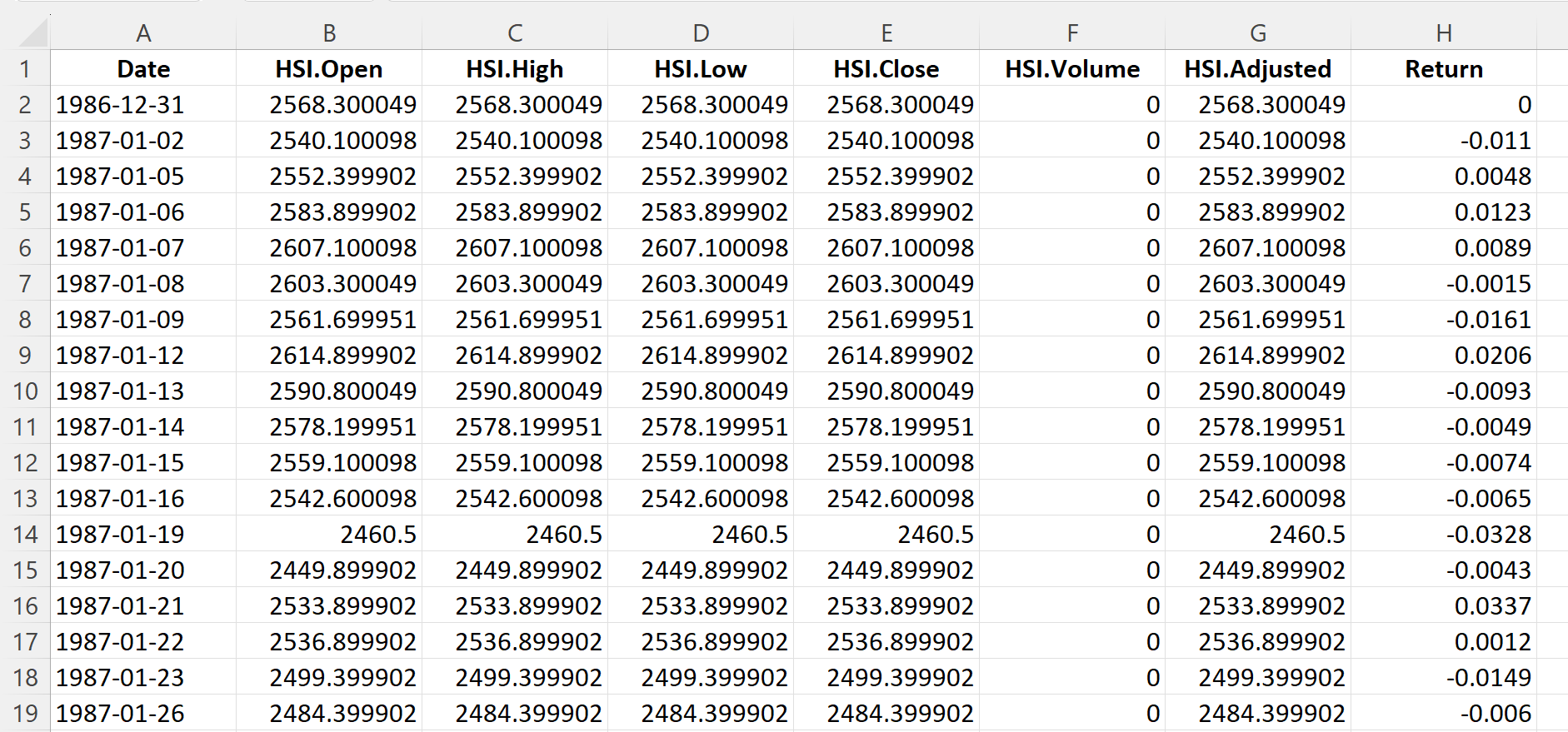
Source: computation by the author (data: Yahoo! Finance website).
Evolution of the CSI 300 index
Figure 1 below gives the evolution of the CSI 300 index from March 11, 2021 to December 30, 2022 on a daily basis.
Figure 1. Evolution of the CSI 300 index.

Source: computation by the author (data: Yahoo! Finance website).
Figure 2 below gives the evolution of the CSI 300 index returns from March 11, 2021 to December 30, 2022 on a daily basis.
Figure 2. Evolution of the CSI 300 index returns.
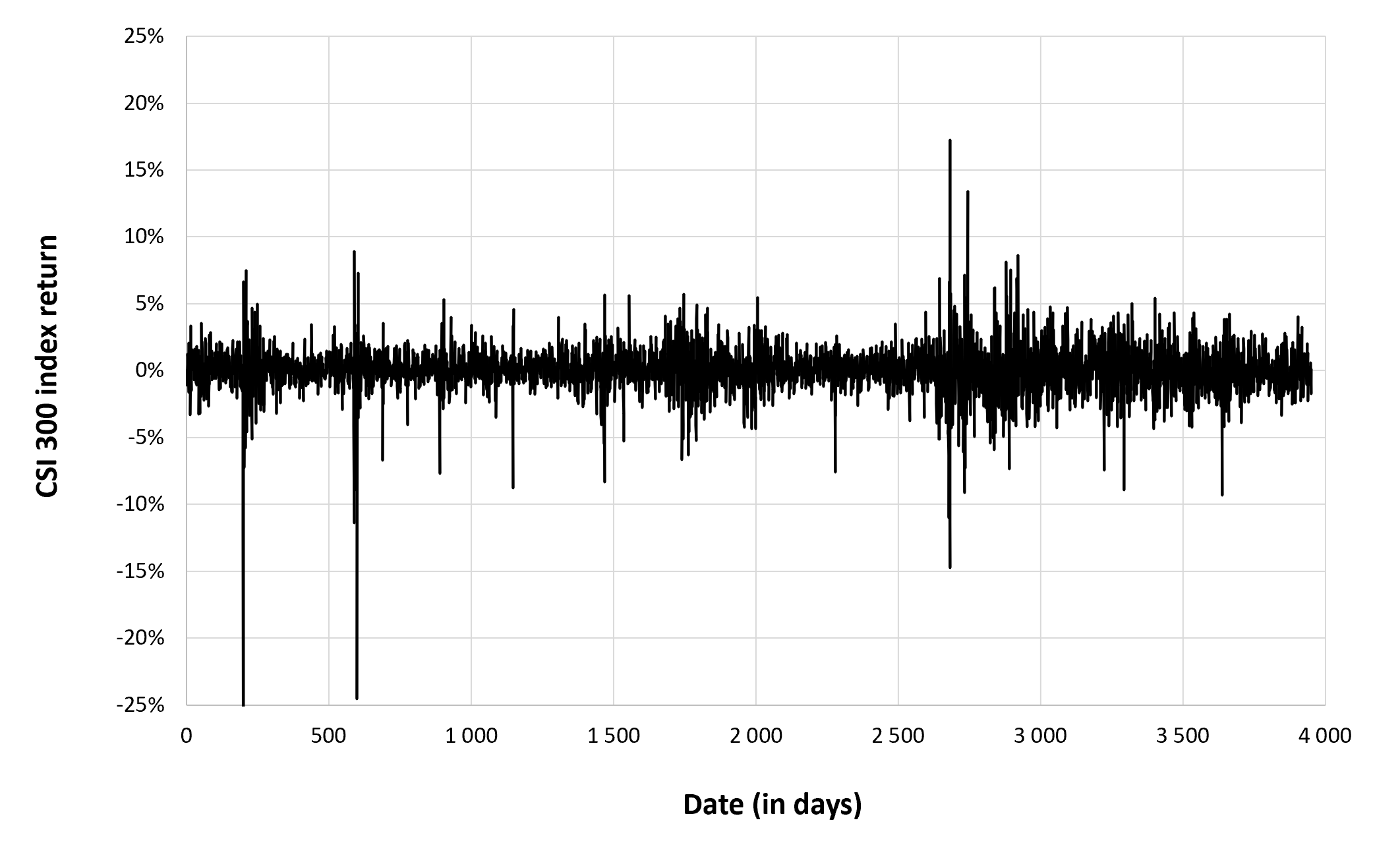
Source: computation by the author (data: Yahoo! Finance website).
Summary statistics for the CSI 300 index
The R program that you can download above also allows you to compute summary statistics about the returns of the CSI 300 index.
Table 4 below presents the following summary statistics estimated for the CSI 300 index:
- The mean
- The standard deviation (the squared root of the variance)
- The skewness
- The kurtosis.
The mean, the standard deviation / variance, the skewness, and the kurtosis refer to the first, second, third and fourth moments of statistical distribution of returns respectively.
Table 4. Summary statistics for the CSI 300 index.
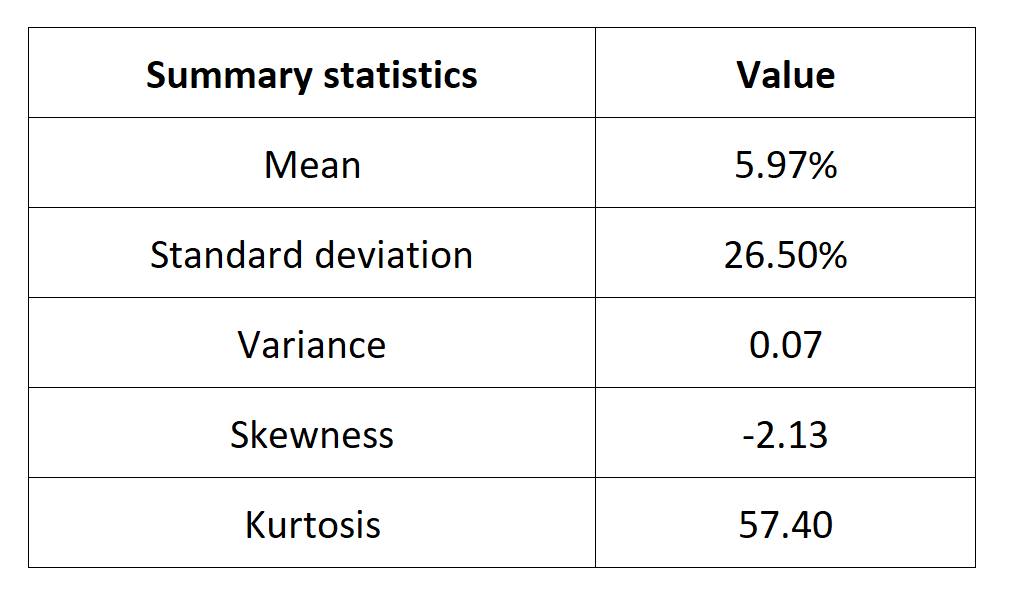
Source: computation by the author (data: Yahoo! Finance website).
Statistical distribution of the CSI 300 index returns
Historical distribution
Figure 3 represents the historical distribution of the CSI 300 index daily returns for the period from March 11, 2021 to December 30, 2022.
Figure 3. Historical distribution of the CSI 300 index returns.
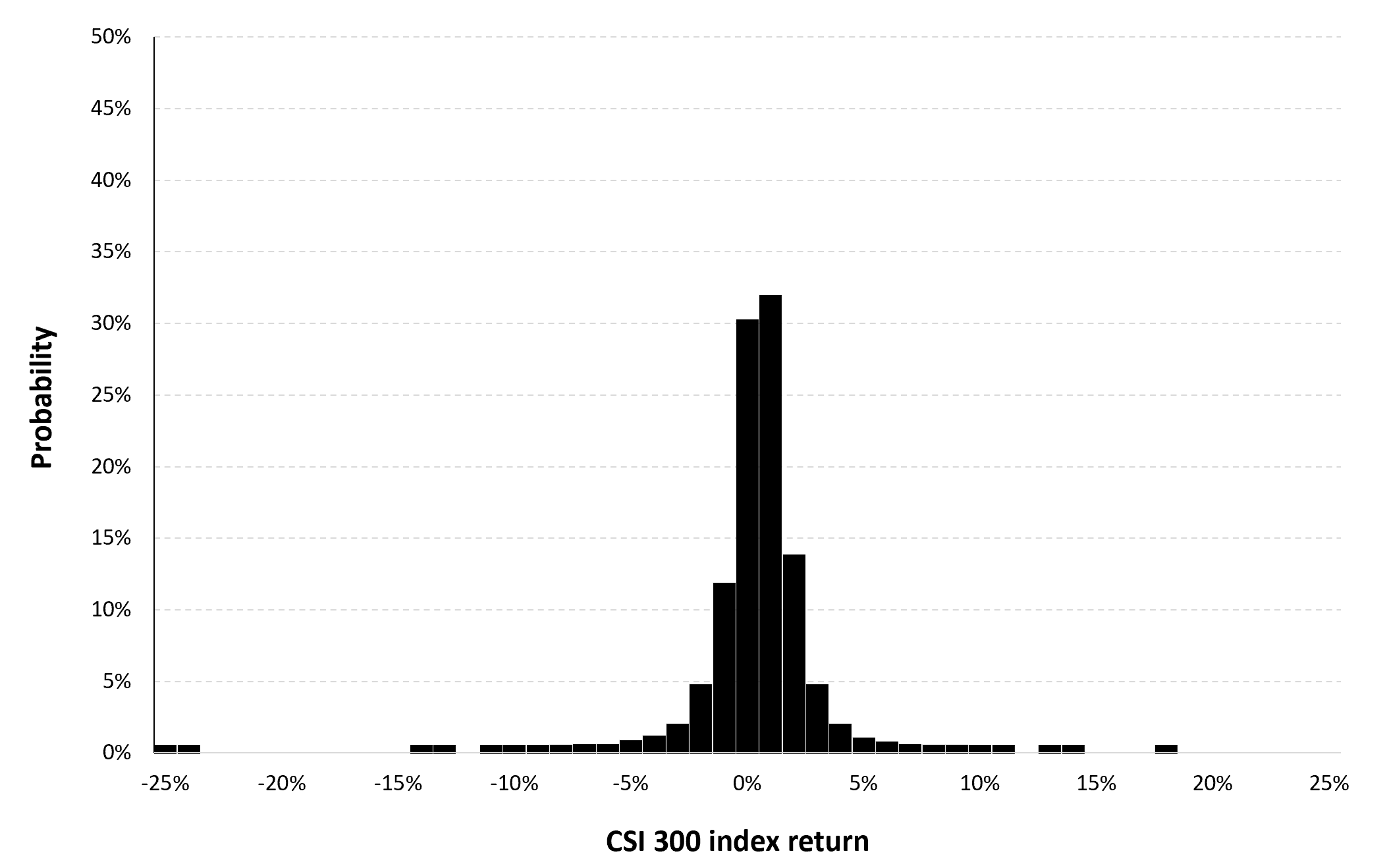
Source: computation by the author (data: Yahoo! Finance website).
Gaussian distribution
The Gaussian distribution (also called the normal distribution) is a parametric distribution with two parameters: the mean and the standard deviation of returns. We estimated these two parameters over the period from March 11, 2021 to December 30, 2022. The mean of daily returns is equal to 0.02% and the standard deviation of daily returns is equal to 1.37% (or equivalently 3.94% for the annual mean and 28.02% for the annual standard deviation as shown in Table 3 above).
Figure 4 below represents the Gaussian distribution of the CSI 300 index daily returns with parameters estimated over the period from March 11, 2021 to December 30, 2022.
Figure 4. Gaussian distribution of the CSI 300 index returns.
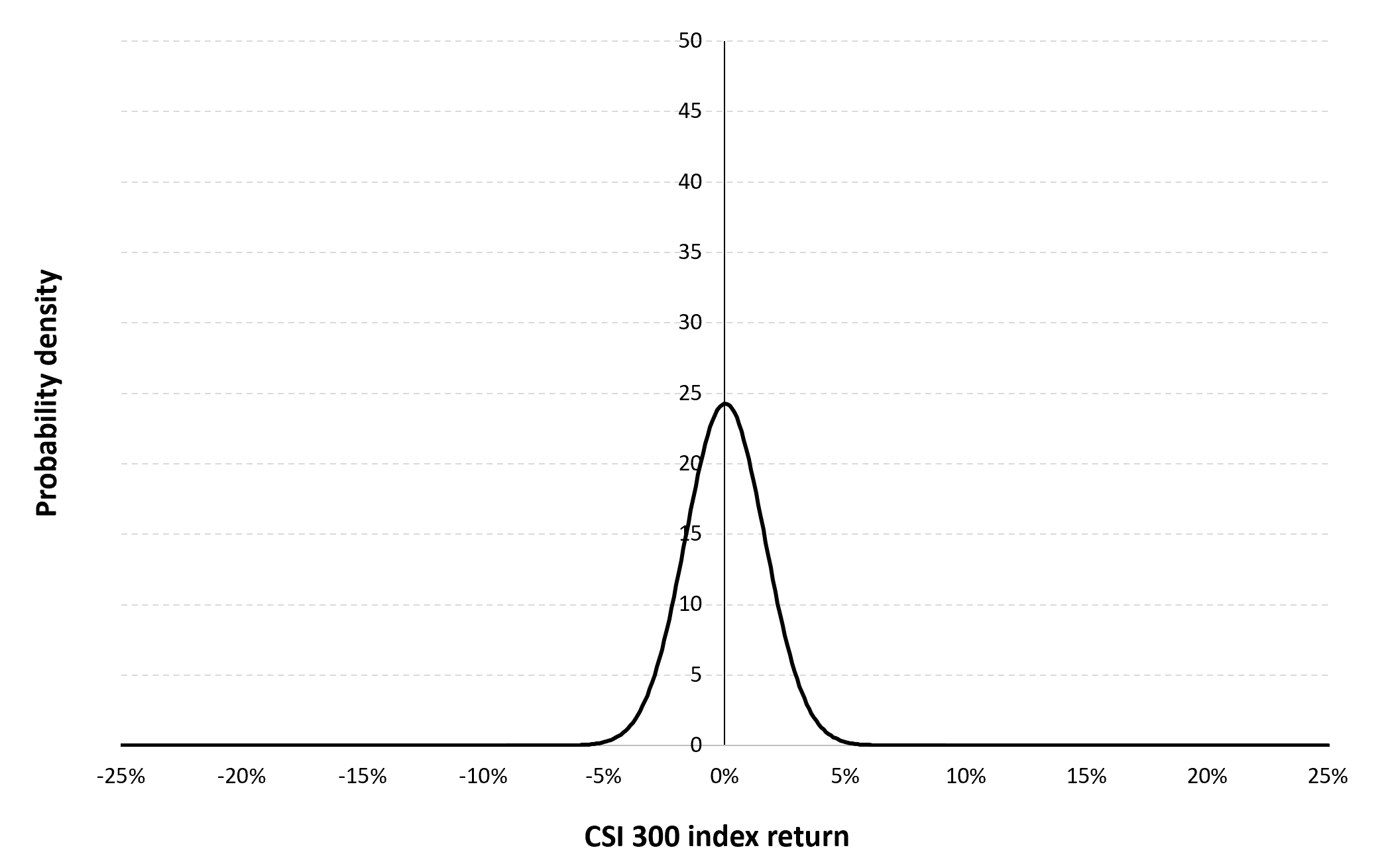
Source: computation by the author (data: Yahoo! Finance website).
Risk measures of the CSI 300 index returns
The R program that you can download above also allows you to compute risk measures about the returns of the CSI 300 index.
Table 5 below presents the following risk measures estimated for the CSI 300 index:
- The long-term volatility (the unconditional standard deviation estimated over the entire period)
- The short-term volatility (the standard deviation estimated over the last three months)
- The Value at Risk (VaR) for the left tail (the 5% quantile of the historical distribution)
- The Value at Risk (VaR) for the right tail (the 95% quantile of the historical distribution)
- The Expected Shortfall (ES) for the left tail (the average loss over the 5% quantile of the historical distribution)
- The Expected Shortfall (ES) for the right tail (the average loss over the 95% quantile of the historical distribution)
- The Stress Value (SV) for the left tail (the 1% quantile of the tail distribution estimated with a Generalized Pareto distribution)
- The Stress Value (SV) for the right tail (the 99% quantile of the tail distribution estimated with a Generalized Pareto distribution)
Table 5. Risk measures for the CSI 300 index.
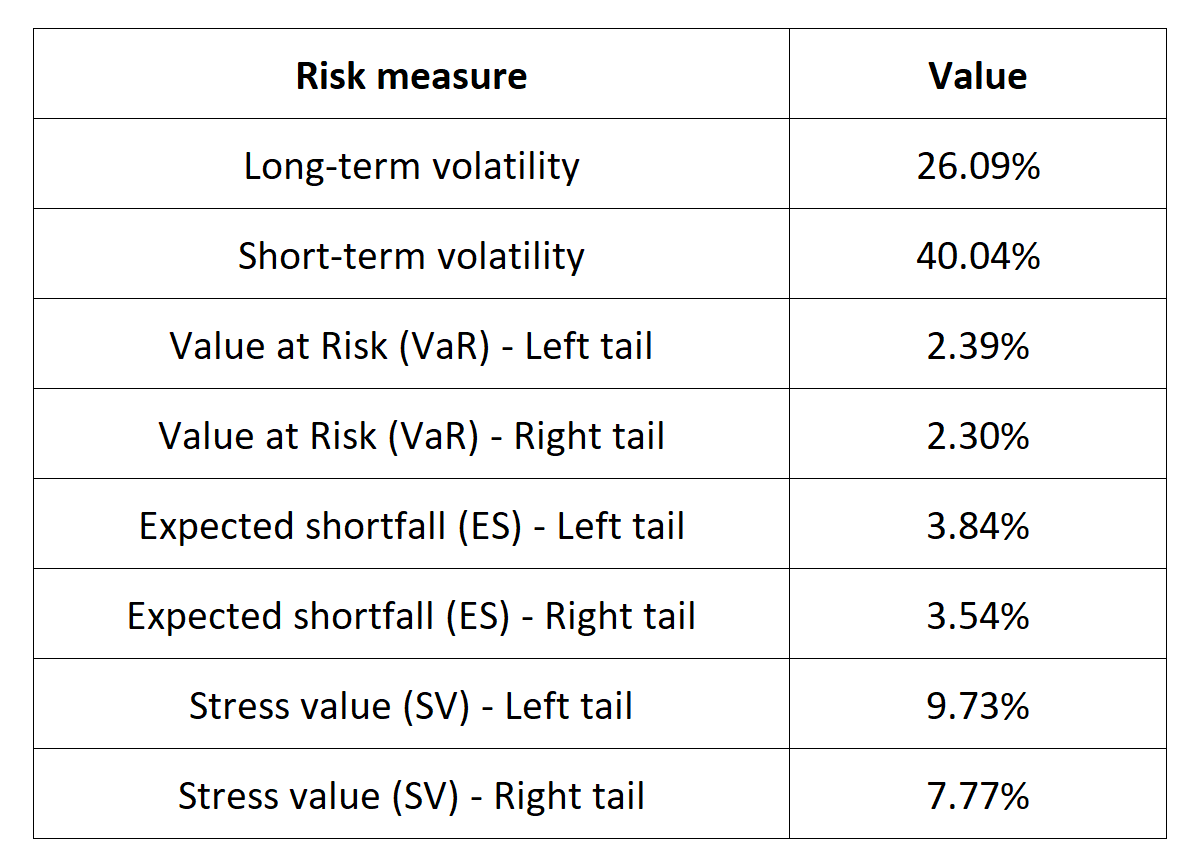
Source: computation by the author (data: Yahoo! Finance website).
The volatility is a global measure of risk as it considers all the returns. The Value at Risk (VaR), Expected Shortfall (ES) and Stress Value (SV) are local measures of risk as they focus on the tails of the distribution. The study of the left tail is relevant for an investor holding a long position in the CSI 300 index while the study of the right tail is relevant for an investor holding a short position in the CSI 300 index.
Why should I be interested in this post?
For a number of reasons, management students (as future managers and individual investors) should learn about the CSI 300 index. The CSI 300 index is a key benchmark for the Japanese equity market, which is one of the world’s largest market. Understanding how the index is constructed, how it performs, and the companies that make up the index is important for anyone studying finance or business in Japan or interested in investing in Japanese equities.
Individual investors can assess the performance of their own investments in the Japanese equity market with the CSI 300 index. Last but not least, a lot of asset management firms base their mutual funds and exchange-traded funds (ETFs) on the CSI 300 index which can considered as interesting assets to diversify a portfolio. Learning about these products and their portfolio and risk management applications can be valuable for management students.
Related posts on the SimTrade blog
About financial indexes
▶ Nithisha CHALLA Financial indexes
▶ Nithisha CHALLA Calculation of financial indexes
▶ Nithisha CHALLA The business of financial indexes
▶ Nithisha CHALLA Float
Other financial indexes
▶ Nithisha CHALLA The S&P 500 index
▶ Nithisha CHALLA The FTSE 100 index
▶ Nithisha CHALLA The KOSPI 50 index
▶ Nithisha CHALLA The Nikkei 225 index
About portfolio management
▶ Youssef LOURAOUI Portfolio
▶ Jayati WALIA Returns
About statistics
▶ Shengyu ZHENG Moments de la distribution
▶ Shengyu ZHENG Mesures de risques
Useful resources
Academic research about risk
Longin F. (2000) From VaR to stress testing: the extreme value approach Journal of Banking and Finance, N°24, pp 1097-1130.
Longin F. (2016) Extreme events in finance: a handbook of extreme value theory and its applications Wiley Editions.
Business
Wikipedia CSI 300 Index
Capital What is the CSI 300 Index?
CEI data China Index: CSI 300 Index: Financial
Data
Yahoo! Finance CSI 300 index
About the author
The article was written in May 2023 by Nithisha CHALLA (ESSEC Business School, Grande Ecole Program – Master in Management, 2021-2023).



